Oscar Peterson, Yapa, Post Christmas Angst & Lilly Dresses Up
Monday, December 31, 2007
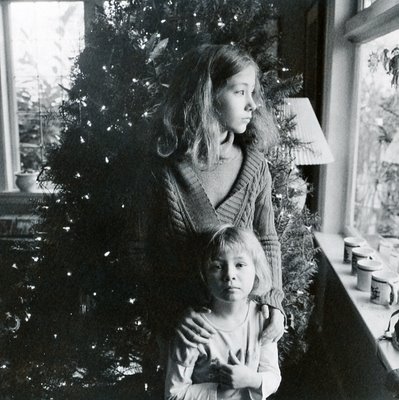
The Quechua (Peru/Bolivia/Northern Chile/Northern Argentina) word yapa (that y is pronounced like the J of Japan) is used in South America to mean something that you get extra particularly after you pay for it. Thus 20% more Kellogs Corn Pops would read 20% yapa in Argentina.
We usually have Rebecca and Lauren on Saturdays but some last minute changes meant that they slept over Saturday night and we had them yesterday until the evening. For me it was a lot of fun even if it took me away from my holiday reading. Because they both slept in our bed I was relegated to what used to be Hilary's room. I had my tall pile of books so I did not mind. Both our cats, Toby and Plata also decided to sleep with me as it was much more quiet.

Of late Rebecca has been listening, over and over, to Very Tall- The Oscar Peterson Trio With Milt Jackson . She particularly likes Nat Adderly's Work Song . Driving over to her piano lessons almost a year ago, just as we crossed the bumpy intersection of 41st and Cambie, there was a loud crash. Rebecca wondered if a tire had blown. I told her it was the sound of cymbals from the Work Song. Since then she wants to listen to this particular song (with Milt Jackson playing vibes she has an added reason) recorded in 1962 when stereophonic meant just that in jazz records.

Rebecca was sad to find out that Peterson had died recently. We played lots of Peterson yesterday including a three casette (Book-of-the-Month Club recording) called Easy Does It. We also played some LPs called The Astaire Story featuring Oscar Peterson, Barney Kessel, Charlie Shavers, Flip Phillips, Ray Brown and Alvin Stoller. Fred Astaire sings and in some memorable cuts, tap dances as percussion to Peterson's piano. While Rebecca did not particularly notice this I know that it will lodge in her brain for future use. She did tell me, "I have a new Peterson favourite and that's Hymn to Freedom." She put on a light blue satin slip of Rosemary's and danced a slow ballet to it.

Late afternoon I asked both Rebecca and Lauren to pose by the Christmas tree for my Mamiya. I had loaded the Polaroid back with 3000 ISO b+w. I wanted to take pictures without my usual artificial lighting and I wanted to capture some post-Christmas angst. The idea was to portray the concept of a little girl who grows up and finally understands that Santa Claus.... Rebecca was very upset about this (and also as we did not have her usual special hair brush to fix up her hair) since she said that young girls might read this blog. I told her I didn't think that would happen. She quieted down and I was able to take my pictures. After the pictures she went to her favourite computer pastime of dressing up dolls and or young celebrities. I don't aprove and I tell her so. But Rosemary says it is perfectly normal for a 10-year-old to want to dress up dolls. She was doing this dressing up while holding Lilly. She had asked Rosemary's assistance to cut up some black satin to make a cape and mask so that Lilly could be a bandit. I took her portrait, this time without protest and I smiled as I thought of my wife Rosemary playing dress up dolls at her age. How wonderful!
A full day of exquisite yapa.
The Solarized Polaroid - Rebecca Reversed
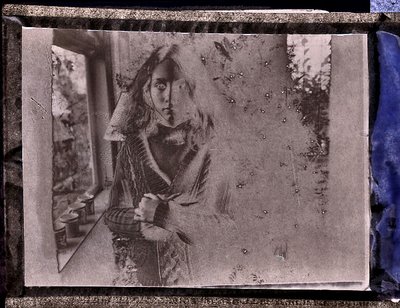
These days after Christmas are good days to plan for the next year and to experiment. Even if the tried and true techniques work just fine it is gratifying ot find new ways of doing things. In some cases these new ways hinge on working on old ways. I only once used Polaroid's extremely fast 667 which is a 3000 ISO b+w film. I used it to test my setup for a photo of Gillian Guess some years ago for Saturday Night. I had been instructed not to light the photograph so I used only the bare bulb over the bathroom sink. I had used Ilford's Delta 3200 film in the 120 format that matched the Polaroid's speed.
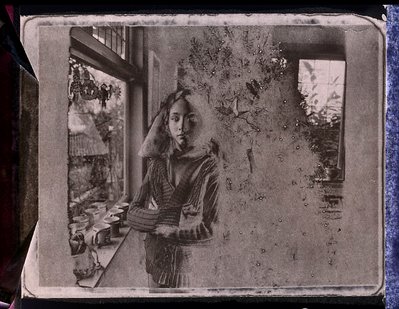
The peeled negative of the 667 Polaroid looks partially positive and negative. When I scanned these "negatives" of Rebecca by the Christmas tree and reversed the image in Photoshop the results looked a lot like partially solarized photographs.
Sunday, December 30, 2007
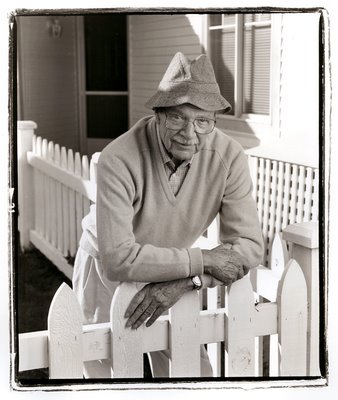
The other day I met retired Province arts writer Lee Bachus. I had never seen him before and I had no idea what he looked like. The shortish man with owl glasses and an almost permanent whimsical smile jarred me into thinking of all the talented writers who have worked for our local newspapers and how most have been forgotten. And once they have been forgotten I could assert that they never existed. And this is more so when there are few online archives where these writers can be found. In our modern 21st century era if you cannot be found on Google you do not exist.
When I first arrived in Canada I came from the tradition of appreciating very good editorial cartoonists in Mexico City newspapers. My favourite was Abel Quezada who worked for the daily Excelsior. Not too known is the fact that Quezada also managed to illustrate more than 11 New Yorker covers.
I had no idea what a salmon derby was nor did I understand how or why the Vancouver Sun sponsored this event. But I do remember seeing the wonderful cartoon illustrations by Len Norris on the subject in the 70s and early 80s and I was hooked by his humour. I was astounded to find out (driving one day by the lower road to the Horseshoe Bay ferry terminal) the Tiddlycove indeed did exist. It was thrilling to be assigned by Western Living (I am not sure) to photograph Len Norris a few years before he died in 1997. By then he lived in a senior community in White Rock. I was not surprised that he had a white picket fence surrounding his property. I asked him to wear a hat much like the one he would draw on his unlucky fishermen.
Of the Vancouver Sun Salmon Derby there is not much information. Did it exist? Did it stop being an annual event when the salmon stocks were depleted? The important thing as we remember the events of this past year is to remember some of the others that helped shape the Vancouver we live in today. And one important contributor to our city was certainly Len Norris.
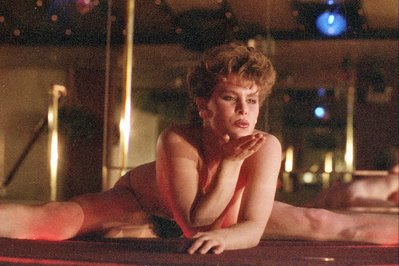
Some 27 years ago Gary Taylor invited Rosemary and me for New Year’s celebrations at his Rock Room. The entertainer was Roy Forbes who then went by the name of Bim. I remember being astounded when it came time for the countdown as he took out a sheet of music that had the lyrics for Auld Lang Syne! As soon as it was midnight Forbes sang, reading from the sheet. As soon as he finished he opened a bottle of Moët Chandon and sprayed the crowd. I was in the front so I was soaked. Three Polish sailors came up to me and told me I had an uncanny resemblance to Roman Polanski. For many years later I received a Christmas card from them wishing me a long life!
Rosemary would certainly no longer go to a New Year's party of any kind. We would rather stay at home and read and even make it an early night to bed. The concept of being hugged by complete strangers at the strike of midnight now feels alien.
But as I try to navigate away from porn sites when I look up what I think are innocent words on Google I remember fondly (so much nicer because of the distance of time, perhaps?) the days when my friends and I haunted the Vancouver strip parlours which were euphemistically called show lounges. For many reasons, including assignments for Vancouver Magazine and the Globe & Mail I had managed to photograph most of the luminary dancers and the proprietors of the bars. One of them was Gary Taylor who had a double-bill club on Hornby called Gary Taylor's Rock Room. It was the Rock Room on the first level but it was a show lounge below. My friend Les Wiseman would often go to listen to bands and as soon as our interest waned we would go below.
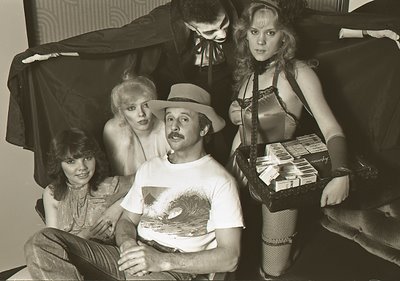
As far as I can figure it Vancouver, known at one time for the best strip parlours now only has three within its city. They are Brandy's (not far from where Gary Talor used to hold court), the Cecil Hotel and Tony Ricci's No 5 Orange. I would assert that the days remaining for these three are limited. They are unable to compete in this age of instant communication with ever so "intimate" chats on line with people we don't know or "visits" to porn sites with our credit cards in hand. While the strip joints were loud we could at least say we were going to converse with friends. How can that compete with the comfort of a monitor at home. The beer in one hand and the other....
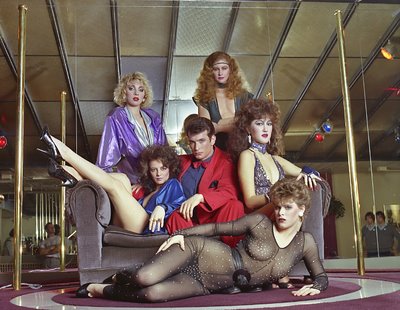
In those days I could walk to any of the joints and the man at the bar would slide a glass of soda water in my direction with a smile. They all knew my preferences. And so did I. But I no longer go to those remaining strip joints of our city. Peter Busby's firm is going to soon demolish the Cecil. Not too long ago I was chatting with Ricci and asked him if he had any plans. His answer, "I don't know how to do anything else. This joint, for better or worse is my life." I have not seen Gary Taylor for some years but I do think that in spite of everything that others might say these men did give us pleasure, that in retrospect wasn't all that shabby.
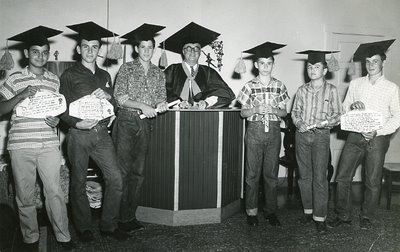
The great American landscape photographer Ansel Adams pioneered a system of photography, the Zone System, in which on any scene to be photographed there were three options.
1. To do nothing and consider the scene normal.
2. To notice few steps between blacks and whites.
3. To notice a great combination of blacks, grays and whites.
With his zone system the first scene on a separate negative would be processed normally. The second one would be expanded and the third compacted or compressed.
At one time a young family would move into a house and plant a young cherry tree in the back yard. The family would grow, the children would become adults, and the tree would be there for all to notice as a beacon of their linear existence. If any of those children would have looked at an illustrated map of the world they would have noticed a sleeping Mexican under a cactus in Mexico, a woman with a conical rice planting hat in China, a man in short leather pants with braces in Switzerland (or Bavaria?) and a gaucho on horse back swinging boleadoras in Argentina. At that time I would have drawn the borders of most African states in red.
I did not grow up as a member of a "normal" family that stayed put so my life is divided into periods. They are periods that begin "here" and end "there". If I were to compare this with a contemporary phenomenon I would do so with the mundane state of the home computer about to get its weekly or monthy defragmentation. I would also compare it to one's emails in which one opts to compact. Both methods attempt to remove the idle period between activity and make it into a more compressed and efficient whole.
I lived in Nueva Rosita, Coahuila for exactly one year in the mid 1950s. Those who were living there and went to the school, must have only noticed me as a passing moth or other type of fast-flying insect. Many of those Nueva Rosita children and their parents remained there or moved to the near environs. They intermarried and kept their connections to this day. They lived and live in small towns, Nueva Rosita, Sabinas, Cloete, Múzquiz and in Eagle pass in Texas. A few moved to San Antonio but stayed in touch through school reunions. Our Rosita school went as far as grade 8. Only a few of us went to boarding schools in Texas. Most continued with their school studies in Eagle Pass High School. The Eagle Pass High School reunions kept them in touch.
Through my efforts to find out my own roots in that year in Nueva Rosita and to locate the five boys (in the photograph below, from left to right that's me, Rick Juvé Forns, Enrique Serna, Remigio Martinez Mueller, Sammy Simpson and Steve Frazier) of my class I have posted a few blogs here. These blogs have been found and I have made new contacts with my own class mates and those that were under me in the 7th, 6th grades and beyond. As an "uppreclassman" I tended not to notice them so I have few memories of them.
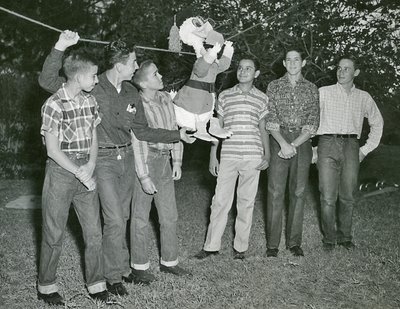
These contacts aided by Google, nurtured by Skype and email make me feel like a computer that has been lightened by an efficient and ultimately satisfying defragmentation. My compact one year in Nueva Rosita, to use the Ansel Adams comparison, has been expanded and added to the other normal periods of my life. And at the same time it has been a long string of surprises to find out how these "new" old friends have managed with their lives. I have found that a few became teachers as they were influenced by my mother and remember her to this day with affection and awe.
I wrote of a mysterious and handsome engineer called Juan Jaime and how he would leave his magazines (he subscribed to True, Argosy and Esquire) in the reading room of the American Hotel in Nueva Rosita. It was in those magazines that I first discovered what women looked like beneath their clothes. From a gracious 89-year old Jeanette Sandford Frazier (mother of Steve, one of the boys in my class and the remote and beautiful Cornelia I adored from afar) in a Skype conversation a few days ago (from her home in Eagle Pass, where I once saw John Wayne in cowboy books walk on the boardwalk near the Eagle Pass Hotel) I received more information on Jaime. Jaime's father, a real general in the Mexican army, she told me, had saved the life of revolutionary presidente Álvaro Obregón. Bertha Slaughter (whose unamarried name of Múzquiz is one of the many Múzquiz who seem to have left their influence in the area) was widowed when her husband died in an accident accompanied by his mistress landed Juan Jaime and married him. I remember Bertha because her son Johnny was my friend even though he was in grade 7. Mid year he was struck by meningitis and he stopped coming to school. He, too died.
The stories of these people merits a book by someone but certainly not from me. If I were to begin I would do so with Jeanette Sanford Frazier ( a sort of Scarlett O'Hara of Northern Mexico) whose husband died in an airplace crash in the Sierra Madre in the early 50s. She was left to fend for herself in managing an hacienda in Cloete, Coahuila and having to educate her two boys, Steve and Roger and daughter Cornelia. It was Jeanette who befriended my lonely mother and brought so much joy to her life. After I left for Austin, Texas the friendship grew. Roger a narcotics agent died in an autombile accident struck by a driver high on drugs when Roger was bringing in two suspects. Steve married a woman from Múzquiz (a town in Coahuila and a surnambe of fame in the area) and kept with his father's business of heavy equipment in Mexico City. Cornelia is a widow who lives in Eagle Pass (and drives her mother around ) and manages, probably as well as her mother her hacienda in Múzquiz.
Best of all, after 47 years I was able to thank Jeanette Sandford Frazier for her kindness. Her comment to me was, "Your mother and I had so much fun." I told her that I remembered her Buicks. "My husband always had Buicks. Cornelia says that only Buicks and Lexus do not have to be repaired often."
More Nueva Rosita
And More

The period between Christmas Eve and new year's eve is ample proof for me on the relativity of time.
I thought about it when I took Lauren's Polaroid on Christmas Eve and she asked me if she could see it. Once I had pulled the Polaroid from the back attached to my Mamiya RB I told her that we had to wait for 60 seconds. She rapidly counted to 6 and asked me to see the picture. I had to correct her and tell her that she had to to the same thing 9 more times. She was confused.
All of us must remember the last day of school, in that last period of the school day in the heat of summer and how it never ends, particularly when we look at the clock. In our youth we are unaware that sometimes we can control the flow of time as I wrote here.
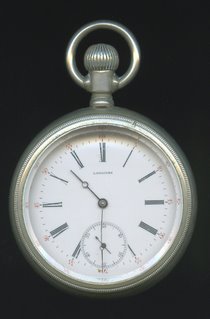
My favourite day of the Christmas season is Christmas Day. Since we celebrate Christmas Eve we do nothing on the next day. By nothing, I mean that Rosemary and I stay in bed. We have our usual breakfast (in bed, and would have read our daily delivered New York Times as they publish on Christmas Day. The delivery man took the day off.) and then while Rosemary dozes off I read and read. I may get up to replenish my tea or picar on the previous day's leftovers but I do stay in bed all day without one ounce of guilt. And that day lingers into the next into what must be the most languid and wonderful days of the year.
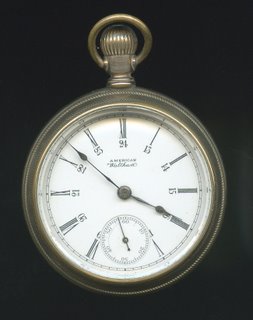
Those days were an eternity in my youth as I anticipated the Epiphany on January 6 and all those neat toys (an Erector set one year). They were unbearably long and dull and hot (Buenos Aires Decembers are hot). Now those days seem to be compressed and before I know it is January 2 and the stress on how I will make do the coming year is a reality.
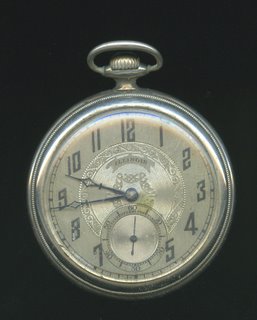
I can only wish that I could make those days stretch out as I try to go through the pile of new books (30% off on all hardcovers yesterday at Chapters. I bought four.) on my bedside table. But I know that the days will race away from me and my only hope is that I will be around for a few more Christmas Eves with my grandchildren.
Perhaps they will not learn (for a while) that time is fleeting.
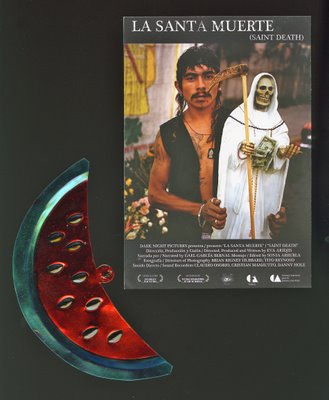
The envelope from Paris arrived on Christmas Eve like clockwork. I never suspected that the French postal system was any better than the Mexican one! But for the last few years we have received a Christmas card from poet/novelist/environmentalist/diplomat/etc Homero Aridjis and his wife Betty. Aridjis is now the permanent Mexican representative to UNESCO in Paris. Of Aridjis I have written at length in this blog.
Here is one with a connection to Vancouver's George Bowering. The Christmas card always has a little cellophane bag with a Mexican tin Christmas ornament. I have a long string of them (I use red wool and Rebecca hung them on the inside of our front living room window this year). To this collection we can now add the watermelon. The card was not an ordinary one but a postcard announcing a documentary film by Homero and Betty's daughter Eva (screenplay, director and producer) La Santa Muerte narrated by actor Gael García Bernal.

I have yet to see the film but I read with relish Homero Arijis's own interpretation of the Mexican cult for death in his book La Santa Muerte. Since it has yet to be translated into English, an inkling of the plot can be read in this essay from the New York Times.
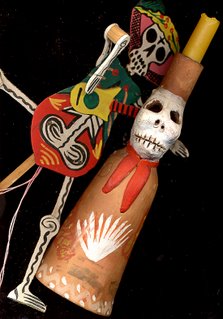
While the picture on the poster was on the sombre side I was delighted to find out that Aridjis has a new book out called Sicarios (Spanish for a hired assasin, lat. sicarĭus). The little deathly candle stick seen here is Pancho El Esqueleto. His story is here.
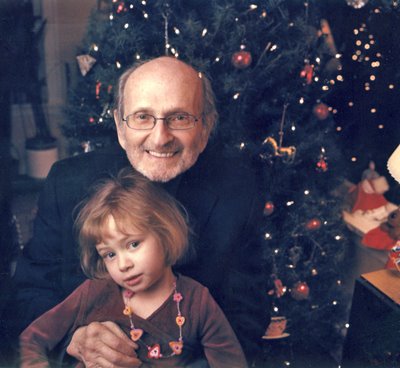
Even though it was only the second time that Abraham Jedidiah Rogatnick spent Nochebuena (Christmas Eve) with us it has become what feels like a long-time and pleasant custom. Abraham was late and Lauren kept asking,"Where's Abraham? When is he coming?"
There were two mutual conditions for his coming. On the one hand we told him not to bring anything (last year he spent a fortune in presents for everybody) and for my part I had to make sure that whatever I offered Abraham for dinner had no traces of onion. Many years ago Abraham found out about his allergy to onions while in a bus on mainland China.

Our menu was a salad of sliced tomatoes, fresh bocconcini and fresh basil, steamed carrots, green beans and white rice. Our main course was what I would call a two-front course. Rosemary put a chicken that Ale brought from Lillooet in the oven and I cooked tenderloin beef shish-kabobs. I made one without onions. To drink some had ginger ale and others an Argentine Malbec.

It was the dessert that was the success. When we first came to Vancouver I photographed a French-Canadian soprano (she was very tiny and very pretty) Ginette Duplessis who invited us to her house for dinner. Here is the recipe for her Pernod Pairs Flambé which were particularly enjoyed by Abraham.
Half, peel pairs.
Melt 1/4 cup butter / bubble not brown.
Put pears in, caramelize
2 oz Pernod
Fire it / let it burn till fire goes out.
Put in three tablespoons berry sugar.
Low temperature - add one cup of heavy whipping cream.
Put high to mix well.
I personally cannot stand Pernod or anything with a licorice taste. But the fired Pernod and the cream go through some sort of chemical change and the result is delicious. This morning I had what was left for breakfast with some very strong Indian cardamom tea.

Our other guest was Carlos Zamora Arcaraz whom we have known since he was born 32 years ago im Mexico City. His parents and his three sisters have been our friends since both our families moved to Arboledas, Estado de Mexico in 1971. Our daughters have ketp in touch traveling to Mexico and Carlos and his sisters coming to stay with us in Vancouver. This time around, Carlos (below left), who is a heavy duty star-salesman for HP Computers in Monterrey, Mexico had to balance pleasure with work involving his cellular phone and his laptop.
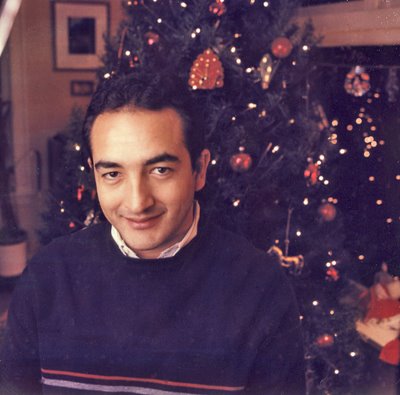
Abraham circumvented the not bringing anything by doing origami animals and origami Christmas ornaments for our tree. Since Abraham is an expert on Venice my gift to him was a photograph of a Venetian gondola that was purchased and restored by the Vancouver Maritime Museum. Abraham knew everything about the boat (he almost bought it) that in a travesty of Vancouver provincialism was almost converted into a gelato stand!
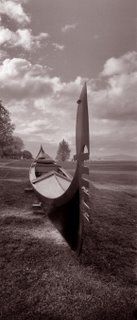
Abraham Jedidiah Rogatnick (the Harvard trained architect) that I would compare to an almost all-knowing philosopher king (particularly on anything related to Venice) is traveling with Mayor Sam Sullivan and partner Lynn Zanatta on boxing day for a 6-day tour of Venice. In a way Sullivan's Beatrice will be Lynn as Abraham will read sections of Dante Alighieri's Commedia in Italian in previously selected spots in the city.
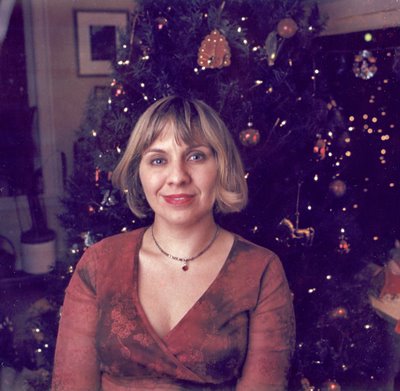
Abraham was most interested in my copy of Henry James's Italian Hours which he eventually took home to read while forgetting his Venetian gondola photograph. He could not remember the name of the palazzo where James had stayed in Venice. We found it here and it is called Palazzo Barbaro.
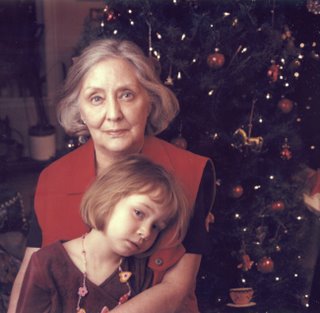
I do believe that in some way this trip to Venice will be a turning point for our mayor and I hope that it is all for the better of our city. Sullivan will have the best of company and we can only be happy that we shared with Abraham (85) another memorable nochebuena.

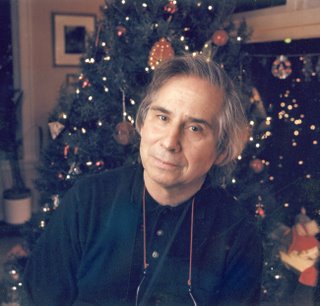
It is appropriate that Lauren and I appear last here. I was tickling Rebecca and Lauren (who is always there to defend her sister) swung back (for more momentum and force) with a crystal necklace (given to her by Hilary) in her hand and struck me in the forehead. I momentarily blacked out and quickly discovered I was bleeding. Today I have a painful chichón (bump) and cut and the realization that I am lucky that Hilary did not give Lauren a pen for Christmas. It all brought memories of Deborah Kerr being hounded by a couple of demonic children (similar to Lauren, perhaps?) in the 1961 film The Innocents based on Henry James's story The Turn of the Screw.

Christmas for me, besides representing an umbearably hot midnight Mass in the midst of a Buenos Aires summer, has always been about mechanical toys and things I wanted and mostly never got - no electric train, no motorbike no rifle. Even now, when I am past being excited about a new computer I think of gadgets. I think of gadgets I now don't want or need. This time around I have the ability to grant (when I can afford it) someone else's wish for a gadget or electronic equipment. I have already mentioned here how Rebecca is getting a glow-in-the-dark Sony clock radio/CD player tonight.
I have been thinking of stereo equipment as I was playing records yesterday with a Sony linear tracking turntable. I could never have afforded one when they were in fashion, but a few Christmases past I bought one for only $100 at a Sony Store because it had a cracked cover. I ordered a new cover for next to nothing and I have been happy with my obsolete turntable since.

Christmas 1977 I was working for a gay/bisexual publication Bi-Line and the editor told me to create and shoot an ad for one of their advertisers which was a semi-sleazy sound equipment retailer called Vancouver Sight & Sound that used Shakespeare's (Twelfth Night)quote:
If music be the food of love, play on...
as its main identity. At the time I had been seeing many alternative scene rock bands including one very strange one called E. It featured gary bourgeois (I think he liked his name like that) on keyboards and a beautiful light-as-air but very tall singer who went by the name of Deborah E. I suggested that Deborah E would make an excellent model.
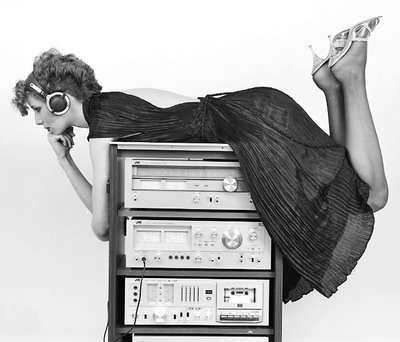
At the time political correctness had yet to arrive. We photographers shamelessly posed women, with not much on, by cars, floor lamps and anything else anybody would want to buy. Why not stereo equipment?
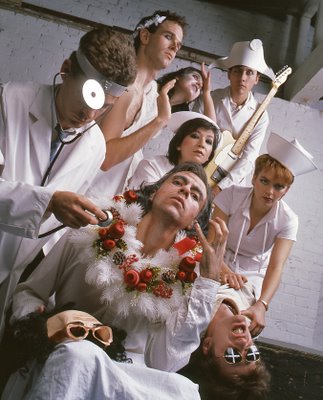
For Christmas 1980 Les Wiseman inaugurated a new feature idea for the then adventurous Vancouver Magazine. The In One Ear rock music column would feature a local band photographed and interviewed around a Christmas scene. This first In One Ear Christmas involved the hard core punk band the Subhumans. Others followed, DOA, the Modernettes and an even a more mainstream Kenny Coleman seen in that previous Modernettes blog. One of the strangest involved a band called Corsage. This was for Christmas 1983 when the alternative music scene's most interesting player was amateur golfer, professional grunge dresser and rock promoter Bud Luxford.
Of Corsage, Les Wiseman wrote as an introduction to that Christmas In One Ear:
Imagine, if you will, another sort of white Christmas, the kind that surrounds more of our metaphysically distressed than you care to imagine. Padded, white, quilted canvas walls, floor and ceiling; the glare from a 200-watt insect-repellent bulb that seems to do nothing for the white spiders that pop up between our subject's arm hairs. Imagine the purgatory of a young rock musician with a sense of the absurd, for we have just stepped through the doorway which leads to the Corsage Zone.
In the picture with Phil "The K" Smith in the centre, and clockwise from the upper left, Rodney Graham (the doctor), Chris Grove, Scout Farelaine,Bill Napier-Hemy he's far right in this link, Jade Blade, Dale Powers and Richard Walker. Of Richard Walker even my Rebecca would know that's Tony Baloney. Tony Baloney is wearing a blonde wig, far right in the third picture in this link.
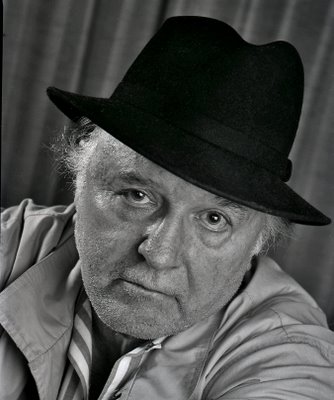
The photographs in my files have no date and I never kept a copy of the Georgia Straight in which one appeared. My guess is that I took the pictures in the late 80s or early 90s. I can remember vividly everything else. I knocked on the door of one of the rooms in what was then the Pacific Palisades Hotel on Robson Street. It was run by Mel Zajak. He was discrete and liked to play golf so many movie stars (before Vancouver really became Hollywood North) stayed at his hotel. I photographed many of them but the most memorable was the melancholic man who opened the door, and said, "Please come in. I hope you don't mind but we are going to have lunch in together and we shall first drink a white wine." The man, unshaven and wearing a black hat, was actor Rod Steiger. I stared. He explained, "Today is Saturday and on Saturdays I never shave." We shared a club sandwich but I don't recall the wine. I was too fascinated by the charm and the kindness of the man who told me how he had read tons of books on Napoleon and read the headlines of French newspapers of the time in order for him get into the mind of Napoleon whom he played in the 1971 film Waterloo. But the most remarkable performance I have ever heard from an actor came after the coffee.
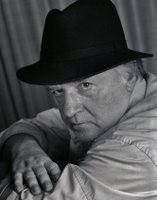
Steiger told me that the one part he had always wanted to play was Winston Churchill. He then recited in its entirety, Churchill's June 4, 1940 speech before the House of Commons:
...We shall not flag nor fail. We shall go on to the end. We shall fight in France and on the seas and oceans; we shall fight with growing confidence and growing strength in the air. We shall defend our island whatever the cost may be; we shall fight on beaches, landing grounds, in fields, in streets and on the hills. We shall never surrender and even if, which I do not for the moment believe, this island or a large part of it were subjugated and starving, then our empire beyond the seas, armed and guarded by the British Fleet, will carry on the struggle until in God's good time the New World with all its power and might, sets forth to the liberation and rescue of the Old. .
I closed my eyes and the man in the room was Winston Churchill. I broke the spell when on a lark I asked him what was the gum he chewed through most of In the Heat of the Night (1967) as Sparta, Mississippi, police chief Bill Gillespie.
"It was Dentyne cinnamon."
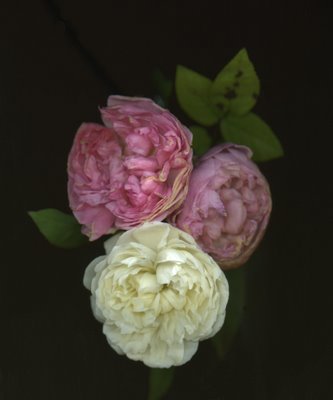
The Christmas Rose is not a rose at all but a Helleborus niger. It blooms about now but it gets unsightly black spots in our garden so we don't grow it. Perhaps this hellebore does not like our rain. Rosemary prefers the Heleborus argutifolious which flowers later in the winter.
My garden has been put to bed and I try not to look at the last of my decaying perennials and hostas disappear into the ground. Some of them are confused with our warmish weather and I would believe have adapted and become evergreen. An example is my handsome

Hypericum androsaemum 'Albury Purple' (right) which looks great and will remain like that unless we have a heavy snowfall which would break off the brittle stems.
But I have my very own Christmas Rose(s), if a bit worse for wear. They managed to open today in my winter garden. The roses are both English Roses bred by Shropshire rose grower David Austin. The pink one is Rosa 'St Swithun' and the white Rosa 'Fair Bianca'.
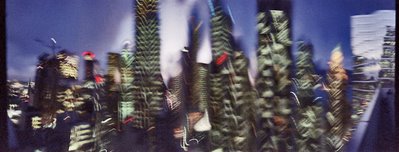
Even though I recently posted here some architectural photographs I am not an architectural photographer nor have I ever wanted to be one. The same applies to landscapes and when I see a good one I usually buy the postcard. An architectural photographer more often than not has to abide by rules that stipulate that the parallel lines of buildings have to be rendered so. These photographers have to master the swings and tilts of bellows 4x5 inch cameras so as to control the apparent distortion of wide angle lenses or when they shoot up on a tall building. Another tremendous challenge of the architectural photographer who might specialize in house interiors is that the light of the inside of the house (tungsten) has to be balanced to the usually stronger daylight of the outside.
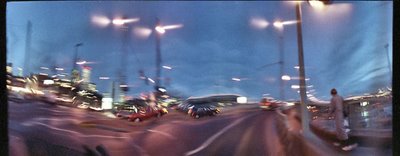
But I do have some landscape and architectural photographs in my files because I was ordered to take them by former Vancouver Magazine art director Chris Dahl.
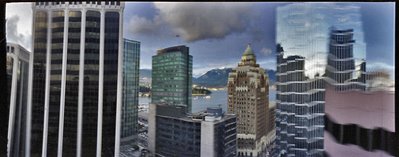
He could not tolerate photographers who specialized so he forced me to take all kinds of stuff I was not in the least interested in. And, of course, I now appreciate his nagging and the experience.
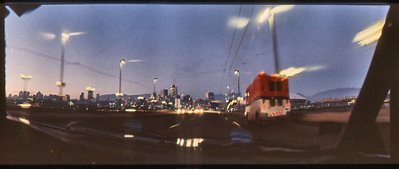
I have written before about shooting with panoramic cameras that have a swivel lens here and here. The pictures in today's blog I took with a precursor to my Russian Horizont. It is a Japanese Widelux which is as unreliable as the Horizont.
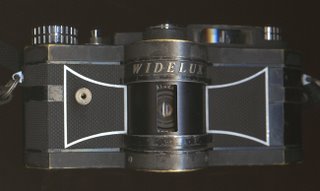
The Horizont has better optics than the Widelux while the latter has a slightly more reliable shutter. Both tend to have light leaks. One of the pictures here (it has red streaks on the left side) is the result of such a leak.

I do not remember why it was that Chris Dahl asked me to shoot the Vancouver skylines of which the most successful had the Marine Building on the right side. The ones on the Cambie Street Bridge I took for Gus Tsetsekas of Signals Design Group for a design conference poster. My daughter Ale drove my Fiat-X19 roadster while I stood up with the Widelux. We went back and forth on the bridge from near sundown until the sun set.
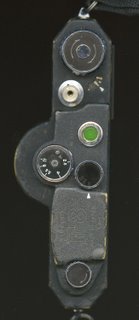
I remember getting quite dizzy. For he Vancouver skyline shots I took some while holding the camera in as steady a manner as possible. Some of the others I took by jarring the camera slightly while the lens was swiveling. Looking back at them they seem to have been fun. A busman's holiday it was.
Blogger formatting does not permit images to be more than 5 inches wide which makes Widelux panoramics look small. But if you click on the images the image will enlarge.

The other day I met retired Province arts writer Lee Bachus. I had never seen him before and I had no idea what he looked like. The shortish man with owl glasses and an almost permanent whimsical smile jarred me into thinking of all the talented writers who have worked for our local newspapers and how most have been forgotten. And once they have been forgotten I could assert that they never existed. And this is more so when there are few online archives where these writers can be found. In our modern 21st century era if you cannot be found on Google you do not exist.
When I first arrived in Canada I came from the tradition of appreciating very good editorial cartoonists in Mexico City newspapers. My favourite was Abel Quezada who worked for the daily Excelsior. Not too known is the fact that Quezada also managed to illustrate more than 11 New Yorker covers.
I had no idea what a salmon derby was nor did I understand how or why the Vancouver Sun sponsored this event. But I do remember seeing the wonderful cartoon illustrations by Len Norris on the subject in the 70s and early 80s and I was hooked by his humour. I was astounded to find out (driving one day by the lower road to the Horseshoe Bay ferry terminal) the Tiddlycove indeed did exist. It was thrilling to be assigned by Western Living (I am not sure) to photograph Len Norris a few years before he died in 1997. By then he lived in a senior community in White Rock. I was not surprised that he had a white picket fence surrounding his property. I asked him to wear a hat much like the one he would draw on his unlucky fishermen.
Of the Vancouver Sun Salmon Derby there is not much information. Did it exist? Did it stop being an annual event when the salmon stocks were depleted? The important thing as we remember the events of this past year is to remember some of the others that helped shape the Vancouver we live in today. And one important contributor to our city was certainly Len Norris.
Gary Taylor - Auld Lang Syne & Robbie Says Good Bye
Saturday, December 29, 2007

Some 27 years ago Gary Taylor invited Rosemary and me for New Year’s celebrations at his Rock Room. The entertainer was Roy Forbes who then went by the name of Bim. I remember being astounded when it came time for the countdown as he took out a sheet of music that had the lyrics for Auld Lang Syne! As soon as it was midnight Forbes sang, reading from the sheet. As soon as he finished he opened a bottle of Moët Chandon and sprayed the crowd. I was in the front so I was soaked. Three Polish sailors came up to me and told me I had an uncanny resemblance to Roman Polanski. For many years later I received a Christmas card from them wishing me a long life!
Rosemary would certainly no longer go to a New Year's party of any kind. We would rather stay at home and read and even make it an early night to bed. The concept of being hugged by complete strangers at the strike of midnight now feels alien.
But as I try to navigate away from porn sites when I look up what I think are innocent words on Google I remember fondly (so much nicer because of the distance of time, perhaps?) the days when my friends and I haunted the Vancouver strip parlours which were euphemistically called show lounges. For many reasons, including assignments for Vancouver Magazine and the Globe & Mail I had managed to photograph most of the luminary dancers and the proprietors of the bars. One of them was Gary Taylor who had a double-bill club on Hornby called Gary Taylor's Rock Room. It was the Rock Room on the first level but it was a show lounge below. My friend Les Wiseman would often go to listen to bands and as soon as our interest waned we would go below.

As far as I can figure it Vancouver, known at one time for the best strip parlours now only has three within its city. They are Brandy's (not far from where Gary Talor used to hold court), the Cecil Hotel and Tony Ricci's No 5 Orange. I would assert that the days remaining for these three are limited. They are unable to compete in this age of instant communication with ever so "intimate" chats on line with people we don't know or "visits" to porn sites with our credit cards in hand. While the strip joints were loud we could at least say we were going to converse with friends. How can that compete with the comfort of a monitor at home. The beer in one hand and the other....

In those days I could walk to any of the joints and the man at the bar would slide a glass of soda water in my direction with a smile. They all knew my preferences. And so did I. But I no longer go to those remaining strip joints of our city. Peter Busby's firm is going to soon demolish the Cecil. Not too long ago I was chatting with Ricci and asked him if he had any plans. His answer, "I don't know how to do anything else. This joint, for better or worse is my life." I have not seen Gary Taylor for some years but I do think that in spite of everything that others might say these men did give us pleasure, that in retrospect wasn't all that shabby.
Ansel Adams, Compaction, Múzquiz & Buicks
Friday, December 28, 2007

The great American landscape photographer Ansel Adams pioneered a system of photography, the Zone System, in which on any scene to be photographed there were three options.
1. To do nothing and consider the scene normal.
2. To notice few steps between blacks and whites.
3. To notice a great combination of blacks, grays and whites.
With his zone system the first scene on a separate negative would be processed normally. The second one would be expanded and the third compacted or compressed.
At one time a young family would move into a house and plant a young cherry tree in the back yard. The family would grow, the children would become adults, and the tree would be there for all to notice as a beacon of their linear existence. If any of those children would have looked at an illustrated map of the world they would have noticed a sleeping Mexican under a cactus in Mexico, a woman with a conical rice planting hat in China, a man in short leather pants with braces in Switzerland (or Bavaria?) and a gaucho on horse back swinging boleadoras in Argentina. At that time I would have drawn the borders of most African states in red.
I did not grow up as a member of a "normal" family that stayed put so my life is divided into periods. They are periods that begin "here" and end "there". If I were to compare this with a contemporary phenomenon I would do so with the mundane state of the home computer about to get its weekly or monthy defragmentation. I would also compare it to one's emails in which one opts to compact. Both methods attempt to remove the idle period between activity and make it into a more compressed and efficient whole.
I lived in Nueva Rosita, Coahuila for exactly one year in the mid 1950s. Those who were living there and went to the school, must have only noticed me as a passing moth or other type of fast-flying insect. Many of those Nueva Rosita children and their parents remained there or moved to the near environs. They intermarried and kept their connections to this day. They lived and live in small towns, Nueva Rosita, Sabinas, Cloete, Múzquiz and in Eagle pass in Texas. A few moved to San Antonio but stayed in touch through school reunions. Our Rosita school went as far as grade 8. Only a few of us went to boarding schools in Texas. Most continued with their school studies in Eagle Pass High School. The Eagle Pass High School reunions kept them in touch.
Through my efforts to find out my own roots in that year in Nueva Rosita and to locate the five boys (in the photograph below, from left to right that's me, Rick Juvé Forns, Enrique Serna, Remigio Martinez Mueller, Sammy Simpson and Steve Frazier) of my class I have posted a few blogs here. These blogs have been found and I have made new contacts with my own class mates and those that were under me in the 7th, 6th grades and beyond. As an "uppreclassman" I tended not to notice them so I have few memories of them.

These contacts aided by Google, nurtured by Skype and email make me feel like a computer that has been lightened by an efficient and ultimately satisfying defragmentation. My compact one year in Nueva Rosita, to use the Ansel Adams comparison, has been expanded and added to the other normal periods of my life. And at the same time it has been a long string of surprises to find out how these "new" old friends have managed with their lives. I have found that a few became teachers as they were influenced by my mother and remember her to this day with affection and awe.
I wrote of a mysterious and handsome engineer called Juan Jaime and how he would leave his magazines (he subscribed to True, Argosy and Esquire) in the reading room of the American Hotel in Nueva Rosita. It was in those magazines that I first discovered what women looked like beneath their clothes. From a gracious 89-year old Jeanette Sandford Frazier (mother of Steve, one of the boys in my class and the remote and beautiful Cornelia I adored from afar) in a Skype conversation a few days ago (from her home in Eagle Pass, where I once saw John Wayne in cowboy books walk on the boardwalk near the Eagle Pass Hotel) I received more information on Jaime. Jaime's father, a real general in the Mexican army, she told me, had saved the life of revolutionary presidente Álvaro Obregón. Bertha Slaughter (whose unamarried name of Múzquiz is one of the many Múzquiz who seem to have left their influence in the area) was widowed when her husband died in an accident accompanied by his mistress landed Juan Jaime and married him. I remember Bertha because her son Johnny was my friend even though he was in grade 7. Mid year he was struck by meningitis and he stopped coming to school. He, too died.
The stories of these people merits a book by someone but certainly not from me. If I were to begin I would do so with Jeanette Sanford Frazier ( a sort of Scarlett O'Hara of Northern Mexico) whose husband died in an airplace crash in the Sierra Madre in the early 50s. She was left to fend for herself in managing an hacienda in Cloete, Coahuila and having to educate her two boys, Steve and Roger and daughter Cornelia. It was Jeanette who befriended my lonely mother and brought so much joy to her life. After I left for Austin, Texas the friendship grew. Roger a narcotics agent died in an autombile accident struck by a driver high on drugs when Roger was bringing in two suspects. Steve married a woman from Múzquiz (a town in Coahuila and a surnambe of fame in the area) and kept with his father's business of heavy equipment in Mexico City. Cornelia is a widow who lives in Eagle Pass (and drives her mother around ) and manages, probably as well as her mother her hacienda in Múzquiz.
Best of all, after 47 years I was able to thank Jeanette Sandford Frazier for her kindness. Her comment to me was, "Your mother and I had so much fun." I told her that I remembered her Buicks. "My husband always had Buicks. Cornelia says that only Buicks and Lexus do not have to be repaired often."
More Nueva Rosita
And More
Those Languid & Wonderful Days Of Year-End
Thursday, December 27, 2007

The period between Christmas Eve and new year's eve is ample proof for me on the relativity of time.
I thought about it when I took Lauren's Polaroid on Christmas Eve and she asked me if she could see it. Once I had pulled the Polaroid from the back attached to my Mamiya RB I told her that we had to wait for 60 seconds. She rapidly counted to 6 and asked me to see the picture. I had to correct her and tell her that she had to to the same thing 9 more times. She was confused.
All of us must remember the last day of school, in that last period of the school day in the heat of summer and how it never ends, particularly when we look at the clock. In our youth we are unaware that sometimes we can control the flow of time as I wrote here.

My favourite day of the Christmas season is Christmas Day. Since we celebrate Christmas Eve we do nothing on the next day. By nothing, I mean that Rosemary and I stay in bed. We have our usual breakfast (in bed, and would have read our daily delivered New York Times as they publish on Christmas Day. The delivery man took the day off.) and then while Rosemary dozes off I read and read. I may get up to replenish my tea or picar on the previous day's leftovers but I do stay in bed all day without one ounce of guilt. And that day lingers into the next into what must be the most languid and wonderful days of the year.

Those days were an eternity in my youth as I anticipated the Epiphany on January 6 and all those neat toys (an Erector set one year). They were unbearably long and dull and hot (Buenos Aires Decembers are hot). Now those days seem to be compressed and before I know it is January 2 and the stress on how I will make do the coming year is a reality.

I can only wish that I could make those days stretch out as I try to go through the pile of new books (30% off on all hardcovers yesterday at Chapters. I bought four.) on my bedside table. But I know that the days will race away from me and my only hope is that I will be around for a few more Christmas Eves with my grandchildren.
Perhaps they will not learn (for a while) that time is fleeting.
The Pleasant Routine Of Christmas & A Saintly Death
Wednesday, December 26, 2007

The envelope from Paris arrived on Christmas Eve like clockwork. I never suspected that the French postal system was any better than the Mexican one! But for the last few years we have received a Christmas card from poet/novelist/environmentalist/diplomat/etc Homero Aridjis and his wife Betty. Aridjis is now the permanent Mexican representative to UNESCO in Paris. Of Aridjis I have written at length in this blog.
Here is one with a connection to Vancouver's George Bowering. The Christmas card always has a little cellophane bag with a Mexican tin Christmas ornament. I have a long string of them (I use red wool and Rebecca hung them on the inside of our front living room window this year). To this collection we can now add the watermelon. The card was not an ordinary one but a postcard announcing a documentary film by Homero and Betty's daughter Eva (screenplay, director and producer) La Santa Muerte narrated by actor Gael García Bernal.

I have yet to see the film but I read with relish Homero Arijis's own interpretation of the Mexican cult for death in his book La Santa Muerte. Since it has yet to be translated into English, an inkling of the plot can be read in this essay from the New York Times.

While the picture on the poster was on the sombre side I was delighted to find out that Aridjis has a new book out called Sicarios (Spanish for a hired assasin, lat. sicarĭus). The little deathly candle stick seen here is Pancho El Esqueleto. His story is here.
Christmas 2007 With The Philosopher King & Henry James
Tuesday, December 25, 2007

Even though it was only the second time that Abraham Jedidiah Rogatnick spent Nochebuena (Christmas Eve) with us it has become what feels like a long-time and pleasant custom. Abraham was late and Lauren kept asking,"Where's Abraham? When is he coming?"
There were two mutual conditions for his coming. On the one hand we told him not to bring anything (last year he spent a fortune in presents for everybody) and for my part I had to make sure that whatever I offered Abraham for dinner had no traces of onion. Many years ago Abraham found out about his allergy to onions while in a bus on mainland China.

Our menu was a salad of sliced tomatoes, fresh bocconcini and fresh basil, steamed carrots, green beans and white rice. Our main course was what I would call a two-front course. Rosemary put a chicken that Ale brought from Lillooet in the oven and I cooked tenderloin beef shish-kabobs. I made one without onions. To drink some had ginger ale and others an Argentine Malbec.

It was the dessert that was the success. When we first came to Vancouver I photographed a French-Canadian soprano (she was very tiny and very pretty) Ginette Duplessis who invited us to her house for dinner. Here is the recipe for her Pernod Pairs Flambé which were particularly enjoyed by Abraham.
Half, peel pairs.
Melt 1/4 cup butter / bubble not brown.
Put pears in, caramelize
2 oz Pernod
Fire it / let it burn till fire goes out.
Put in three tablespoons berry sugar.
Low temperature - add one cup of heavy whipping cream.
Put high to mix well.
I personally cannot stand Pernod or anything with a licorice taste. But the fired Pernod and the cream go through some sort of chemical change and the result is delicious. This morning I had what was left for breakfast with some very strong Indian cardamom tea.

Our other guest was Carlos Zamora Arcaraz whom we have known since he was born 32 years ago im Mexico City. His parents and his three sisters have been our friends since both our families moved to Arboledas, Estado de Mexico in 1971. Our daughters have ketp in touch traveling to Mexico and Carlos and his sisters coming to stay with us in Vancouver. This time around, Carlos (below left), who is a heavy duty star-salesman for HP Computers in Monterrey, Mexico had to balance pleasure with work involving his cellular phone and his laptop.

Abraham circumvented the not bringing anything by doing origami animals and origami Christmas ornaments for our tree. Since Abraham is an expert on Venice my gift to him was a photograph of a Venetian gondola that was purchased and restored by the Vancouver Maritime Museum. Abraham knew everything about the boat (he almost bought it) that in a travesty of Vancouver provincialism was almost converted into a gelato stand!

Abraham Jedidiah Rogatnick (the Harvard trained architect) that I would compare to an almost all-knowing philosopher king (particularly on anything related to Venice) is traveling with Mayor Sam Sullivan and partner Lynn Zanatta on boxing day for a 6-day tour of Venice. In a way Sullivan's Beatrice will be Lynn as Abraham will read sections of Dante Alighieri's Commedia in Italian in previously selected spots in the city.

Abraham was most interested in my copy of Henry James's Italian Hours which he eventually took home to read while forgetting his Venetian gondola photograph. He could not remember the name of the palazzo where James had stayed in Venice. We found it here and it is called Palazzo Barbaro.

I do believe that in some way this trip to Venice will be a turning point for our mayor and I hope that it is all for the better of our city. Sullivan will have the best of company and we can only be happy that we shared with Abraham (85) another memorable nochebuena.


It is appropriate that Lauren and I appear last here. I was tickling Rebecca and Lauren (who is always there to defend her sister) swung back (for more momentum and force) with a crystal necklace (given to her by Hilary) in her hand and struck me in the forehead. I momentarily blacked out and quickly discovered I was bleeding. Today I have a painful chichón (bump) and cut and the realization that I am lucky that Hilary did not give Lauren a pen for Christmas. It all brought memories of Deborah Kerr being hounded by a couple of demonic children (similar to Lauren, perhaps?) in the 1961 film The Innocents based on Henry James's story The Turn of the Screw.
Deborah E & A Christmas Past
Monday, December 24, 2007

Christmas for me, besides representing an umbearably hot midnight Mass in the midst of a Buenos Aires summer, has always been about mechanical toys and things I wanted and mostly never got - no electric train, no motorbike no rifle. Even now, when I am past being excited about a new computer I think of gadgets. I think of gadgets I now don't want or need. This time around I have the ability to grant (when I can afford it) someone else's wish for a gadget or electronic equipment. I have already mentioned here how Rebecca is getting a glow-in-the-dark Sony clock radio/CD player tonight.
I have been thinking of stereo equipment as I was playing records yesterday with a Sony linear tracking turntable. I could never have afforded one when they were in fashion, but a few Christmases past I bought one for only $100 at a Sony Store because it had a cracked cover. I ordered a new cover for next to nothing and I have been happy with my obsolete turntable since.

Christmas 1977 I was working for a gay/bisexual publication Bi-Line and the editor told me to create and shoot an ad for one of their advertisers which was a semi-sleazy sound equipment retailer called Vancouver Sight & Sound that used Shakespeare's (Twelfth Night)quote:
If music be the food of love, play on...
as its main identity. At the time I had been seeing many alternative scene rock bands including one very strange one called E. It featured gary bourgeois (I think he liked his name like that) on keyboards and a beautiful light-as-air but very tall singer who went by the name of Deborah E. I suggested that Deborah E would make an excellent model.

At the time political correctness had yet to arrive. We photographers shamelessly posed women, with not much on, by cars, floor lamps and anything else anybody would want to buy. Why not stereo equipment?
A 1983 Christmas - Jingle-bats In The Belfry
Sunday, December 23, 2007

For Christmas 1980 Les Wiseman inaugurated a new feature idea for the then adventurous Vancouver Magazine. The In One Ear rock music column would feature a local band photographed and interviewed around a Christmas scene. This first In One Ear Christmas involved the hard core punk band the Subhumans. Others followed, DOA, the Modernettes and an even a more mainstream Kenny Coleman seen in that previous Modernettes blog. One of the strangest involved a band called Corsage. This was for Christmas 1983 when the alternative music scene's most interesting player was amateur golfer, professional grunge dresser and rock promoter Bud Luxford.
Of Corsage, Les Wiseman wrote as an introduction to that Christmas In One Ear:
Imagine, if you will, another sort of white Christmas, the kind that surrounds more of our metaphysically distressed than you care to imagine. Padded, white, quilted canvas walls, floor and ceiling; the glare from a 200-watt insect-repellent bulb that seems to do nothing for the white spiders that pop up between our subject's arm hairs. Imagine the purgatory of a young rock musician with a sense of the absurd, for we have just stepped through the doorway which leads to the Corsage Zone.
In the picture with Phil "The K" Smith in the centre, and clockwise from the upper left, Rodney Graham (the doctor), Chris Grove, Scout Farelaine,Bill Napier-Hemy he's far right in this link, Jade Blade, Dale Powers and Richard Walker. Of Richard Walker even my Rebecca would know that's Tony Baloney. Tony Baloney is wearing a blonde wig, far right in the third picture in this link.
Rod Steiger - Lunch With A Melancholic Old Man
Saturday, December 22, 2007

The photographs in my files have no date and I never kept a copy of the Georgia Straight in which one appeared. My guess is that I took the pictures in the late 80s or early 90s. I can remember vividly everything else. I knocked on the door of one of the rooms in what was then the Pacific Palisades Hotel on Robson Street. It was run by Mel Zajak. He was discrete and liked to play golf so many movie stars (before Vancouver really became Hollywood North) stayed at his hotel. I photographed many of them but the most memorable was the melancholic man who opened the door, and said, "Please come in. I hope you don't mind but we are going to have lunch in together and we shall first drink a white wine." The man, unshaven and wearing a black hat, was actor Rod Steiger. I stared. He explained, "Today is Saturday and on Saturdays I never shave." We shared a club sandwich but I don't recall the wine. I was too fascinated by the charm and the kindness of the man who told me how he had read tons of books on Napoleon and read the headlines of French newspapers of the time in order for him get into the mind of Napoleon whom he played in the 1971 film Waterloo. But the most remarkable performance I have ever heard from an actor came after the coffee.

Steiger told me that the one part he had always wanted to play was Winston Churchill. He then recited in its entirety, Churchill's June 4, 1940 speech before the House of Commons:
...We shall not flag nor fail. We shall go on to the end. We shall fight in France and on the seas and oceans; we shall fight with growing confidence and growing strength in the air. We shall defend our island whatever the cost may be; we shall fight on beaches, landing grounds, in fields, in streets and on the hills. We shall never surrender and even if, which I do not for the moment believe, this island or a large part of it were subjugated and starving, then our empire beyond the seas, armed and guarded by the British Fleet, will carry on the struggle until in God's good time the New World with all its power and might, sets forth to the liberation and rescue of the Old. .
I closed my eyes and the man in the room was Winston Churchill. I broke the spell when on a lark I asked him what was the gum he chewed through most of In the Heat of the Night (1967) as Sparta, Mississippi, police chief Bill Gillespie.
"It was Dentyne cinnamon."
A Christmas Rose Not Is a Christmas Rose Not
Friday, December 21, 2007
The Christmas Rose is not a rose at all but a Helleborus niger. It blooms about now but it gets unsightly black spots in our garden so we don't grow it. Perhaps this hellebore does not like our rain. Rosemary prefers the Heleborus argutifolious which flowers later in the winter.
My garden has been put to bed and I try not to look at the last of my decaying perennials and hostas disappear into the ground. Some of them are confused with our warmish weather and I would believe have adapted and become evergreen. An example is my handsome

Hypericum androsaemum 'Albury Purple' (right) which looks great and will remain like that unless we have a heavy snowfall which would break off the brittle stems.
But I have my very own Christmas Rose(s), if a bit worse for wear. They managed to open today in my winter garden. The roses are both English Roses bred by Shropshire rose grower David Austin. The pink one is Rosa 'St Swithun' and the white Rosa 'Fair Bianca'.
Panoramic Vancouver - A Busman's Holiday
Thursday, December 20, 2007

Even though I recently posted here some architectural photographs I am not an architectural photographer nor have I ever wanted to be one. The same applies to landscapes and when I see a good one I usually buy the postcard. An architectural photographer more often than not has to abide by rules that stipulate that the parallel lines of buildings have to be rendered so. These photographers have to master the swings and tilts of bellows 4x5 inch cameras so as to control the apparent distortion of wide angle lenses or when they shoot up on a tall building. Another tremendous challenge of the architectural photographer who might specialize in house interiors is that the light of the inside of the house (tungsten) has to be balanced to the usually stronger daylight of the outside.

But I do have some landscape and architectural photographs in my files because I was ordered to take them by former Vancouver Magazine art director Chris Dahl.

He could not tolerate photographers who specialized so he forced me to take all kinds of stuff I was not in the least interested in. And, of course, I now appreciate his nagging and the experience.

I have written before about shooting with panoramic cameras that have a swivel lens here and here. The pictures in today's blog I took with a precursor to my Russian Horizont. It is a Japanese Widelux which is as unreliable as the Horizont.

The Horizont has better optics than the Widelux while the latter has a slightly more reliable shutter. Both tend to have light leaks. One of the pictures here (it has red streaks on the left side) is the result of such a leak.

I do not remember why it was that Chris Dahl asked me to shoot the Vancouver skylines of which the most successful had the Marine Building on the right side. The ones on the Cambie Street Bridge I took for Gus Tsetsekas of Signals Design Group for a design conference poster. My daughter Ale drove my Fiat-X19 roadster while I stood up with the Widelux. We went back and forth on the bridge from near sundown until the sun set.

I remember getting quite dizzy. For he Vancouver skyline shots I took some while holding the camera in as steady a manner as possible. Some of the others I took by jarring the camera slightly while the lens was swiveling. Looking back at them they seem to have been fun. A busman's holiday it was.
Blogger formatting does not permit images to be more than 5 inches wide which makes Widelux panoramics look small. But if you click on the images the image will enlarge.
Wednesday, December 19, 2007
"What does it do? Just hang there?"
"It proves the rotation of the earth. Since the point of suspension doesn't move..."
"Why doesn't it move?"
"Well because a point... the central point, I mean, the one right in the middle of all the points you see...it's a geometric point; you can't see it because it has no dimension, and if something has no dimension, it can't move, not right or left, not up or down. So it doesn't rotate with the earth. You understand? It can't even rotate around itself. There is no itself."
Foucault's Pendulum
Umberto Eco 1988
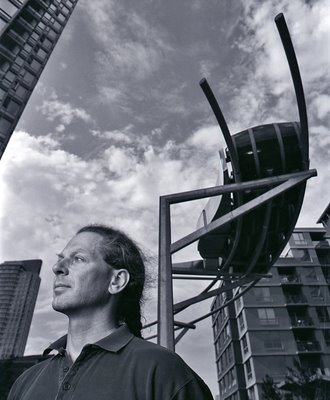
In June 2002 I finally got to photograph one of my Vancouver heroes- Alan Storey.
I am from a Latin American generation that was raised to the principle that the best of all possible worlds would happen thanks to arquitectos and ingenieros. While not going to the extreme of Italians who address not only arquitects, engineers and politicians but even police inspectors as Dottore, with a seriousness that has no reference to commedia dell'arte , we latinos respectfully address them as Sr. arquitecto, Sr. ingeniero, etc. This is possibly why I am always in awe in the presence of architect Arthur Erickson or would rather walk by Ned Pratt's Dal Grauer Substation on Burrard than go to church.
While artist/sculptor Alan Storey is not an architect or a civil engineer he is an artist whose works mirror the best and what's positive of technology and engineering even if our world will never be a better one through chemistry or electricity. His first large local work is my favourite. It is his 1987 Pendulum in the atrium of the HSBC Building on West Georgia. This fabulous work of art has absolutely no practical purpose except to delight the senses while telling us something of the laws of physics. If I am ever in the area I always find time to sit down and contemplate the pendulum. When I have out of town visitors the pendulum is one of my musts.
I photographed Storey by his Coopers Mews sculpture. For more details on it look here. It is a (again that word) whimsical look at what preceded the area before the condominiums were built. Part of the pathway includes steps that produce steam when one walks on them.
Storey and I had a fun time during our pleasant shoot. But it was partly jarred by an event that I will not forget.
We stopped our picture taking when we saw an extremely beautiful and elegant blue car stop at the gate of one of the condos. It was an Aston Martin being driven by a young man. He glanced in our direction and then the gate went up and he disappeared into his building's garage. We discussed that the kind of luxury that we had previously associated with living in Shaughnessy had a much different counterpart here by his sculpture and that it was a luxury of which we had no inkling. It was a way of life for which we had no understanding.
The "simple" complexity of the physics of the pendulum had and has no equivalent to the possibly dot.com source of the Aston Martin driver's wealth. We live in a much more complex and perplexing world. Thankfully I can observe Storey's pendulum and feel equilibrium.
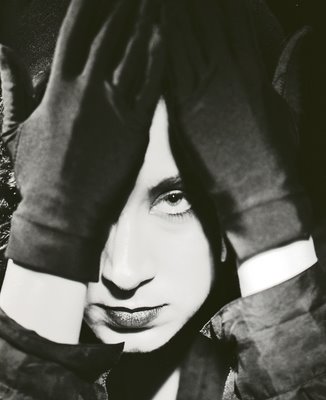
Of late when I photograph someone in my studio I just might shoot a roll of 120 film with all of its 10 exposures. But it is not happening as often. I find myself shooting 5 or 6 and stopping. At one time, when film was king, art directors and photo editors would say, "Shoot lots of film. Film is cheap." With digital cameras (if you don't consider the expense of keeping up with your digital Joneses) it is even cheaper than film as each exposure is free. Film varieties are being discontinued and what remains is expensive. Luckily I still process my own.
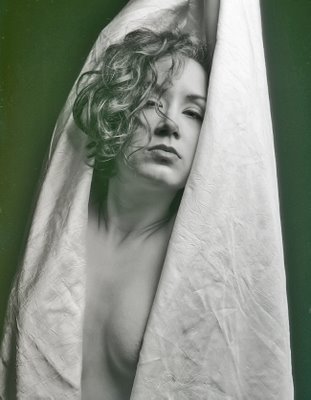
But how is it possible to shoot a magazine assignment with 5 or 6 exposures? I have recently found the answer in my photo classes at Focal Point. My students crop their pictures in all possible ways. Some of these crops work, most don't. But you simply have to do this until your brain's memory stores what works and what doesn't. My students practice on models that the school hires. I supervise and give a few pointers. I am patient. I did the same.
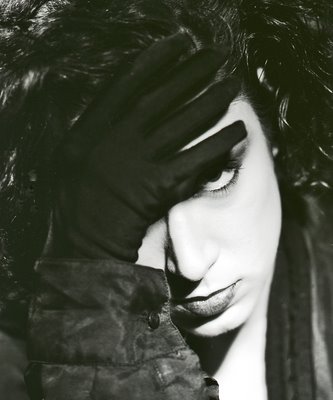
It all started when I started printing my negatives in 1962. I would put a negative in an enlarger and perhaps get 20 interpretations of my shot. I would crop it here and there and make horizontal photographs vertical, and the vertical ones horizontal. But when I purchased my Mamiya RB in 1975, its large viewfinder gave me the impetus to crop in-camera. This is a habit that became obsessive. I never crop. I like the discipline that less freedom gives me in photography. I have to make up my mind before I press the shutter.
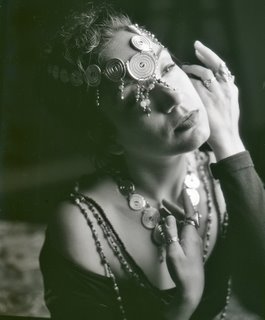
Today when I was perusing some of my files I had a hard look at Kimberly Klass's. I photographed her three or four times about 15 years ago and judging by the amount of negatives I have of her, I shot a lot. I experimented with all sorts of in-camera crops. And just like some of my students's crops don't work neither do mine.

I realize that Klass had patience as I made her pose in all matter of positions. I also see many photographs that don't look like me idea or are my style. But they work because Klass was more than a patient subject. She had the gumption to suggest and convince. Thanks to her, and other like her from my past, I can now shoot 5 or 6pictures instead of a whopping 10!
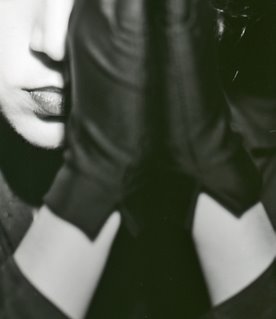
There is a wonderful look to Kimberly Klass. She looks like a woman that might have hopped on a time machine during the post-war German Weimar Republic and visited me in my studio or might have posed for Man Ray on the way. I don't know where Klass is now but I am very glad I was able to learn from her when she was around.
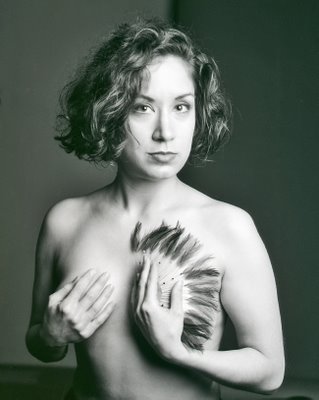
 More Kimberly Klass
More Kimberly Klass

"What does it do? Just hang there?"
"It proves the rotation of the earth. Since the point of suspension doesn't move..."
"Why doesn't it move?"
"Well because a point... the central point, I mean, the one right in the middle of all the points you see...it's a geometric point; you can't see it because it has no dimension, and if something has no dimension, it can't move, not right or left, not up or down. So it doesn't rotate with the earth. You understand? It can't even rotate around itself. There is no itself."
Foucault's Pendulum
Umberto Eco 1988

In June 2002 I finally got to photograph one of my Vancouver heroes- Alan Storey.
I am from a Latin American generation that was raised to the principle that the best of all possible worlds would happen thanks to arquitectos and ingenieros. While not going to the extreme of Italians who address not only arquitects, engineers and politicians but even police inspectors as Dottore, with a seriousness that has no reference to commedia dell'arte , we latinos respectfully address them as Sr. arquitecto, Sr. ingeniero, etc. This is possibly why I am always in awe in the presence of architect Arthur Erickson or would rather walk by Ned Pratt's Dal Grauer Substation on Burrard than go to church.
While artist/sculptor Alan Storey is not an architect or a civil engineer he is an artist whose works mirror the best and what's positive of technology and engineering even if our world will never be a better one through chemistry or electricity. His first large local work is my favourite. It is his 1987 Pendulum in the atrium of the HSBC Building on West Georgia. This fabulous work of art has absolutely no practical purpose except to delight the senses while telling us something of the laws of physics. If I am ever in the area I always find time to sit down and contemplate the pendulum. When I have out of town visitors the pendulum is one of my musts.
I photographed Storey by his Coopers Mews sculpture. For more details on it look here. It is a (again that word) whimsical look at what preceded the area before the condominiums were built. Part of the pathway includes steps that produce steam when one walks on them.
Storey and I had a fun time during our pleasant shoot. But it was partly jarred by an event that I will not forget.
We stopped our picture taking when we saw an extremely beautiful and elegant blue car stop at the gate of one of the condos. It was an Aston Martin being driven by a young man. He glanced in our direction and then the gate went up and he disappeared into his building's garage. We discussed that the kind of luxury that we had previously associated with living in Shaughnessy had a much different counterpart here by his sculpture and that it was a luxury of which we had no inkling. It was a way of life for which we had no understanding.
The "simple" complexity of the physics of the pendulum had and has no equivalent to the possibly dot.com source of the Aston Martin driver's wealth. We live in a much more complex and perplexing world. Thankfully I can observe Storey's pendulum and feel equilibrium.
Klass From Weimar
Tuesday, December 18, 2007

Of late when I photograph someone in my studio I just might shoot a roll of 120 film with all of its 10 exposures. But it is not happening as often. I find myself shooting 5 or 6 and stopping. At one time, when film was king, art directors and photo editors would say, "Shoot lots of film. Film is cheap." With digital cameras (if you don't consider the expense of keeping up with your digital Joneses) it is even cheaper than film as each exposure is free. Film varieties are being discontinued and what remains is expensive. Luckily I still process my own.

But how is it possible to shoot a magazine assignment with 5 or 6 exposures? I have recently found the answer in my photo classes at Focal Point. My students crop their pictures in all possible ways. Some of these crops work, most don't. But you simply have to do this until your brain's memory stores what works and what doesn't. My students practice on models that the school hires. I supervise and give a few pointers. I am patient. I did the same.

It all started when I started printing my negatives in 1962. I would put a negative in an enlarger and perhaps get 20 interpretations of my shot. I would crop it here and there and make horizontal photographs vertical, and the vertical ones horizontal. But when I purchased my Mamiya RB in 1975, its large viewfinder gave me the impetus to crop in-camera. This is a habit that became obsessive. I never crop. I like the discipline that less freedom gives me in photography. I have to make up my mind before I press the shutter.

Today when I was perusing some of my files I had a hard look at Kimberly Klass's. I photographed her three or four times about 15 years ago and judging by the amount of negatives I have of her, I shot a lot. I experimented with all sorts of in-camera crops. And just like some of my students's crops don't work neither do mine.

I realize that Klass had patience as I made her pose in all matter of positions. I also see many photographs that don't look like me idea or are my style. But they work because Klass was more than a patient subject. She had the gumption to suggest and convince. Thanks to her, and other like her from my past, I can now shoot 5 or 6pictures instead of a whopping 10!

There is a wonderful look to Kimberly Klass. She looks like a woman that might have hopped on a time machine during the post-war German Weimar Republic and visited me in my studio or might have posed for Man Ray on the way. I don't know where Klass is now but I am very glad I was able to learn from her when she was around.

 More Kimberly Klass
More Kimberly Klass
Monday, December 17, 2007
Who shaves the barber?
From The Barbershop Paradox as proposed by Lewis Carroll in A Logical Paradox, July 1894.
When I remember, I photograph myself on my birthday. I took this shot August 31, 2006. I post it here as it has a more flattering view of my Mamiya RB67 Pro-SD. It looks in a lot better shape that the photo that follows.
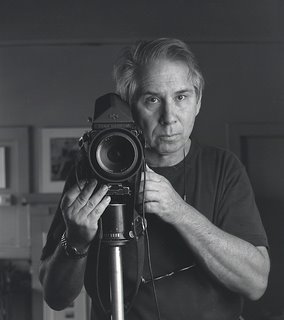
Tim Bray in his ever popular ongoing wants to know more about my camera. He asks here. When I photographed him for my Georgia Straight profile in my studio he snapped my camera on its tripod with his digital. Here is his picture which shows a lot of the brass, not plastic, that lies beneath the black paint.
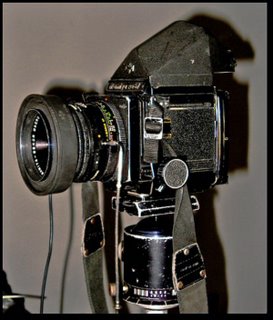
While I had taken photographs since I was 15 I did not choose photography as a profession until Rosemary, our two daughters and I decided to move to Vancouver in 1975. We drove to Vancouver in our VW Beetle and on the way I dropped them off in Disneyland and I went to a an LA photo store and bought all the equipment I thought I needed that I could not possibly have been able to afford in Mexico City. Mexico had high import tarifs.
But in Vancouver, with so many working photographers, I decided I needed some sort of competitive edge or calling card. I knew I did not want to see the world upside down as seen by a 4 x 5 inch view camera. I could not afford the medium format (uses 120 or twice as long roll film) Hasselblad. By 1975 so many could afford Nikons and parade in Stanley Park with one of them hanging around he neck that the Hasselblad was the status and macho symbol of the time. I opted for the less expensive but larger format (6x7 cm as oposed to Hasselblad's 6x6). Within a month of buying my first Mamiya RB-67 Pro-S with a 65mm (equivalent to a 35mm in the 35mm film format) I had Rick Staehling of Vancouver Magazine call me for a job in which he specifically requested, "Alex do you think you could use that monster-sized new-fangled camera you showed me?" A couple of years later that RB fell into Dana Zalko's hot tub (it was a magazine assignment!) complete with the tripod. The lens had been too heavy for the precarious balance so the whole unit collapsed into the water. Two days later the boys (Bert and Attila) at Precision Camera Repair (on Burrard but long gone) had it in pristine working conditions all over again.
Because I have always believed in the NASA Plan B and C of coping with mechanical glitches I bought a second used one. Except for my first camera and the third one seen here, a Mamiya Pro-SD (it has some slight variations to my other two), every piece of Mamiya equipment I own I have bought used. While the finish, particularly inside the camera and lenses cannot possibly be equal to the standards of a Hasselblad, the camera is sturdy, reliable but heavy.
The lens seen here is the 140mm (equivalent to a 75mm in the 35mm film format). This lens, like all Mamiya RB lenses, has a shutter inside the lens. This shutter will sync with flash at any speed but it has the drawback of a maximum of 1/400 second shutter speed which I have realistically tested at around 1/300, on good days. The ability to make great elargements from 6x7 cm negatives and slides is greatly aided by that 140mm (and the 65mm and 50mm which I also have). Why?
Lenses are designed to be sharp at infinity and the image beging to deteriorate as you focus closely. Close focusing lenses(only very few of the very good ones) and true macro lenses (more on this later) are built to focus closely and the image deteriorates as you focus towards infinity. A true macro lens is defined as a lens (as an example) that will record a 1 inch stamp (as an example) as one inch on the film (or in a digital camera) or sensor plane. The RB has bellows between the lens and the camera body. With these bellows I am able to focus my RB on my thumb nail and record it actual size. In photographic lingo this is called 1 to 1 reproduction. That's how you define a true macro lens.
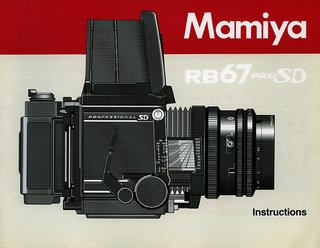
The Mamiya 140mm, 65mm and 50mm lenses are floating element macro lenses. These are lenses that combine the best of normal lenses (that are designed to focus at infinity) with macro lenses that are designed for sharp closeups. They do both by having a floating element. Once I adjust my focus (let's say on a head and shoulders portrait), I adjust the floating element ring. When I do this a group of glass elements within the lens adjust for optimum sharpness at that distance.
My 140mm lens is sharp.
Because of its weight I can shoot more comfortably with the camera on my 34-year-old Italian Manfrotto tripod. A tripod is only as good as its head. The head is an Arca Swiss Monoball. I can move my camera in any direction (as in any) by loosening only one knob. The movement is as smooth as silk.
Another spectacular feature of the Mamiya RB is that the back (where the film is) and which can be interchanged at any time with other backs with other types of film (I have 5 backs) rotates so that the 6x7 format can be in vertical or horizontal position. You can do this without having to rotate the whole camera.
If I were to equal the performance of this camera digitally (in detail and enlargability) I would have to spend in the neighbourhood of $50.000. This would buy me a digital back that would replace the film backs. I would need further equipment like a laptop to which I would have to tether the camera. All that and additional software would be prohibitive for me now. My obsolete Mamiya will have to soldier on.
But the best feature of my Mamiya, its reduced exposures "capability" (10 shots per roll of 120 film) has taught me through the years to really study and concentrate on what I am doing before I press the shutter. I shoot very little on my assignments. The camera has few knobs. I can concentrate on my subjects and my Mamiya fades into the background of my mind and performs with a dependability which for me is a legendary one.
Part of the dependability of my RB which I also call my Sword Excalibur is due to Horst Wenzel who keeps all my cameras in top shape.

Some years ago I dined in the wine cellar of Villa Del Lupo restaurant with violinist Marc Destrubé. Over ostrich and a Sancerre wine I heard the most fascinating information related to the violin's chin rest. Up until the beginning of the 19th century violinists played in smaller, much more intimate venues. They were the salons of kings, dukes and rich patrons. But with the advent of the 19th century and a rising middle class (and the chopping off of many of those dukes's heads) music halls got bigger as musicians tried to lure the common person. The rich sweet but not too loud sound of the baroque violin (and viola, etc) had to be made louder. The violin's internal structure had to be beefed up to allow for increased string tension. The violin could no longer be held loosely by the neck. It had to be held firmly. A contemporary of Beethoven, Ludwig Spohr came up with the idea of the chin rest.
It was here that Destrubé came up with the startling piece of information that has haunted me since. "Until the advent of the chin rest the intimacy and interpretation of a composer was limited to the playing of the music as written with small variations. But with the chin rest the violinist could hear the music in his head and became moved by it. Now the violinist could interpret the music as he heard it." So the paradox here is that the perhaps less rich and gently sound of the baroque violin could not elicit a personal expression by the musician as much as the modern and louder version. Perhaps I cannot completely accept this, but then I am not a violinist. Destrubé is not only a master of the baroque violin and the composers of the 17th and 18th century but he can also play and masters the composers of the 19th, 20th and 21st century.
But all that reminds me of the connection between Rebecca's Christmas gift this year and my venture into high fidelity around 1970. Until then my idea of high fidelity were Gerrard turtables that permanently scarred the best records of my collection and piddly amplifiers that clipped and distorted all frequencies. It was around 1969 that I saw and ad for Acoustic Research speakers.
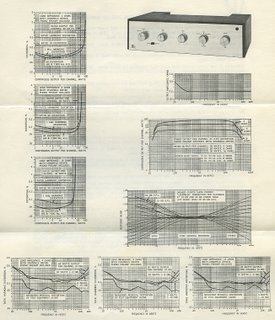
It featured a string trio in a New England forrest with a couple of AR-3A speakers on either side. The explanation under the photo said that at moments when the live playing was switched to a recorded version by the same trio, bystanders could not tell the difference.
Acoustic Reseach thus advertised accurate sound, as did the classical recordings of Angel Records. I has hoocked to this idea. I soon got my wish. A Cuban friend in need of money sold me his Acoustic Research amplifier (a transistor amplifier with minimal knobs and at the time a whopping 100 wats RMS per channel). The amplifier came with a AR turntable which was minimal and beautiful. All I needed were speakers. A neighbour worked for the Mexican petroleum company (PEMEX) so my US purchased AR-3A speakers came listed as oil pumps. At the time Mexico had an importation ban on all sound equipment.
So it was that I leaned to appreciate the accuracy of this sort of sound. Not all that accurate as I particularly loved and love such records (and now CDs) by Gerry Mulligan that had a marked separation between stereo channels. Mulligan on the left, Chet Baker on the right. I never adopted quadraphonic and much less the sound of contemporary home theatre sound. The idea of enhanced bass is anathema.
But I do remember seeing 2001 - A Space Odyssey in 1969 in a very good Mexican theatre and being enthralled by the then primitive idea of surround sound. And as soon as I had my AR amplifier I purchased an Angel recording of Richard Strauss's tone poem Also Sprach Zarathustra, op. 30 used so memorbly in that film. Any audiophile who had decent equipment at the time would test the system against the reproduction (with the hopes of minimal distortion) of the bass pedal sounds of the organ in the beginning of this music.
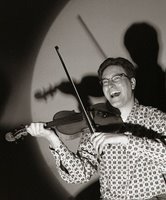
Rebecca and I often go to listen to the Pacific Baroque Orchestra with Marc Destrubé (alas not the musical director anymore). We sit on the front row and sometimes opt to sit on the side of the cello and violon so that the violin is balance out. Rebecca understands. The PBO particularly when the younger Paul Luchkow, right, has a hand in it, every once in while surprises us and delights us with their version of the Gerry Mulligan jazz records. Violins on the left will be often challenged by violas on the right!
All the above will be a long winded explanation as to why Rebecca is getting a Sony clock radio/CD player (it glows blue in the dark) for Christmas. I have found her often listening to her music at her father's computer with earphones.
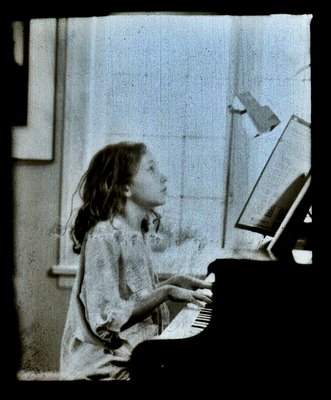
I never fell for the idea of having music in my head. I never bought earphones. I will never know what it is to listen to music as heard by one playing a violin with a chin rest. The closest will always be some variation of the terrible experience of watching Reese Witherspoon in Legally Blonde on board a Continental Airlines Boeing.
I have told Rebecca that without air there is no sound. On the moon we would not hear anything. Sound exists because of air. Air affects and modifies sound. I want her to grow up with an idea of sound one hears with the echoes and reverbation of a living room, or in her case on her night table.
My friend Tim Bray is a master of all that is new. He listens to music on his i-Pod but he is aware of the defficiency and the sacrifice one makes for the ability to be able to listen from a menu of 25,000 songs. So he uses a tube amplifier to "improve" or bring back some of the sound quality lost in compression.
This loss of quality in sound was beautifully explained by Anthony Tommasini here.
Wine can clear
The vapors of despair.
And make us light as air.
John Gay
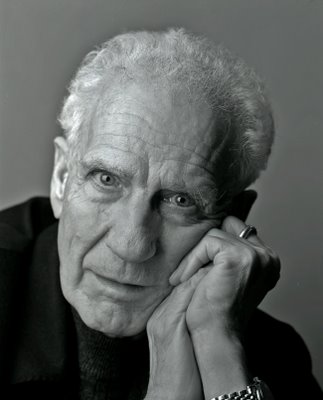
On Saturday, December 8, I photographed for the Georgia Straight, dancer and choreographer Grant Strate who is celebrating his 80th birthday today. There is a big party for him at the Vancouver Dance Centre. Both the Georgia Straight and an article in today's Vancouver Sun describe this man's past as one of the founders of the National Ballet of Canada. There would be no mandate or perhaps space to emphasize Strate's views on dance now.
Strate has a bit of problem walking but braved the stairs to my studio. I had given him the option of not coming and I would have photographed him where he would have been more comfortable. I had a chat with him and even though there is lots of laywer influence in his background (he was one) he had some startlingly candid opinions on dance now. I can understand why Wen Wei Wang would consider him an important mentor. When the session was over and I accompanied Strate downstairs, Wen Wei Wang was there to take his beloved teacher to his next press assignment.
This morning I thought about Strate. I had been moved not only by Strate's presence in my studio but seduced by piercing blue eyes as good as Peter O'Toole's.
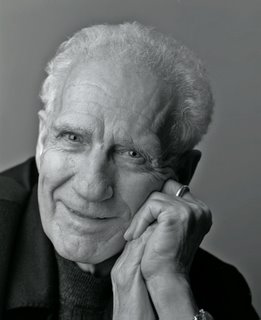
I thought of the solera system for making dry sherries and my favourite pale yellow and dry manzanilla. This system has a relation with dancers handing off their experience to a next generation. I searched these blogs to find out that I had already had the idea before here.
This idea that no matter how you dilute an old and perfect sherry, there is a bit of it in the generations of sherry that follow, can be compared to watching such wonderous dancers as Desirée Dunbar (below, left) dance in Vancouver. I think about it every time I watch her dance.
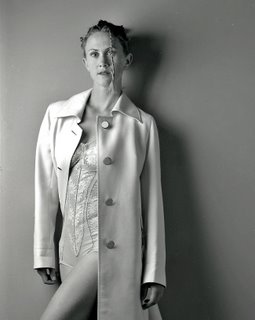
Her teacher and mentor Judith Garay (below, right) studied under American choreographer Martha Graham. There is some Graham in Garay and some of that was passed on to Dunbar. Garay in her position in the faculty of Simon Fraser University in the School for the Contemporary Arts surely has met up with Grant Strate.
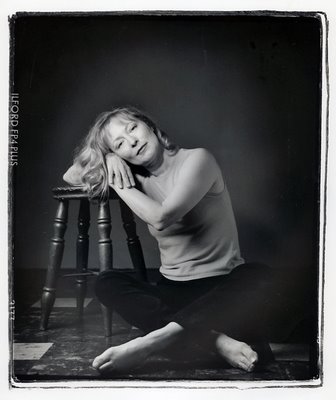
There is a little of Grant Strate in Garay. In my original piece on Strate and sherry here there is a photograph of Strate with dancer choreographer Katheryn Ricketts. She and Strate collaborated. I think of Ricketts teaching my Rebecca jazz dance at Arts Umbrella (she did) and I am excited to know that there is a little bit of the original fine (fino) dry sherry seeping down into present generations of Vancouver dancers who will transfer it to future generations.
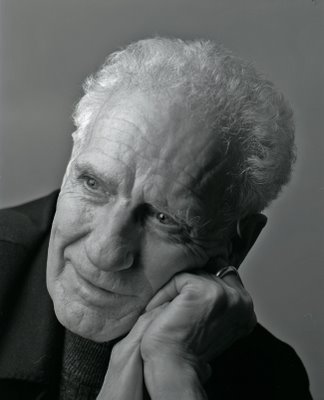
As old dry sherries go, Grant Strate was (and is) a good year.
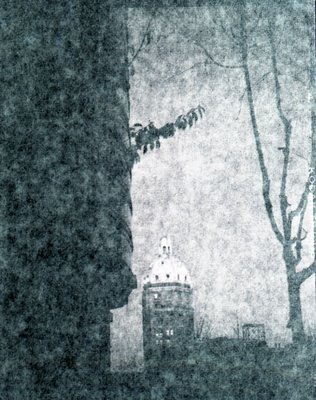
The world's first camera was one that Aristotle observed while resting under a tree. The tree's leaves filtered the noon Greek sun on a summer day. Artistotle noticed a blurry image on the ground. The image was an image caused by the sun going through a little aperture made by leaves that converged forming a tiny opening. If Aristotle had known about lenses and glass he might have tried burning something using the sun.
A camera of sorts (and a real chamber it was, and earlier than Aristotle) was Plato's cave. Some slaves with their backs to a cave opening faced a wall. Between the seated, and chained slaves, there was a fire. Light and images coming from above ground were projected by the cave's small entrance on to the wall but the fire made the image even more vague. We know of these deatails since Portuguese Nobel Prize for Literature winner (1988), José Saramago describes the cave, found under a Lisbon shopping mall in his 2000 novel La Caverna (The Cave).
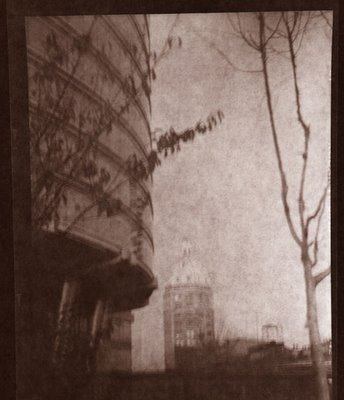
Leonardo da Vinci is almost always given credit for inventing the camera obscura which had all the basics of a modern camera except for a some device to permanently record the captured, but ultimately fleeting light image. And so it was until Frenchman Joseph Nicéphore Niépce (Chalon on the Seine) used a camera device that made a permanent image of the view of the courtyard outside of his workshop window. It was an 8-hour exposure.
While the recording medium has consisted of sensitized paper, sensitized silver plated copper, sensitized tin and sensitized glass it didn't achieve a real breakthrough until 1888 when George Eastman thought of sensitizing a flexible and transparent plastic called celluloid. Nothing changed until the advent of digital cameras with their CCD and CMOS sensors.
But what has remained the same is the box. All cameras consist of:
1. Lens, sometimes with an attached shutter.
2. box.
3. A sensitized light capturing material (film) or a digital sensor. Sometimes the shutter is right before the film or sensor.
And that pretty well defines a camera, chamber or box.
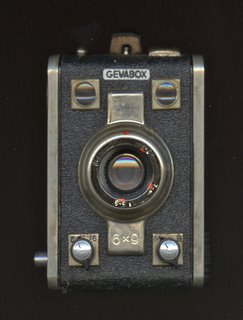
An example of a pretty basic box is my German made Gevabox. It has a glass miniscus lens (quite primitive), three f-stops (8, 11, 16) and a 1/30 shutter speed plus B for bulb (the shutter stays open as long as you press the shutter button). It uses 120 sized roll film and takes 8 6x9 cm images that are not always in sharp focus. The two viewfinders show a distant approximation of what you are going to get. Dr Joseph Ignace Guillotin might have in some way have been an influence as this camera will chop heads with alarming regularity. But sometimes it surprises.
Some years ago, two, three or five? I don't remember I must have gone to downtown Vancouver and squeezed a few shots of the old Sun (Vancouver Sun) Tower. I found the exposed roll of Kodak Technical Pan (ISO 25) in a drawer. I processed it a few days ago.
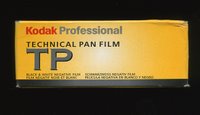
I found two interesting negatives which I placed on my Epson V700 scanner. Before closing the lid (this scanner scans from above and from below, at the same time) I placed a sheet of white letterhead paper on each negative. Here are the results.
I sent the pair of photos to my friend Gordon Price (the only Vancouver City Councillor who was never culturally challenged and supported and supports the arts). He ran them in his extremely popular civic, city planning, density planning,etc blog called pricetags here. He nailed for me why he likes them by saying it has all to do with the juxtaposition of the old with the new.
My Texan friend Howard Houston who lives near Austin (I like to write it like that) commented as follows:
A thousand years after the Fall of Civilization, an intrepid explorer with an ancient box camera captures an image of the radioactive remains of downtown Vancouver. Shortly after taking this photo, the explorer was devoured by one of the seemingly ubiquitous mutant armadilloes that migrated North from Texas after the fall. Barely escaping with her life, the explorer's beautiful assistant saves his work for posterity, wearing something slinky and low cut.
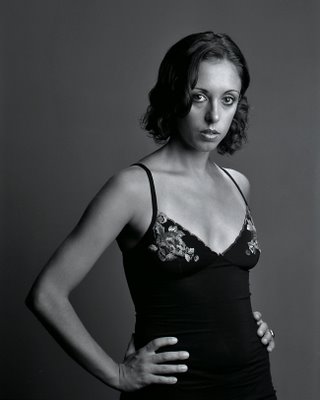
Something amazing happened last night. Rebecca and I went to Opera Sushi and Verdi's La Traviata with Angela Gheorghiu and Frank Lopardo was not playing on the TV.
Instead it was the ending of Goerges Bizet's Carmen performed by the Metropolitan Opera in 1987 with Greek mezzo-soprano Agnes Baltsa and Spanish tenor José Carreras. We saw Don José knife Carmen and when it was over the opera started again.
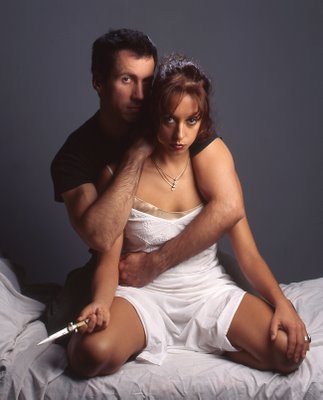
During the overture when Rebecca saw how large, orchestra conductor, James Levine was, she said, "He looks like heart attack material." I told her that Levine was still alive 20 years later. As soon as Carmen appeared ( and I had to explain how women rolled cigars on their thighs!) Rebecca thought that Baltsa was not as pretty as Gheorghiu. She was right. But I explained the Baltsa looked the part as she looked like a gypsy. Immediately Rebecca asked where gypsies came from and I had to explain. Luckily I was able to skirt the fact that Baltsa was a lot more provocative in her very low cut dress with the red rose between her breasts.
When Carmen notices Don José and bangs him on the forehead with her rose, Rebecca immediately remembered that very scene in Ballet BC's original 2003 production of Carmen as a ballet. She said, "Sandrine Cassini was as sexy as Baltsa (so much for skirting that explanation).

So I thought of Sandrine Cassini(she is in Germany) and remembered that little quote from my Best Quotations for All Occasions (I purchased it in Austin in 1961) about love:
Man loves little and often,
women much and rarely.
That fine little quote, that pretty well explains my infatuation with the marvelously sexy Cassini, was attributed to someone called Basta.
Carmen at Opera Sushi gave me an ample excuse to post these pictures of Cassini all over again. In the second photograph she is with dancer Edmond Kilpatrick who played Don José. I wrote about her here, here, and here
As we left Opera Sushi, the sushi chef said, "Goodbye Rebecca." We suspect that he must have read the previous blog.
Who shaves the barber?
From The Barbershop Paradox as proposed by Lewis Carroll in A Logical Paradox, July 1894.
When I remember, I photograph myself on my birthday. I took this shot August 31, 2006. I post it here as it has a more flattering view of my Mamiya RB67 Pro-SD. It looks in a lot better shape that the photo that follows.

Tim Bray in his ever popular ongoing wants to know more about my camera. He asks here. When I photographed him for my Georgia Straight profile in my studio he snapped my camera on its tripod with his digital. Here is his picture which shows a lot of the brass, not plastic, that lies beneath the black paint.

While I had taken photographs since I was 15 I did not choose photography as a profession until Rosemary, our two daughters and I decided to move to Vancouver in 1975. We drove to Vancouver in our VW Beetle and on the way I dropped them off in Disneyland and I went to a an LA photo store and bought all the equipment I thought I needed that I could not possibly have been able to afford in Mexico City. Mexico had high import tarifs.
But in Vancouver, with so many working photographers, I decided I needed some sort of competitive edge or calling card. I knew I did not want to see the world upside down as seen by a 4 x 5 inch view camera. I could not afford the medium format (uses 120 or twice as long roll film) Hasselblad. By 1975 so many could afford Nikons and parade in Stanley Park with one of them hanging around he neck that the Hasselblad was the status and macho symbol of the time. I opted for the less expensive but larger format (6x7 cm as oposed to Hasselblad's 6x6). Within a month of buying my first Mamiya RB-67 Pro-S with a 65mm (equivalent to a 35mm in the 35mm film format) I had Rick Staehling of Vancouver Magazine call me for a job in which he specifically requested, "Alex do you think you could use that monster-sized new-fangled camera you showed me?" A couple of years later that RB fell into Dana Zalko's hot tub (it was a magazine assignment!) complete with the tripod. The lens had been too heavy for the precarious balance so the whole unit collapsed into the water. Two days later the boys (Bert and Attila) at Precision Camera Repair (on Burrard but long gone) had it in pristine working conditions all over again.
Because I have always believed in the NASA Plan B and C of coping with mechanical glitches I bought a second used one. Except for my first camera and the third one seen here, a Mamiya Pro-SD (it has some slight variations to my other two), every piece of Mamiya equipment I own I have bought used. While the finish, particularly inside the camera and lenses cannot possibly be equal to the standards of a Hasselblad, the camera is sturdy, reliable but heavy.
The lens seen here is the 140mm (equivalent to a 75mm in the 35mm film format). This lens, like all Mamiya RB lenses, has a shutter inside the lens. This shutter will sync with flash at any speed but it has the drawback of a maximum of 1/400 second shutter speed which I have realistically tested at around 1/300, on good days. The ability to make great elargements from 6x7 cm negatives and slides is greatly aided by that 140mm (and the 65mm and 50mm which I also have). Why?
Lenses are designed to be sharp at infinity and the image beging to deteriorate as you focus closely. Close focusing lenses(only very few of the very good ones) and true macro lenses (more on this later) are built to focus closely and the image deteriorates as you focus towards infinity. A true macro lens is defined as a lens (as an example) that will record a 1 inch stamp (as an example) as one inch on the film (or in a digital camera) or sensor plane. The RB has bellows between the lens and the camera body. With these bellows I am able to focus my RB on my thumb nail and record it actual size. In photographic lingo this is called 1 to 1 reproduction. That's how you define a true macro lens.

The Mamiya 140mm, 65mm and 50mm lenses are floating element macro lenses. These are lenses that combine the best of normal lenses (that are designed to focus at infinity) with macro lenses that are designed for sharp closeups. They do both by having a floating element. Once I adjust my focus (let's say on a head and shoulders portrait), I adjust the floating element ring. When I do this a group of glass elements within the lens adjust for optimum sharpness at that distance.
My 140mm lens is sharp.
Because of its weight I can shoot more comfortably with the camera on my 34-year-old Italian Manfrotto tripod. A tripod is only as good as its head. The head is an Arca Swiss Monoball. I can move my camera in any direction (as in any) by loosening only one knob. The movement is as smooth as silk.
Another spectacular feature of the Mamiya RB is that the back (where the film is) and which can be interchanged at any time with other backs with other types of film (I have 5 backs) rotates so that the 6x7 format can be in vertical or horizontal position. You can do this without having to rotate the whole camera.
If I were to equal the performance of this camera digitally (in detail and enlargability) I would have to spend in the neighbourhood of $50.000. This would buy me a digital back that would replace the film backs. I would need further equipment like a laptop to which I would have to tether the camera. All that and additional software would be prohibitive for me now. My obsolete Mamiya will have to soldier on.
But the best feature of my Mamiya, its reduced exposures "capability" (10 shots per roll of 120 film) has taught me through the years to really study and concentrate on what I am doing before I press the shutter. I shoot very little on my assignments. The camera has few knobs. I can concentrate on my subjects and my Mamiya fades into the background of my mind and performs with a dependability which for me is a legendary one.
Part of the dependability of my RB which I also call my Sword Excalibur is due to Horst Wenzel who keeps all my cameras in top shape.
Marc Destrubé - The Intimate Volinist & The Sony Clock Radio
Sunday, December 16, 2007

Some years ago I dined in the wine cellar of Villa Del Lupo restaurant with violinist Marc Destrubé. Over ostrich and a Sancerre wine I heard the most fascinating information related to the violin's chin rest. Up until the beginning of the 19th century violinists played in smaller, much more intimate venues. They were the salons of kings, dukes and rich patrons. But with the advent of the 19th century and a rising middle class (and the chopping off of many of those dukes's heads) music halls got bigger as musicians tried to lure the common person. The rich sweet but not too loud sound of the baroque violin (and viola, etc) had to be made louder. The violin's internal structure had to be beefed up to allow for increased string tension. The violin could no longer be held loosely by the neck. It had to be held firmly. A contemporary of Beethoven, Ludwig Spohr came up with the idea of the chin rest.
It was here that Destrubé came up with the startling piece of information that has haunted me since. "Until the advent of the chin rest the intimacy and interpretation of a composer was limited to the playing of the music as written with small variations. But with the chin rest the violinist could hear the music in his head and became moved by it. Now the violinist could interpret the music as he heard it." So the paradox here is that the perhaps less rich and gently sound of the baroque violin could not elicit a personal expression by the musician as much as the modern and louder version. Perhaps I cannot completely accept this, but then I am not a violinist. Destrubé is not only a master of the baroque violin and the composers of the 17th and 18th century but he can also play and masters the composers of the 19th, 20th and 21st century.
But all that reminds me of the connection between Rebecca's Christmas gift this year and my venture into high fidelity around 1970. Until then my idea of high fidelity were Gerrard turtables that permanently scarred the best records of my collection and piddly amplifiers that clipped and distorted all frequencies. It was around 1969 that I saw and ad for Acoustic Research speakers.

It featured a string trio in a New England forrest with a couple of AR-3A speakers on either side. The explanation under the photo said that at moments when the live playing was switched to a recorded version by the same trio, bystanders could not tell the difference.
Acoustic Reseach thus advertised accurate sound, as did the classical recordings of Angel Records. I has hoocked to this idea. I soon got my wish. A Cuban friend in need of money sold me his Acoustic Research amplifier (a transistor amplifier with minimal knobs and at the time a whopping 100 wats RMS per channel). The amplifier came with a AR turntable which was minimal and beautiful. All I needed were speakers. A neighbour worked for the Mexican petroleum company (PEMEX) so my US purchased AR-3A speakers came listed as oil pumps. At the time Mexico had an importation ban on all sound equipment.
So it was that I leaned to appreciate the accuracy of this sort of sound. Not all that accurate as I particularly loved and love such records (and now CDs) by Gerry Mulligan that had a marked separation between stereo channels. Mulligan on the left, Chet Baker on the right. I never adopted quadraphonic and much less the sound of contemporary home theatre sound. The idea of enhanced bass is anathema.
But I do remember seeing 2001 - A Space Odyssey in 1969 in a very good Mexican theatre and being enthralled by the then primitive idea of surround sound. And as soon as I had my AR amplifier I purchased an Angel recording of Richard Strauss's tone poem Also Sprach Zarathustra, op. 30 used so memorbly in that film. Any audiophile who had decent equipment at the time would test the system against the reproduction (with the hopes of minimal distortion) of the bass pedal sounds of the organ in the beginning of this music.

Rebecca and I often go to listen to the Pacific Baroque Orchestra with Marc Destrubé (alas not the musical director anymore). We sit on the front row and sometimes opt to sit on the side of the cello and violon so that the violin is balance out. Rebecca understands. The PBO particularly when the younger Paul Luchkow, right, has a hand in it, every once in while surprises us and delights us with their version of the Gerry Mulligan jazz records. Violins on the left will be often challenged by violas on the right!
All the above will be a long winded explanation as to why Rebecca is getting a Sony clock radio/CD player (it glows blue in the dark) for Christmas. I have found her often listening to her music at her father's computer with earphones.

I never fell for the idea of having music in my head. I never bought earphones. I will never know what it is to listen to music as heard by one playing a violin with a chin rest. The closest will always be some variation of the terrible experience of watching Reese Witherspoon in Legally Blonde on board a Continental Airlines Boeing.
I have told Rebecca that without air there is no sound. On the moon we would not hear anything. Sound exists because of air. Air affects and modifies sound. I want her to grow up with an idea of sound one hears with the echoes and reverbation of a living room, or in her case on her night table.
My friend Tim Bray is a master of all that is new. He listens to music on his i-Pod but he is aware of the defficiency and the sacrifice one makes for the ability to be able to listen from a menu of 25,000 songs. So he uses a tube amplifier to "improve" or bring back some of the sound quality lost in compression.
This loss of quality in sound was beautifully explained by Anthony Tommasini here.
Grant Strate - The Perfect Glass of Dry Sherry
Saturday, December 15, 2007
Wine can clear
The vapors of despair.
And make us light as air.
John Gay

On Saturday, December 8, I photographed for the Georgia Straight, dancer and choreographer Grant Strate who is celebrating his 80th birthday today. There is a big party for him at the Vancouver Dance Centre. Both the Georgia Straight and an article in today's Vancouver Sun describe this man's past as one of the founders of the National Ballet of Canada. There would be no mandate or perhaps space to emphasize Strate's views on dance now.
Strate has a bit of problem walking but braved the stairs to my studio. I had given him the option of not coming and I would have photographed him where he would have been more comfortable. I had a chat with him and even though there is lots of laywer influence in his background (he was one) he had some startlingly candid opinions on dance now. I can understand why Wen Wei Wang would consider him an important mentor. When the session was over and I accompanied Strate downstairs, Wen Wei Wang was there to take his beloved teacher to his next press assignment.
This morning I thought about Strate. I had been moved not only by Strate's presence in my studio but seduced by piercing blue eyes as good as Peter O'Toole's.

I thought of the solera system for making dry sherries and my favourite pale yellow and dry manzanilla. This system has a relation with dancers handing off their experience to a next generation. I searched these blogs to find out that I had already had the idea before here.
This idea that no matter how you dilute an old and perfect sherry, there is a bit of it in the generations of sherry that follow, can be compared to watching such wonderous dancers as Desirée Dunbar (below, left) dance in Vancouver. I think about it every time I watch her dance.

Her teacher and mentor Judith Garay (below, right) studied under American choreographer Martha Graham. There is some Graham in Garay and some of that was passed on to Dunbar. Garay in her position in the faculty of Simon Fraser University in the School for the Contemporary Arts surely has met up with Grant Strate.

There is a little of Grant Strate in Garay. In my original piece on Strate and sherry here there is a photograph of Strate with dancer choreographer Katheryn Ricketts. She and Strate collaborated. I think of Ricketts teaching my Rebecca jazz dance at Arts Umbrella (she did) and I am excited to know that there is a little bit of the original fine (fino) dry sherry seeping down into present generations of Vancouver dancers who will transfer it to future generations.

As old dry sherries go, Grant Strate was (and is) a good year.
The Sun Building, Mutant Armadilloes & A Box
Friday, December 14, 2007

The world's first camera was one that Aristotle observed while resting under a tree. The tree's leaves filtered the noon Greek sun on a summer day. Artistotle noticed a blurry image on the ground. The image was an image caused by the sun going through a little aperture made by leaves that converged forming a tiny opening. If Aristotle had known about lenses and glass he might have tried burning something using the sun.
A camera of sorts (and a real chamber it was, and earlier than Aristotle) was Plato's cave. Some slaves with their backs to a cave opening faced a wall. Between the seated, and chained slaves, there was a fire. Light and images coming from above ground were projected by the cave's small entrance on to the wall but the fire made the image even more vague. We know of these deatails since Portuguese Nobel Prize for Literature winner (1988), José Saramago describes the cave, found under a Lisbon shopping mall in his 2000 novel La Caverna (The Cave).

Leonardo da Vinci is almost always given credit for inventing the camera obscura which had all the basics of a modern camera except for a some device to permanently record the captured, but ultimately fleeting light image. And so it was until Frenchman Joseph Nicéphore Niépce (Chalon on the Seine) used a camera device that made a permanent image of the view of the courtyard outside of his workshop window. It was an 8-hour exposure.
While the recording medium has consisted of sensitized paper, sensitized silver plated copper, sensitized tin and sensitized glass it didn't achieve a real breakthrough until 1888 when George Eastman thought of sensitizing a flexible and transparent plastic called celluloid. Nothing changed until the advent of digital cameras with their CCD and CMOS sensors.
But what has remained the same is the box. All cameras consist of:
1. Lens, sometimes with an attached shutter.
2. box.
3. A sensitized light capturing material (film) or a digital sensor. Sometimes the shutter is right before the film or sensor.
And that pretty well defines a camera, chamber or box.

An example of a pretty basic box is my German made Gevabox. It has a glass miniscus lens (quite primitive), three f-stops (8, 11, 16) and a 1/30 shutter speed plus B for bulb (the shutter stays open as long as you press the shutter button). It uses 120 sized roll film and takes 8 6x9 cm images that are not always in sharp focus. The two viewfinders show a distant approximation of what you are going to get. Dr Joseph Ignace Guillotin might have in some way have been an influence as this camera will chop heads with alarming regularity. But sometimes it surprises.
Some years ago, two, three or five? I don't remember I must have gone to downtown Vancouver and squeezed a few shots of the old Sun (Vancouver Sun) Tower. I found the exposed roll of Kodak Technical Pan (ISO 25) in a drawer. I processed it a few days ago.

I found two interesting negatives which I placed on my Epson V700 scanner. Before closing the lid (this scanner scans from above and from below, at the same time) I placed a sheet of white letterhead paper on each negative. Here are the results.
I sent the pair of photos to my friend Gordon Price (the only Vancouver City Councillor who was never culturally challenged and supported and supports the arts). He ran them in his extremely popular civic, city planning, density planning,etc blog called pricetags here. He nailed for me why he likes them by saying it has all to do with the juxtaposition of the old with the new.
My Texan friend Howard Houston who lives near Austin (I like to write it like that) commented as follows:
A thousand years after the Fall of Civilization, an intrepid explorer with an ancient box camera captures an image of the radioactive remains of downtown Vancouver. Shortly after taking this photo, the explorer was devoured by one of the seemingly ubiquitous mutant armadilloes that migrated North from Texas after the fall. Barely escaping with her life, the explorer's beautiful assistant saves his work for posterity, wearing something slinky and low cut.
Opera Sushi Redux II
Thursday, December 13, 2007

Something amazing happened last night. Rebecca and I went to Opera Sushi and Verdi's La Traviata with Angela Gheorghiu and Frank Lopardo was not playing on the TV.
Instead it was the ending of Goerges Bizet's Carmen performed by the Metropolitan Opera in 1987 with Greek mezzo-soprano Agnes Baltsa and Spanish tenor José Carreras. We saw Don José knife Carmen and when it was over the opera started again.

During the overture when Rebecca saw how large, orchestra conductor, James Levine was, she said, "He looks like heart attack material." I told her that Levine was still alive 20 years later. As soon as Carmen appeared ( and I had to explain how women rolled cigars on their thighs!) Rebecca thought that Baltsa was not as pretty as Gheorghiu. She was right. But I explained the Baltsa looked the part as she looked like a gypsy. Immediately Rebecca asked where gypsies came from and I had to explain. Luckily I was able to skirt the fact that Baltsa was a lot more provocative in her very low cut dress with the red rose between her breasts.
When Carmen notices Don José and bangs him on the forehead with her rose, Rebecca immediately remembered that very scene in Ballet BC's original 2003 production of Carmen as a ballet. She said, "Sandrine Cassini was as sexy as Baltsa (so much for skirting that explanation).

So I thought of Sandrine Cassini(she is in Germany) and remembered that little quote from my Best Quotations for All Occasions (I purchased it in Austin in 1961) about love:
Man loves little and often,
women much and rarely.
That fine little quote, that pretty well explains my infatuation with the marvelously sexy Cassini, was attributed to someone called Basta.
Carmen at Opera Sushi gave me an ample excuse to post these pictures of Cassini all over again. In the second photograph she is with dancer Edmond Kilpatrick who played Don José. I wrote about her here, here, and here
As we left Opera Sushi, the sushi chef said, "Goodbye Rebecca." We suspect that he must have read the previous blog.
Wednesday, December 12, 2007
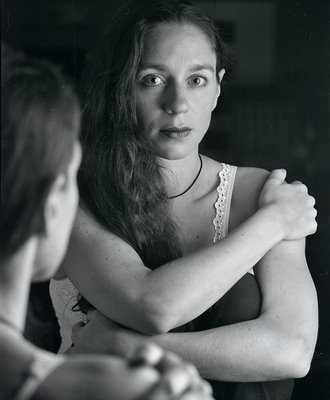
Every once in a while I get calls from young photographers who want to watch me work. In most cases I turn down their requests as the majority of my photographic sessions are one-on-one and a bystander would break the bond on which I depend on for my photograph. I might take only (recently, in particular) five or six photographs but the short session is preceded by a chat session where I talk with my subject and attempt to find a common ground. Years ago when those phone calls were much more frequent I did have jobs with makeup artists and stylists so I would sometimes agree to let that young photographer have a look. But then they made me nervous. I know of myriad ways of breaking equipment because I have broken equipment in myriad ways. I found myself watching these guys hoping they would not trip on some cable and have my lights come crashing down.
But I can see the value of seeing someone with more experience work. This is why I consider myself so fortunate to get, once in a while a communication like the one that follows:
Choreography by Day Helesic/MovEnt
Performance by Day Helesic and Chengxin Wei
Please join us for one of our open rehearsals of Around the Block (Excerpt), a newly created section of MovEnt's second full length choreography, Around the Block. Feedback and discussion are welcome!
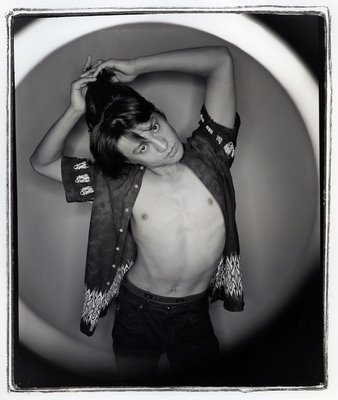
From the first blush of romance, to moments of turmoil and solitude, to a superhuman effort to revive what has been lost, a couple who has been “around the block” discover that nothing stays the same forever.
The full length Around the Block is a choreography inspired by New York City, a city rife with urban turmoil. The collision of architectural styles, the collision of cultures and the collision of people will inspire an energetic dance work that delves deep into the inner workings of an urban centre. Four characters will discover their place within this metropolis of strangers.
Open rehearsal schedule:
Monday Dec 10th: 8:30pm at The Dance Centre (Jarislowsky studio, 3rd floor)
Tuesday Dec 11th: 8:30pm at The Dance Centre (Jarislowsky studio, 3rd floor)
I attended last night sessions. I would never know why it wasn't full of people jumping for the chance to see two of Vancouver's finest dancer/choregraphers do their stuff. There were two young women, Tara Cheyenne Friedenberg and her husband Marc Stewart. Stewart was there, as the music composer, and so was lighting designer Alan Brodie. Neither of them had seen the excerpt before. This was to be the fourth performance. It was raw, and done on a sticky (dangerous) floor. The lighting was a depressing overhead that at one time would have induced on me a migraine.

And it was wonderful as I felt unique in being able to get a glimpse of a dance at its beginning with the eventual pleasure of seeing the finished product in 2009. I tried to put myself in the place of the composer and the lighting designer. What would I cook up?
And as always I found myself marveling at the intelligence and the articulate demeanor of our Vancouver dancers. In a recent photo session with National Ballet of Canada founder Grant Strate I commented on this. He told me that there were some "not so articulate" dancers out there but I have been lucky or perhaps we are lucky in Vancouver to have this intelligent and passionate bunch.
The raw excerpt had lots of genuine reality in which Helesic and Wei acted tired and angry as they explored a relationship compressed to 30 minutes and representing one street of a complete turn (4 blocks) of a New York City block. They will share the work with dancers Amber Funk Barton (seen above with husband Chris) and Shay Kuebler, holding his tap shoes.
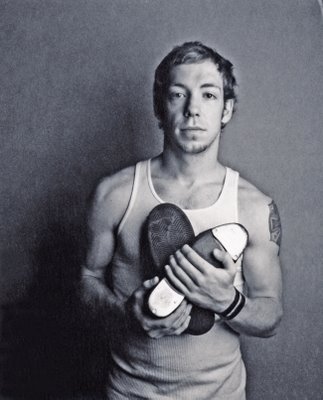
Helesic's experiment is an interesting one. She is choreographing her impression of New York City now even though she plans to visit the city in June, 2008, for the first time. Interesting, too, was her direction to Marc Stewart, "I want no saxophones or city noises and horns."
I cannot wait but feel fortunate to see an artistic work in progress.
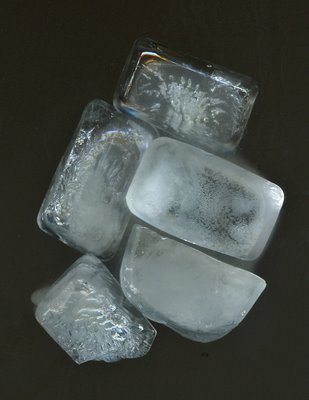
If I were to tell my Rebecca that I flew in a DC-3 she would not know what I was talking about. If I told her that in Buenos Aires we had our ice delivered every four days by the hielero (the ice man) and that a cloaquero or drain man came to my house to clear our drains once a month (the stench!), she would not understand. She is from a generation that has no reason to look up into the sky when it hears the noise of an airplane.
But she is not all that far gone. A few years ago I took her to the Abbotsford Air Show and I asked her which airplane was her favourite. Her replay was instant, "I like the F-15 because it is the loudest."
When Rebecca comes over on Saturdays the first thing she does is raid our refrigerator. I would never tell her not to. I remember the first time I opened a refrigerator door. It was exciting. After all it was in 1952 and I was ten. Until that year that hielero had delivered a block of ice (I am not sure) about once a week. But since my mother, who taught at the Buenos Aires American School, had friends and connections with the US Embassy she brought home stuff like poppy seed bagels, Erector sets, Bazooka and Double Bubble gum, and that wonderful used Kelvinator which made me king of the block. A neighbour had a spanking new Ford V-8 but that was nothing compared to our heladera. In the heladera I made my first package of lime Jell-O. Royal, the Argentine brand, wasn't good enough and lemon Royal was simply not green at all! I remember concocting what I called a refrigerio. I would slice sweet Scraping at them with a spoon was a delight. The most beautiful aspect of our heladera is that it had the compressor motor sitting on the top. Looking back I think it resembled a Russian space station.
The heladera became a refrigerador in Mexico City but my mother insisted it be a Kelvinator. When she moved to Veracruz in the late 50s she bought a Kelvinator there. We brought that Kelvinator back to Mexico City when Rosemary and I installed ourselves in the outskirts of Mexico City. We quickly outgrew it. We needed a bigger one. I sold the the Kelvinator to one of my English students. A day later I received an irate call from her. She was sending it back. It was disgusting she protested. I had not checked the back of the fridge and it had traveled from Veracruz with nests of cockroaches. The insect was impossible to erradicate in Veracruz and we had learned to live with them. In the end we scrapped it and bought a Kenmore at Sears Roebuck the Mexico.
Every once in a while when Rebecca raids our present Kenmore (the Richmond store) she asks me to read her a poem that is one of our favourites. And when I do so she repeats the words at the same time as she knows it by heart.
This Is Just To Say
I have eaten
the plums
that were in
the icebox
and which
you were probably
saving
for breakfast
Forgive me
they were delicious
so sweet
and so cold
William Carlos Williams
To further complicate matters, Spaniards call the Argentine heladera and the Mexican refrigerador a frigorífico. My Spanish grandmother made it much more simple. She always called it la Kelvinator. Because of fluctuating voltage in Latin America, fridges never last more than a couple of years before their compressor motors burn out. The rewiring of the motor cores is a thriving business. The mechanic shops advertise as rebobinado (re-coring). Since the freon or the freon substitute coolant gas escapes during this operation there is another business....
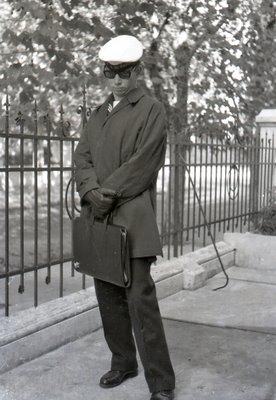
The last real overcoat I ever owned was when I was a child. It was a hand-me-down from my rich cousin Robin Tow whose father owned the ritzy Buenos Aires department store, Casa Tow in the late 40s. In Argentina the overcoat was never called an abrigo (Spanish for coat) but a sobretodo which means "over everything". When we moved to Mexico City it never really got cold enough for one. In my 5 years in Austin, Texas it was bitterly cold in winter but I got by with rain jackets.
It was in the Argentine Navy that I was issued something close to a an overcoat. We called it a gabán. It was a poor quality canvas type blue raincoat. It had a cheap removable lining that was made of Argentine wool. It kept me warm even in those humid Buenos Aires winters when you could smell the River Plate as it sent cold winds that would sneak up Calle Corrientes. I would often walk up Corrientes to bars that served submarinos. These were glasses of scalding hot milk held by a metal cup and served with a long spoon and a large bar of bitter chocolate that melted away the cold.
In 1974 Rosemary, my two daughters Ale (6), Hilary (3) and I drove, from Mexico in our VW beetle to a holiday in San Francisco. One afternoon I went to an army surplus store and bought me a US Air Force overcoat that was a middle blue, double breasted with nice metal buttons. The material was like a thick wool blanket. It was heavy and it kept me warm. Because we had been teaching English in Westin Hotels in Mexico City we had a heavy discount at the St Francis Hotel on Union Square. On my way back (wearing my blue overcoat) to the hotel I decided to see a film I had read so much about. It was Deep Throat. This was the first pornographic film I ever saw. I never saw another. In front of me were two black men eating from huge bags of pop corn and exchanging loud comments on what was happening on screen. From then on I always associated my overcoat with that film. I wore it in Vancouver until age finally made me realize I was not going to be thin all my life the way my father had been. The coat felt tight and I got rid of it. Since then I have made do with raincoats over sweaters or simply braved the cold between my parked car and walking with Rosemary to the opera or the ballet at the Queen Elizabeth Theatre.
In the early 80s I photographed porn star Marilyn Chambers in her Four Season's Hotel room in Vancouver. Nearby was the scary man Chuck Traynor who had been Linda Lovelace's manager when Lovelace filmed Deep Throat. He was Chamber's manager. When writer Les Wiseman and I left Chambers and Traynor we felt a chill go over us.

Sometime in the mid 90s Wiseman and I passed by the Marble Arch and we entered to see a woman who was being billed as the new Marilyn Chambers. Her breasts had been augmented to resemble the engine nacelles of a B-24 Liberator bomber. Wiseman lost interest and beckoned us to leave. I stopped him when I pointed out the man who was taking the Polaroids of patrons posing by the Chambers replacement. "That's Chuck Traynor." It was and we promptly paid our $10 bucks each to have our picture taken. The whole point was not who was in the picture but who had taken it. I looked at Traynor and he never met my eyes. Wiseman told me he owed huge sums to the US tax department. He seemed to be almost another person. But he was still scary. The Polaroid disappeared in my library. Perhaps it is inside a book. Somehow when Traynor took my photograph the "stain" on my US Air Force overcoat disappeared from my memory.
I forgot all about it until this week when I finally bought myself my first real adult overcoat. It is a black, all wool London Fog. It is pristine and warm. I am a happy man.
Yesterday was a sort of a dancing red letter day. At noon I photographed in my studio Grant Strate (about to be 80) who is a founding member of the National Ballet of Canada. After watching The Red Balloon as a visual appetizer for Rebecca and Lauren, the three of us watched Robert Altman's The Company (with Neve Campbell who also wrote the story). This is a dance film, part documentary which really is only for the serious aficionado. I was pleased that both Lauren and Rebecca enjoyed it. When Rebecca watched real dancer Neve Campbell remove bandaids and tape from her sore toes she remarked how ugly her feet were. I remembered asking Ballet BC dancer Lauri Stallings (photo in colour) if I could photograph her feet. "They are so ugly, "she said, "Why would you want to do something like that?" I wanted to and I did. I discovered a whole new world (notice that Stallings has her name and a personal number on the soles of her custom-made shoes). It was a world that Wyman completed in spades in his essay below. It all began when someone at the Sun (Larry Emeric, I believe) told me that Wyman collected ballerina's pointe shoes. When I suggested a story to him he readily agreed. In those days you could dream up stories. Newspapers and magazines would run them. I miss those days as much as I miss Wyman's arts criticism and reviews.
----------------------------------------------------------------------------------------------------------------------------------
When the 19th - century ballerina Marie Taglioni rose in her toes in La Sylphide , effectively redefining the expressive potential of the art form, Russian fans were so enraptured that they cooked her slippers and ate them.
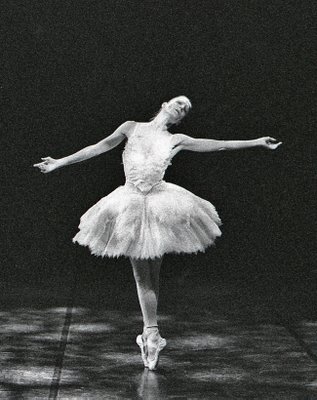
Dance fans have always been extreme, of course (and I'm not even thinking about the hard-core toe shoe fetishists who have their own members-only Web site). Drinking champagne from the ballerina's shoe used to be a popular way for stage-door Johnies to demonstrate their adoration ... though if you tried it today you might find your fizz flavoured by an aromatic modern anti-fungal cream.
My own involvement amounts to a modest collection of signed, used shoes that function as memory-prods for some of the most sublime evenings I have spent in the theatre. Among them are several pairs from the magical Evelyn Hart, left,(as Juliet, as Odette/Odille, as Giselle), a pair from Karen Kain, and a pair I removed personally from the feet of Kirov Ballet's luminous Yulia Makhalina.
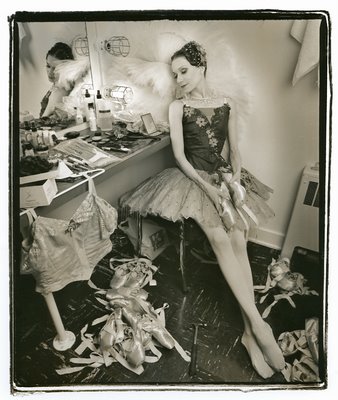
Yes, Personally - on my knees on a filthy floor, trying to avoid the scummy puddle from an overflowing sink, in a dressing room in the Maryinsky Theatre in St. Petersburg. She had just sent a packed house into a delirium of rythmic clapping a the end of Swan Lake, and here she was, bouquets still in her arms, flopped exhausted on a chair, letting me unlace the ribbons and ease the hot shoes from her exquisite feet.
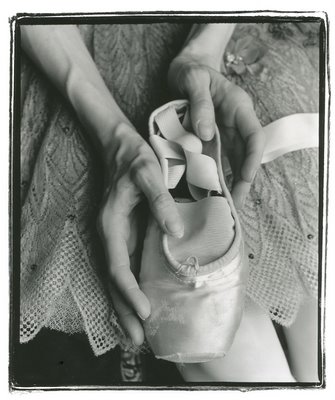
Well, perhaps you had to be there. Often, after all, dancers' feet are not a pretty sight. They bruise, they bleed, they develop bunions. Vancouver's Jean Orr, Canada's first Giselle, remembers the days when "we didn't have all the wonderful toe protectors they have today. We just bled into our shoes." Then she'd go home and scrub the dried blood out of the satin with a tooth brush.
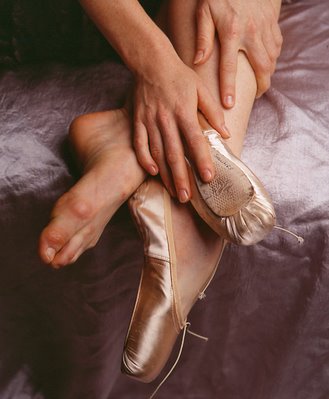
Realistically, there is no logical reason why human beings would want to dance on pointe . It's unnatural (human feet evolved the way they did for good and sensible reasons) and, for those who do it, it's uncomfortable and hugely painful.
So why do it? In a word, for art. Taglioni, who premiered La Sylphide in 1832, probably wasn't the first to dance on pointe. The historians place its start as early as the beginning of the 19th century, maybe before, though the shoes in use then were hardly more than slippers, and dancers stayed on their toes for barely a second. Even Taglioni didn't have the benefit of today's hard blocked toe shoes, because they hadn't been invented.
But she's the one who first used the trick to make an artistic impression. And that's the secret of its enduring appeal. Dancing on pointe reinforced the sense of ethereality and other-wordliness that was so vital to the Romantic ballet, with its tales of sprites and fairies and bewitchment. With feet that seem never to end, the ballerina seems to float, immortal, the epitome of feminine virtue, a spirit of the supernatural.
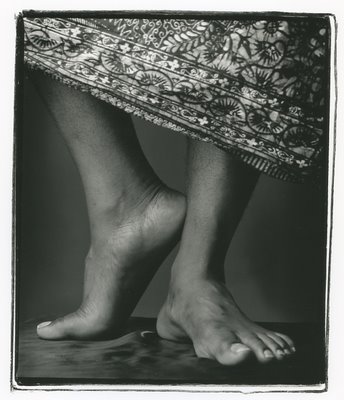
Examine the photograph on this page of Evelyn Hart in her dressing room. it's a typical dilemma for her: which shoes will she wear tonight? Will any of them be suitable? She will often try dozens before making a choice.
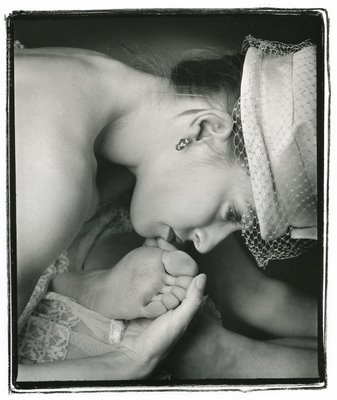
Like most professional dancers, Hart gets her shoes custom-made from cobblers who work to her unique last. Not that "cobbler" really defines the task. Ballet shoes are really layers of fabric and glue, baked to provide stiffness. They have a hard "platform" in the toe on which the dancer balances, and a series of thin leather and carboard soles. They don't usually come in lefts and rights; for that matter, a chosen pair may not actually match, since a dancer may have differently sized feet.
But the making of the shoe is only the beginning of the adventure. New shoes are often stiff and need breaking in to allow unforced jumping and rising into pointe. A ballerina must sew on her ribbons, and most will make person adjustments, some of them scoring the soles to allow the foot more flexibility, some ripping out lining, some darning the toes for better grip. Since a principal dancer can get through a couple of pairs of shoes in a single performance, this is an endless process.
The human foot is a complex structure. It consists of 26 bones, connected by ligaments. Seven bones form the instep; five metatarsals form the ball of the foot; 14 phalanges form the toes (two in the big toe, three in each of the others).
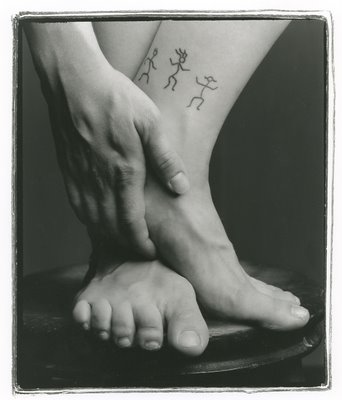
The ideal foot for a toe shoe has toes of nearly equal length; long big toes or second toes can be problematic, because they have to support the whole body weight. In the process of lengthening the line of the leg, the point shoe helps tone the calf muscles, and develops strength in the ankles and feet, which lets dancers handle more easily the technical demands of modern choreographers.
The feet and legs are a dancer's most important tools, and they have to be treated accordingly. Dancers have their own rules for shoes. Keep the toenails trimmed short. Choose shoes that fit like a second skin - loose shoes promote blisters. (About three sizes smaller than your street shoes seems the preferred choice.)
To prevent the rubbing that causes blisters and bleeding, many dancers line their shoes with lamb's wool or other padding (though cushioned shoes are also available these days). Foot binding with tape is common, and dancers will also wrap their feet in newspaper before inserting them into the toe shoe. Sometimes people use bits of cotton to separate the toes, and tape toes individually with Elastoplast. Synthetic skin, widely available at pharmacies helps staunch bleeding.
Even modern dancers who work without shoes will tape individual toes to reduce friction, though many don't need to do that because years of barefoot work have developed protective calluses. Vancouver choreographer and former dancer, Judith Marcuse remembers using methylated spirits to toughen the skin so it wouldn't bleed and blister, though it was important to make sure that the calluses that were created didn't separate from the skin.
Former Royal Winnipeg Ballet principal Leslie Fields, a Vancouverite now living on Bowen Island, had her own way of reducing swelling. She would go back to her hotel room after a performance, pour herself a drink, sit on the edge of the bath and stick her feet in the toilet. Repeated flushing kept a welcome flow of cold water on the suffering toes.
It's equally important to keep the feet properly exercised. Isometrics are big these days. A lot of dancers travel with resistance bands to help strengthen foot and ankle muscles (Marcuse remembers using cycle-tire inner tubes for the same reason). Another preferred hotel-room oot exercise involves standing your toes on the edge of a telephone book and dropping your heels to the floor.
Ballet historian Lincoln Kirstein called toe-dancing "the speech of the inexpressible," though of course all dancing is. Every step the dancer takes, every posture the body assumes, is visible; and yet, from that vocabulary of motion, a non visible language of ideas and emotions emerges.
What pointe work contributes to this, along with all that ethereality, is a transformation of the line of the body - a re-proportioning of the torso and the leg's musculature that somehow lets us understand ideas like nobility and tenderness and power in new ways.
When a ballerina poses, unsupported, secure, on a single point occupying only the tiniest piece of mortal ground, her body in immaculate balance, we have an illusion of transcendental achievement and serene glory that is as enviable as it is remote.
When she bourrées with the precision and speed of a knitting-machine on her pointed toes across the stage in The Dying Swan, or when - in a modern ballet, let's say - she stabs the stage with an arched toe, she is bringing us more than mere beauty. She is expressing essential emotion that strikes, without the mediation of words, straight to the heart, straight to the soul.
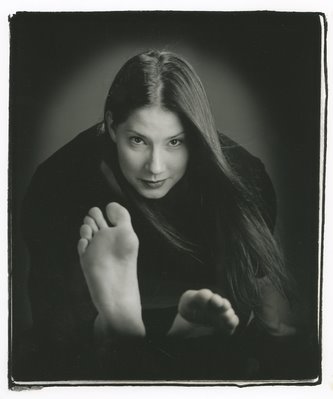
Today, of course, any and every form of movement is grist to the choreographer's mill, and the dancer's foot is called on to be more versatile than at any time in history. Look at the poised and healthy force in Laura Monteiro's resting feet, the tough undersides of Martha Lenonard's toes (wearing white hat), the gnarled, veined authority of Daylan Pflug, with those ankle tattoos of dancing stick figures. They're the tools that help the body speak the inexpressibles to us. If movement, as we are so often told, never lies, the feet are essential tools of truth.
The Vancouver Sun, Saturday, February 24, 2001
When then veteran Sun reporter and editor Max Wyman wrote the above he had been named an officer of the Order of Canada a week before. He is currently dealing with mud slides in his job of mayor of Lion's Bay. I am sure that his pointe shoe collection has grown considerably since then. I have added two pictures here which were not used by the Sun for lack of room. One is of Evelyn Hart en pointe in the Dying Swan and the other is of Emily Molnar (the last photograph above) showing off her feet.
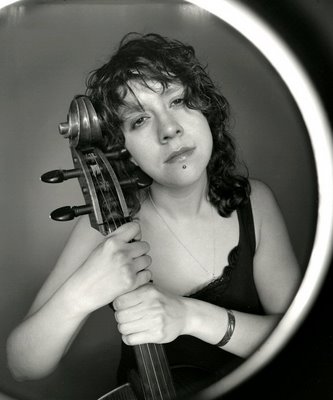
Brief Encounters 8 at the ANZA Club( I went last night on the last night) brought the combination of talents that at a first impression one would think shared no common ground. This unlikely idea came from the combined heads of the The Tomorrow Collective made up by modern dancers Mara Branscombe, Katy Harris-McLeod and Jennifer McLeish-Lewis. These three women confirm my suspicion that Vancuouver dancers are not only graceful, but articulate and intelligent, too!
Brief encounters gives 12 artists, paired up, two weeks to think of something. In most cases none of these artists and performers have never met before. To me it is going to be hard to surpass the ultimate brief encounter (Brief Encounters 6, I think) between Butoh dancer Jay Hirabayashi and a female bagpipes player.
But close was the collaboration of cellist Cris Derksen and Norman The Hairguy. Besides listening to Derksen's avant garde electronic cello The Hairguy injected some humour and made it twice as memorable.
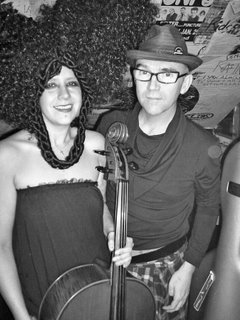
The only damper for me is the constant filling with sound (sometimes silence between performances is like Champagne between courses) by soundman Jacob Cino. He insists in playing reggae with drums, drums with reggae and drums with drums.
My revenge would consist in putting him in a room and have him listen to all of Haydn's symphonies. But this is just a small quibble. For Brief Encounters 9, April 16th to April 18th, I will take ear plugs. Meanwhile here's to the three beautiful black-wigged women of The Tomorrow Collective. Below is one of them, Katy Harris McLeod
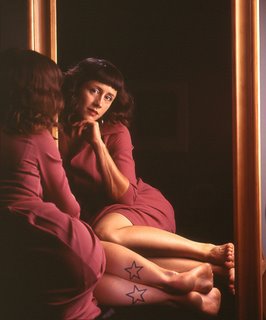
When I was 21 I wrote some poems to Buenos Aires cemeteries. I evidently thought then that I wasn't immortal. Now, for a change, I am afraid not to die.
Jorge Luís Borges
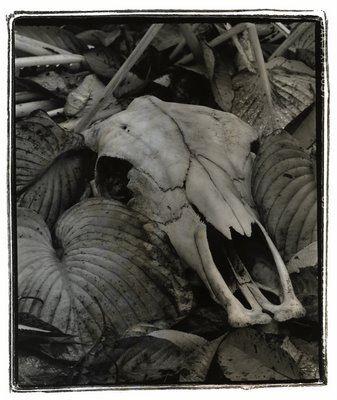
I remember very well sometime around 1950 riding a colectivo (bus) with my cousin Wenceslao and my Uncle Tony. We passed by a cemetery on our way to General Electric Field in the outskirts of Buenos Aires to fly a U-control Stuka (It crashed and burned as the wings bent and done to scale made it highly unstable. In the photograph in the above link my Uncle Tony built a Stuka with more conventional wings and this Stuka flew well.) As the colectivo was rounding the cemetery my Uncle Tony told us, "Some day when I am dead, and buried in yonder cemetery you will come and visit me and remember our good times together." My Uncle Tony died a few years ago in North Carolina and I was never able to find his son Wenceslao so we will probably never share those memories again. Three prominent Canadians died recently and I wrote my little memorials here: Jane Rule, James Barber and Norval Morrisseau. The latter's death and my remembering what Chris Dafoe wrote brought a rapid, pleasant and funny response from Dafoe:
The obit in the Globe ran under the byline of Donn Downey (aka Doctor Death), the longtime obit writer (and former entertainment editor) who obviously banked this one way back when, figuring Morrisseau was likely to pop off at any moment. In fact, he survived Downey by more than six years. Then again, I suppose it is the hope of every writer that their work live on after they die. In newspapers, obit writers are among the few who can count on that happening.
Somehow I find that funny and it made me remember another incident, not funny at all, that happened to my mother, Filomena de Irureta Goyena when she was a child in Manila. She wrote about it in this poem penned in Veracruz, Mexico in 1965:
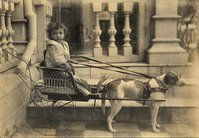
Posthumous Gift
"Your birthday's coming soon
What will you have for then?"
"But it's three months away....
Oh yes, I want the doll house in the store."
"Let's go see it dear child
It will be yours, I promise."
October came & took my father beyond
(or so they said)
My birthday just a few days later
Brought with it the doll house
And the card "To my dear daughter
On her birthday."
"He can't be gone, Mother!
See his card, his gift.
He's here, I know he's here."
I didn't believe or understand
Till I was seven years old.
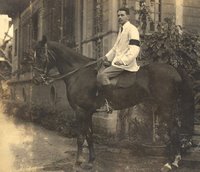
Death
More Death
Even More Death
And Even More Death
And More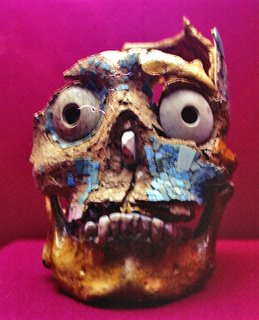
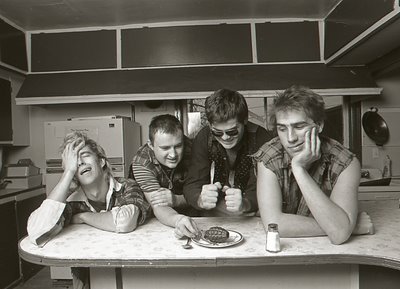 Men for All Ages
Men for All Ages
They were men for all ages
Captain Kirk, Spock, Scotty and Bones
They were men for all ages
Somehow evil was overthrown
They always strove for honour
Never fought for gold
Live long and prosper
Never really got old
Live long and prosper
Never really got old
Joe Keithley, Falling Apart Songs, SOCAN
I received an invitation from Joe "Shithead" Keithley to attend his band's (Band of Rebels) CD release party and fund raiser to help Marc Emery in his US court costs. The show was at the Plaza on Granville and Smythe. The Plaza used to be a movie theatre and its conversion was a happy one. It was an excellent venue with a very good and very loud (naturally!) sound system.
Even though I was in my pijamas and in bed by 10, I managed to get dressed and showed up at the Plaza, an hour later, with an element of anguish, dread and caution. Would I enjoy myself? At 65 am I too old for this sort of thing?
I was wrong on every count. The band was excellent with lots of variation. They would have a sax and trumpet or they had an extra drummer or a female vocalist. The band count was anywhere from 6 to 10 members at any given moment.
And the songs! The songs! I heard the ultimate rock paean to the original Star Treck (Men for All Ages), and a pop song I will be humming for a long time called People Power.
But what was the best was to run into faces from my past. I could have taken a digital camera along (there were many with digital cameras there) and show you what they look like now after 30 or more years.
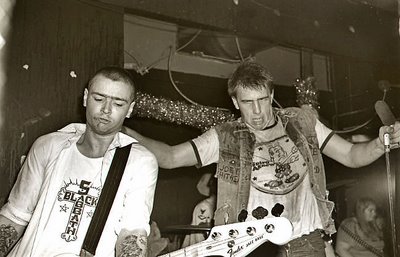
But I think I did well to leave my camera at home. I would rather remember them as they were, in their prime (although Joe seems to be from a Punk Portrait of Dorian Gray and has weathered very well).
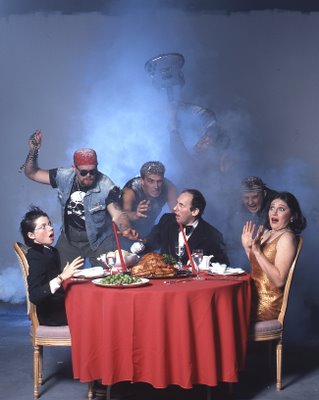
If I am 65 then DOA's original manager, Ken Lester would be close to my age. An old man he was with a smile on his face, all excited about the band's performance. "Alex they have rehearsed for about 6 hours for this and they never had all the band members in place at any given time." They sounded great to me. Ken is seen in the colour photograph sitting at Christmas dinner in a black tux. The little boy was and is Bev Davies's (read below) son.
The scary (but never scary in real life) Randy Rampage (below) with his long bleached blond hair and his motorcycle boots gave me a hug and placed a copy of the CD in my hands. "I am relinquishing my $0.14 royalty by giving this to you," he said.
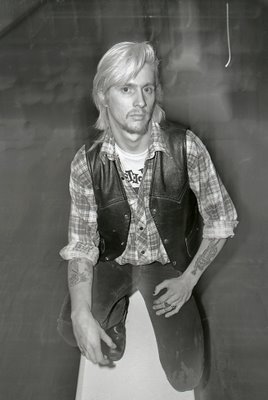
Jumping around, pogo style, up front was a stubby man with a smile on his face. It looked like former singer (The Subhumans) and former bassist (DOA) Wimpy Roy (in top b+w photograph second from left). But it couldn't have been Roy because of that smile. But it was. I tapped him on the shoulder and he beamed at me. At one time I would have treated him with a touch of fear and respect.
The band was so loud that I had to resort to the old trick of chewing on a VISA receipt and making a couple of moist little balls which I forced into my ears. The low frequencies sort of disappeared and I could hear Bill Runge's sax and John Korsrud's trumpet.
When the concert was over there was enough clapping that the band came back for an encore. And that's when the fun really began. The first encore was my fave People Power and then Joe's "bunch of reprobates" including Randy Rampage and Wimpy Roy jumped on stage and joined in for killer renditions of Goodnight Irene and Born to Be Wild. It was then when I spotted ex-punk photographer Bev Davies (sorry I don't have a picture of her) and the lovely Susanne Tabata (below, right) who is working on a documentary on Vancuver's punk scene of the 70s and 80s.

I had my picture taken with them and I felta bit old but I kept thinking of all my friends there who surely must be Men for All Ages. After all these years they have stuck to to their guns and unwavingly have stuck to what they do best which is to entertain us while making us aware of the inhumanity and greed of our times. Ah! If we only had a little help from:
Captain Kirk, Spock, Scotty and Bones
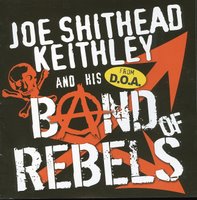
When I got into my car I slipped the CD into the player and I am happy to report that this is one "punk" record that is clean, hummable and the lyric sheet included is not really necessary. It's that clear.

Every once in a while I get calls from young photographers who want to watch me work. In most cases I turn down their requests as the majority of my photographic sessions are one-on-one and a bystander would break the bond on which I depend on for my photograph. I might take only (recently, in particular) five or six photographs but the short session is preceded by a chat session where I talk with my subject and attempt to find a common ground. Years ago when those phone calls were much more frequent I did have jobs with makeup artists and stylists so I would sometimes agree to let that young photographer have a look. But then they made me nervous. I know of myriad ways of breaking equipment because I have broken equipment in myriad ways. I found myself watching these guys hoping they would not trip on some cable and have my lights come crashing down.
But I can see the value of seeing someone with more experience work. This is why I consider myself so fortunate to get, once in a while a communication like the one that follows:
Choreography by Day Helesic/MovEnt
Performance by Day Helesic and Chengxin Wei
Please join us for one of our open rehearsals of Around the Block (Excerpt), a newly created section of MovEnt's second full length choreography, Around the Block. Feedback and discussion are welcome!

From the first blush of romance, to moments of turmoil and solitude, to a superhuman effort to revive what has been lost, a couple who has been “around the block” discover that nothing stays the same forever.
The full length Around the Block is a choreography inspired by New York City, a city rife with urban turmoil. The collision of architectural styles, the collision of cultures and the collision of people will inspire an energetic dance work that delves deep into the inner workings of an urban centre. Four characters will discover their place within this metropolis of strangers.
Open rehearsal schedule:
Monday Dec 10th: 8:30pm at The Dance Centre (Jarislowsky studio, 3rd floor)
Tuesday Dec 11th: 8:30pm at The Dance Centre (Jarislowsky studio, 3rd floor)
I attended last night sessions. I would never know why it wasn't full of people jumping for the chance to see two of Vancouver's finest dancer/choregraphers do their stuff. There were two young women, Tara Cheyenne Friedenberg and her husband Marc Stewart. Stewart was there, as the music composer, and so was lighting designer Alan Brodie. Neither of them had seen the excerpt before. This was to be the fourth performance. It was raw, and done on a sticky (dangerous) floor. The lighting was a depressing overhead that at one time would have induced on me a migraine.

And it was wonderful as I felt unique in being able to get a glimpse of a dance at its beginning with the eventual pleasure of seeing the finished product in 2009. I tried to put myself in the place of the composer and the lighting designer. What would I cook up?
And as always I found myself marveling at the intelligence and the articulate demeanor of our Vancouver dancers. In a recent photo session with National Ballet of Canada founder Grant Strate I commented on this. He told me that there were some "not so articulate" dancers out there but I have been lucky or perhaps we are lucky in Vancouver to have this intelligent and passionate bunch.
The raw excerpt had lots of genuine reality in which Helesic and Wei acted tired and angry as they explored a relationship compressed to 30 minutes and representing one street of a complete turn (4 blocks) of a New York City block. They will share the work with dancers Amber Funk Barton (seen above with husband Chris) and Shay Kuebler, holding his tap shoes.

Helesic's experiment is an interesting one. She is choreographing her impression of New York City now even though she plans to visit the city in June, 2008, for the first time. Interesting, too, was her direction to Marc Stewart, "I want no saxophones or city noises and horns."
I cannot wait but feel fortunate to see an artistic work in progress.
William Carlos Williams, Ice Boxes & Refrigerators
Tuesday, December 11, 2007

If I were to tell my Rebecca that I flew in a DC-3 she would not know what I was talking about. If I told her that in Buenos Aires we had our ice delivered every four days by the hielero (the ice man) and that a cloaquero or drain man came to my house to clear our drains once a month (the stench!), she would not understand. She is from a generation that has no reason to look up into the sky when it hears the noise of an airplane.
But she is not all that far gone. A few years ago I took her to the Abbotsford Air Show and I asked her which airplane was her favourite. Her replay was instant, "I like the F-15 because it is the loudest."
When Rebecca comes over on Saturdays the first thing she does is raid our refrigerator. I would never tell her not to. I remember the first time I opened a refrigerator door. It was exciting. After all it was in 1952 and I was ten. Until that year that hielero had delivered a block of ice (I am not sure) about once a week. But since my mother, who taught at the Buenos Aires American School, had friends and connections with the US Embassy she brought home stuff like poppy seed bagels, Erector sets, Bazooka and Double Bubble gum, and that wonderful used Kelvinator which made me king of the block. A neighbour had a spanking new Ford V-8 but that was nothing compared to our heladera. In the heladera I made my first package of lime Jell-O. Royal, the Argentine brand, wasn't good enough and lemon Royal was simply not green at all! I remember concocting what I called a refrigerio. I would slice sweet Scraping at them with a spoon was a delight. The most beautiful aspect of our heladera is that it had the compressor motor sitting on the top. Looking back I think it resembled a Russian space station.
The heladera became a refrigerador in Mexico City but my mother insisted it be a Kelvinator. When she moved to Veracruz in the late 50s she bought a Kelvinator there. We brought that Kelvinator back to Mexico City when Rosemary and I installed ourselves in the outskirts of Mexico City. We quickly outgrew it. We needed a bigger one. I sold the the Kelvinator to one of my English students. A day later I received an irate call from her. She was sending it back. It was disgusting she protested. I had not checked the back of the fridge and it had traveled from Veracruz with nests of cockroaches. The insect was impossible to erradicate in Veracruz and we had learned to live with them. In the end we scrapped it and bought a Kenmore at Sears Roebuck the Mexico.
Every once in a while when Rebecca raids our present Kenmore (the Richmond store) she asks me to read her a poem that is one of our favourites. And when I do so she repeats the words at the same time as she knows it by heart.
This Is Just To Say
I have eaten
the plums
that were in
the icebox
and which
you were probably
saving
for breakfast
Forgive me
they were delicious
so sweet
and so cold
William Carlos Williams
To further complicate matters, Spaniards call the Argentine heladera and the Mexican refrigerador a frigorífico. My Spanish grandmother made it much more simple. She always called it la Kelvinator. Because of fluctuating voltage in Latin America, fridges never last more than a couple of years before their compressor motors burn out. The rewiring of the motor cores is a thriving business. The mechanic shops advertise as rebobinado (re-coring). Since the freon or the freon substitute coolant gas escapes during this operation there is another business....
Deep Throat - Chuck Traynor & My New London Fog
Monday, December 10, 2007

The last real overcoat I ever owned was when I was a child. It was a hand-me-down from my rich cousin Robin Tow whose father owned the ritzy Buenos Aires department store, Casa Tow in the late 40s. In Argentina the overcoat was never called an abrigo (Spanish for coat) but a sobretodo which means "over everything". When we moved to Mexico City it never really got cold enough for one. In my 5 years in Austin, Texas it was bitterly cold in winter but I got by with rain jackets.
It was in the Argentine Navy that I was issued something close to a an overcoat. We called it a gabán. It was a poor quality canvas type blue raincoat. It had a cheap removable lining that was made of Argentine wool. It kept me warm even in those humid Buenos Aires winters when you could smell the River Plate as it sent cold winds that would sneak up Calle Corrientes. I would often walk up Corrientes to bars that served submarinos. These were glasses of scalding hot milk held by a metal cup and served with a long spoon and a large bar of bitter chocolate that melted away the cold.
In 1974 Rosemary, my two daughters Ale (6), Hilary (3) and I drove, from Mexico in our VW beetle to a holiday in San Francisco. One afternoon I went to an army surplus store and bought me a US Air Force overcoat that was a middle blue, double breasted with nice metal buttons. The material was like a thick wool blanket. It was heavy and it kept me warm. Because we had been teaching English in Westin Hotels in Mexico City we had a heavy discount at the St Francis Hotel on Union Square. On my way back (wearing my blue overcoat) to the hotel I decided to see a film I had read so much about. It was Deep Throat. This was the first pornographic film I ever saw. I never saw another. In front of me were two black men eating from huge bags of pop corn and exchanging loud comments on what was happening on screen. From then on I always associated my overcoat with that film. I wore it in Vancouver until age finally made me realize I was not going to be thin all my life the way my father had been. The coat felt tight and I got rid of it. Since then I have made do with raincoats over sweaters or simply braved the cold between my parked car and walking with Rosemary to the opera or the ballet at the Queen Elizabeth Theatre.
In the early 80s I photographed porn star Marilyn Chambers in her Four Season's Hotel room in Vancouver. Nearby was the scary man Chuck Traynor who had been Linda Lovelace's manager when Lovelace filmed Deep Throat. He was Chamber's manager. When writer Les Wiseman and I left Chambers and Traynor we felt a chill go over us.

Sometime in the mid 90s Wiseman and I passed by the Marble Arch and we entered to see a woman who was being billed as the new Marilyn Chambers. Her breasts had been augmented to resemble the engine nacelles of a B-24 Liberator bomber. Wiseman lost interest and beckoned us to leave. I stopped him when I pointed out the man who was taking the Polaroids of patrons posing by the Chambers replacement. "That's Chuck Traynor." It was and we promptly paid our $10 bucks each to have our picture taken. The whole point was not who was in the picture but who had taken it. I looked at Traynor and he never met my eyes. Wiseman told me he owed huge sums to the US tax department. He seemed to be almost another person. But he was still scary. The Polaroid disappeared in my library. Perhaps it is inside a book. Somehow when Traynor took my photograph the "stain" on my US Air Force overcoat disappeared from my memory.
I forgot all about it until this week when I finally bought myself my first real adult overcoat. It is a black, all wool London Fog. It is pristine and warm. I am a happy man.
The Pointe Of It All - Max Wyman - A Dancing Shoe Aficionado
Sunday, December 09, 2007
Yesterday was a sort of a dancing red letter day. At noon I photographed in my studio Grant Strate (about to be 80) who is a founding member of the National Ballet of Canada. After watching The Red Balloon as a visual appetizer for Rebecca and Lauren, the three of us watched Robert Altman's The Company (with Neve Campbell who also wrote the story). This is a dance film, part documentary which really is only for the serious aficionado. I was pleased that both Lauren and Rebecca enjoyed it. When Rebecca watched real dancer Neve Campbell remove bandaids and tape from her sore toes she remarked how ugly her feet were. I remembered asking Ballet BC dancer Lauri Stallings (photo in colour) if I could photograph her feet. "They are so ugly, "she said, "Why would you want to do something like that?" I wanted to and I did. I discovered a whole new world (notice that Stallings has her name and a personal number on the soles of her custom-made shoes). It was a world that Wyman completed in spades in his essay below. It all began when someone at the Sun (Larry Emeric, I believe) told me that Wyman collected ballerina's pointe shoes. When I suggested a story to him he readily agreed. In those days you could dream up stories. Newspapers and magazines would run them. I miss those days as much as I miss Wyman's arts criticism and reviews.
----------------------------------------------------------------------------------------------------------------------------------
When the 19th - century ballerina Marie Taglioni rose in her toes in La Sylphide , effectively redefining the expressive potential of the art form, Russian fans were so enraptured that they cooked her slippers and ate them.

Dance fans have always been extreme, of course (and I'm not even thinking about the hard-core toe shoe fetishists who have their own members-only Web site). Drinking champagne from the ballerina's shoe used to be a popular way for stage-door Johnies to demonstrate their adoration ... though if you tried it today you might find your fizz flavoured by an aromatic modern anti-fungal cream.
My own involvement amounts to a modest collection of signed, used shoes that function as memory-prods for some of the most sublime evenings I have spent in the theatre. Among them are several pairs from the magical Evelyn Hart, left,(as Juliet, as Odette/Odille, as Giselle), a pair from Karen Kain, and a pair I removed personally from the feet of Kirov Ballet's luminous Yulia Makhalina.

Yes, Personally - on my knees on a filthy floor, trying to avoid the scummy puddle from an overflowing sink, in a dressing room in the Maryinsky Theatre in St. Petersburg. She had just sent a packed house into a delirium of rythmic clapping a the end of Swan Lake, and here she was, bouquets still in her arms, flopped exhausted on a chair, letting me unlace the ribbons and ease the hot shoes from her exquisite feet.

Well, perhaps you had to be there. Often, after all, dancers' feet are not a pretty sight. They bruise, they bleed, they develop bunions. Vancouver's Jean Orr, Canada's first Giselle, remembers the days when "we didn't have all the wonderful toe protectors they have today. We just bled into our shoes." Then she'd go home and scrub the dried blood out of the satin with a tooth brush.

Realistically, there is no logical reason why human beings would want to dance on pointe . It's unnatural (human feet evolved the way they did for good and sensible reasons) and, for those who do it, it's uncomfortable and hugely painful.
So why do it? In a word, for art. Taglioni, who premiered La Sylphide in 1832, probably wasn't the first to dance on pointe. The historians place its start as early as the beginning of the 19th century, maybe before, though the shoes in use then were hardly more than slippers, and dancers stayed on their toes for barely a second. Even Taglioni didn't have the benefit of today's hard blocked toe shoes, because they hadn't been invented.
But she's the one who first used the trick to make an artistic impression. And that's the secret of its enduring appeal. Dancing on pointe reinforced the sense of ethereality and other-wordliness that was so vital to the Romantic ballet, with its tales of sprites and fairies and bewitchment. With feet that seem never to end, the ballerina seems to float, immortal, the epitome of feminine virtue, a spirit of the supernatural.

Examine the photograph on this page of Evelyn Hart in her dressing room. it's a typical dilemma for her: which shoes will she wear tonight? Will any of them be suitable? She will often try dozens before making a choice.

Like most professional dancers, Hart gets her shoes custom-made from cobblers who work to her unique last. Not that "cobbler" really defines the task. Ballet shoes are really layers of fabric and glue, baked to provide stiffness. They have a hard "platform" in the toe on which the dancer balances, and a series of thin leather and carboard soles. They don't usually come in lefts and rights; for that matter, a chosen pair may not actually match, since a dancer may have differently sized feet.
But the making of the shoe is only the beginning of the adventure. New shoes are often stiff and need breaking in to allow unforced jumping and rising into pointe. A ballerina must sew on her ribbons, and most will make person adjustments, some of them scoring the soles to allow the foot more flexibility, some ripping out lining, some darning the toes for better grip. Since a principal dancer can get through a couple of pairs of shoes in a single performance, this is an endless process.
The human foot is a complex structure. It consists of 26 bones, connected by ligaments. Seven bones form the instep; five metatarsals form the ball of the foot; 14 phalanges form the toes (two in the big toe, three in each of the others).

The ideal foot for a toe shoe has toes of nearly equal length; long big toes or second toes can be problematic, because they have to support the whole body weight. In the process of lengthening the line of the leg, the point shoe helps tone the calf muscles, and develops strength in the ankles and feet, which lets dancers handle more easily the technical demands of modern choreographers.
The feet and legs are a dancer's most important tools, and they have to be treated accordingly. Dancers have their own rules for shoes. Keep the toenails trimmed short. Choose shoes that fit like a second skin - loose shoes promote blisters. (About three sizes smaller than your street shoes seems the preferred choice.)
To prevent the rubbing that causes blisters and bleeding, many dancers line their shoes with lamb's wool or other padding (though cushioned shoes are also available these days). Foot binding with tape is common, and dancers will also wrap their feet in newspaper before inserting them into the toe shoe. Sometimes people use bits of cotton to separate the toes, and tape toes individually with Elastoplast. Synthetic skin, widely available at pharmacies helps staunch bleeding.
Even modern dancers who work without shoes will tape individual toes to reduce friction, though many don't need to do that because years of barefoot work have developed protective calluses. Vancouver choreographer and former dancer, Judith Marcuse remembers using methylated spirits to toughen the skin so it wouldn't bleed and blister, though it was important to make sure that the calluses that were created didn't separate from the skin.
Former Royal Winnipeg Ballet principal Leslie Fields, a Vancouverite now living on Bowen Island, had her own way of reducing swelling. She would go back to her hotel room after a performance, pour herself a drink, sit on the edge of the bath and stick her feet in the toilet. Repeated flushing kept a welcome flow of cold water on the suffering toes.
It's equally important to keep the feet properly exercised. Isometrics are big these days. A lot of dancers travel with resistance bands to help strengthen foot and ankle muscles (Marcuse remembers using cycle-tire inner tubes for the same reason). Another preferred hotel-room oot exercise involves standing your toes on the edge of a telephone book and dropping your heels to the floor.
Ballet historian Lincoln Kirstein called toe-dancing "the speech of the inexpressible," though of course all dancing is. Every step the dancer takes, every posture the body assumes, is visible; and yet, from that vocabulary of motion, a non visible language of ideas and emotions emerges.
What pointe work contributes to this, along with all that ethereality, is a transformation of the line of the body - a re-proportioning of the torso and the leg's musculature that somehow lets us understand ideas like nobility and tenderness and power in new ways.
When a ballerina poses, unsupported, secure, on a single point occupying only the tiniest piece of mortal ground, her body in immaculate balance, we have an illusion of transcendental achievement and serene glory that is as enviable as it is remote.
When she bourrées with the precision and speed of a knitting-machine on her pointed toes across the stage in The Dying Swan, or when - in a modern ballet, let's say - she stabs the stage with an arched toe, she is bringing us more than mere beauty. She is expressing essential emotion that strikes, without the mediation of words, straight to the heart, straight to the soul.

Today, of course, any and every form of movement is grist to the choreographer's mill, and the dancer's foot is called on to be more versatile than at any time in history. Look at the poised and healthy force in Laura Monteiro's resting feet, the tough undersides of Martha Lenonard's toes (wearing white hat), the gnarled, veined authority of Daylan Pflug, with those ankle tattoos of dancing stick figures. They're the tools that help the body speak the inexpressibles to us. If movement, as we are so often told, never lies, the feet are essential tools of truth.
The Vancouver Sun, Saturday, February 24, 2001
When then veteran Sun reporter and editor Max Wyman wrote the above he had been named an officer of the Order of Canada a week before. He is currently dealing with mud slides in his job of mayor of Lion's Bay. I am sure that his pointe shoe collection has grown considerably since then. I have added two pictures here which were not used by the Sun for lack of room. One is of Evelyn Hart en pointe in the Dying Swan and the other is of Emily Molnar (the last photograph above) showing off her feet.
A Brief Encounter With A Cellist & The Hairdresser
Saturday, December 08, 2007

Brief Encounters 8 at the ANZA Club( I went last night on the last night) brought the combination of talents that at a first impression one would think shared no common ground. This unlikely idea came from the combined heads of the The Tomorrow Collective made up by modern dancers Mara Branscombe, Katy Harris-McLeod and Jennifer McLeish-Lewis. These three women confirm my suspicion that Vancuouver dancers are not only graceful, but articulate and intelligent, too!
Brief encounters gives 12 artists, paired up, two weeks to think of something. In most cases none of these artists and performers have never met before. To me it is going to be hard to surpass the ultimate brief encounter (Brief Encounters 6, I think) between Butoh dancer Jay Hirabayashi and a female bagpipes player.
But close was the collaboration of cellist Cris Derksen and Norman The Hairguy. Besides listening to Derksen's avant garde electronic cello The Hairguy injected some humour and made it twice as memorable.

The only damper for me is the constant filling with sound (sometimes silence between performances is like Champagne between courses) by soundman Jacob Cino. He insists in playing reggae with drums, drums with reggae and drums with drums.
My revenge would consist in putting him in a room and have him listen to all of Haydn's symphonies. But this is just a small quibble. For Brief Encounters 9, April 16th to April 18th, I will take ear plugs. Meanwhile here's to the three beautiful black-wigged women of The Tomorrow Collective. Below is one of them, Katy Harris McLeod

Doctor Death Checks Out Prematurely- Posthumous Thoughts
Friday, December 07, 2007
When I was 21 I wrote some poems to Buenos Aires cemeteries. I evidently thought then that I wasn't immortal. Now, for a change, I am afraid not to die.
Jorge Luís Borges

I remember very well sometime around 1950 riding a colectivo (bus) with my cousin Wenceslao and my Uncle Tony. We passed by a cemetery on our way to General Electric Field in the outskirts of Buenos Aires to fly a U-control Stuka (It crashed and burned as the wings bent and done to scale made it highly unstable. In the photograph in the above link my Uncle Tony built a Stuka with more conventional wings and this Stuka flew well.) As the colectivo was rounding the cemetery my Uncle Tony told us, "Some day when I am dead, and buried in yonder cemetery you will come and visit me and remember our good times together." My Uncle Tony died a few years ago in North Carolina and I was never able to find his son Wenceslao so we will probably never share those memories again. Three prominent Canadians died recently and I wrote my little memorials here: Jane Rule, James Barber and Norval Morrisseau. The latter's death and my remembering what Chris Dafoe wrote brought a rapid, pleasant and funny response from Dafoe:
The obit in the Globe ran under the byline of Donn Downey (aka Doctor Death), the longtime obit writer (and former entertainment editor) who obviously banked this one way back when, figuring Morrisseau was likely to pop off at any moment. In fact, he survived Downey by more than six years. Then again, I suppose it is the hope of every writer that their work live on after they die. In newspapers, obit writers are among the few who can count on that happening.
Somehow I find that funny and it made me remember another incident, not funny at all, that happened to my mother, Filomena de Irureta Goyena when she was a child in Manila. She wrote about it in this poem penned in Veracruz, Mexico in 1965:

Posthumous Gift
"Your birthday's coming soon
What will you have for then?"
"But it's three months away....
Oh yes, I want the doll house in the store."
"Let's go see it dear child
It will be yours, I promise."
October came & took my father beyond
(or so they said)
My birthday just a few days later
Brought with it the doll house
And the card "To my dear daughter
On her birthday."
"He can't be gone, Mother!
See his card, his gift.
He's here, I know he's here."
I didn't believe or understand
Till I was seven years old.

Death
More Death
Even More Death
And Even More Death
And More

 Men for All Ages
Men for All AgesThey were men for all ages
Captain Kirk, Spock, Scotty and Bones
They were men for all ages
Somehow evil was overthrown
They always strove for honour
Never fought for gold
Live long and prosper
Never really got old
Live long and prosper
Never really got old
Joe Keithley, Falling Apart Songs, SOCAN
I received an invitation from Joe "Shithead" Keithley to attend his band's (Band of Rebels) CD release party and fund raiser to help Marc Emery in his US court costs. The show was at the Plaza on Granville and Smythe. The Plaza used to be a movie theatre and its conversion was a happy one. It was an excellent venue with a very good and very loud (naturally!) sound system.
Even though I was in my pijamas and in bed by 10, I managed to get dressed and showed up at the Plaza, an hour later, with an element of anguish, dread and caution. Would I enjoy myself? At 65 am I too old for this sort of thing?
I was wrong on every count. The band was excellent with lots of variation. They would have a sax and trumpet or they had an extra drummer or a female vocalist. The band count was anywhere from 6 to 10 members at any given moment.
And the songs! The songs! I heard the ultimate rock paean to the original Star Treck (Men for All Ages), and a pop song I will be humming for a long time called People Power.
But what was the best was to run into faces from my past. I could have taken a digital camera along (there were many with digital cameras there) and show you what they look like now after 30 or more years.

But I think I did well to leave my camera at home. I would rather remember them as they were, in their prime (although Joe seems to be from a Punk Portrait of Dorian Gray and has weathered very well).

If I am 65 then DOA's original manager, Ken Lester would be close to my age. An old man he was with a smile on his face, all excited about the band's performance. "Alex they have rehearsed for about 6 hours for this and they never had all the band members in place at any given time." They sounded great to me. Ken is seen in the colour photograph sitting at Christmas dinner in a black tux. The little boy was and is Bev Davies's (read below) son.
The scary (but never scary in real life) Randy Rampage (below) with his long bleached blond hair and his motorcycle boots gave me a hug and placed a copy of the CD in my hands. "I am relinquishing my $0.14 royalty by giving this to you," he said.

Jumping around, pogo style, up front was a stubby man with a smile on his face. It looked like former singer (The Subhumans) and former bassist (DOA) Wimpy Roy (in top b+w photograph second from left). But it couldn't have been Roy because of that smile. But it was. I tapped him on the shoulder and he beamed at me. At one time I would have treated him with a touch of fear and respect.
The band was so loud that I had to resort to the old trick of chewing on a VISA receipt and making a couple of moist little balls which I forced into my ears. The low frequencies sort of disappeared and I could hear Bill Runge's sax and John Korsrud's trumpet.
When the concert was over there was enough clapping that the band came back for an encore. And that's when the fun really began. The first encore was my fave People Power and then Joe's "bunch of reprobates" including Randy Rampage and Wimpy Roy jumped on stage and joined in for killer renditions of Goodnight Irene and Born to Be Wild. It was then when I spotted ex-punk photographer Bev Davies (sorry I don't have a picture of her) and the lovely Susanne Tabata (below, right) who is working on a documentary on Vancuver's punk scene of the 70s and 80s.

I had my picture taken with them and I felta bit old but I kept thinking of all my friends there who surely must be Men for All Ages. After all these years they have stuck to to their guns and unwavingly have stuck to what they do best which is to entertain us while making us aware of the inhumanity and greed of our times. Ah! If we only had a little help from:
Captain Kirk, Spock, Scotty and Bones

When I got into my car I slipped the CD into the player and I am happy to report that this is one "punk" record that is clean, hummable and the lyric sheet included is not really necessary. It's that clear.
Thursday, December 06, 2007
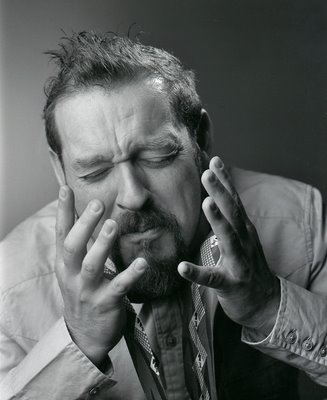
As more and more films deteriorate to glorified music videos or offer a half'n half vision of animation with the real, Rosemary and I have found solace and pleasure viewing the films of channel 46, Turner Classic Movies (TCM). I must even admit that we have some jury-rigged TV trays and we watch films while eating. Recently we viewed Cecil B. de Mille's The Greatest Show On Earth. Host, Robert Osborne made a comment on how this film was one of the last that represented the end of an era. There was hope and redemption in this film. There was little indication of the angst of a possible atomic holocaust. There was no revelation of the extreme greed of modern capitalism that so sadly affects our present times.
In many wasys Frank Capra's It's A Wonderful Life (1946) to me is a similar film. It is a classic three act film/play where we meet the hero in the first act, are introduced to the conflict and villain in the second and see the resolution in the third. But this is a film that somehow escaped my radar because my parents never took me to see it. My first viewing happened in Vancouver in the mid 70s.
Seeing it as a play in the Arts Club Theatre Company's production on the Granville Island stage was a refreshing treat over the yearly viewing of the film as a Christmas tradition. The fine adaptation as a play by Philip Grecian retains elements of the film by intelligent projection of parts of the film as part of the set design.
But my wife, who is a fan of director Dean Paul Gibson (above) wasn't fooled. She (She-who-does-not-like-anything) looked at me with a smile during the intermission and told me play has all kind wonderful Gibson touches. Perhaps she is right. Gibson's touches are based on the humour of a director who happens to be a fine actor and has the potential of being the best stand-up comedian this city has ever seen.
The cast is good but of special note is villain Henry Potter played by Kevin McNulty. I was never convinced by Lionel Barrymore in the film version. Kevin McNulty, who has a passing resemblance to Carroll O'Connor, is believable (scary real) as the modern greedy capitalist. He reminded me of past logging company and energy company executives I have photographed for business magazines and the Globe & Mail.
The whole situation of the huge conglomorate attempting to forcibly take over an independent institution (that is helping the disavantaged acquire homes of their own) parallels what seems to be the ills of Vancouver. At a recent city affairs lecture at Simon Fraser (downtown campus) ex-premier and author, Mike Harcourt said "There is one simple way to solve the problem of the homeless and this is to build them homes."
Or another comparison with the villanous Henry Potter is the situation of Arthur Erickson's Graham House in Horseshoe Bay. The present owner, Shiraz Lalji, wants to build a new, bigger home on the site, which he bought in 1988 for $925,000. He has applied for a demolition permit, which will probably be issued in the next few days. Reporter John Mackie of the Vancouver Sun recently wrote:
Shiraz Lalji is one of three brothers who own West Vancouver's Larco Developments, which owns Park Royal Shopping Centre and recently spent more than $1 billion buying seven buildings from the federal government and then leasing them back for 25 years. In 2006, Canadian Business magazine ranked the Lalji family the 50th richest in Canada, with a net worth of about $928 million.
I am guessing that Lalji, who probably lives in a wonderfully apointed flat in London would stay in Vancouver for a couple of weeks a year. Why would our architectural heritage in any way be of his importance?
But this has to end on a more positive and hopeful note. I am thinking of Sasa Brown (below) who plays the town's "fast girl" Violet Bick. To me she is much more interesting than the angelic and perfect Mary Hatch Bailey played well, as well as the plot allows her to, by Jennifer Lines. When Sasa Brown moves on stage, she moves on stage! And then I spotted those silk stockings with that seam in the back ("Start at the ankle and follow that seam all the way up, until it disappears... ," someone once told me.) on Brown's legs. Plus she wore satin!
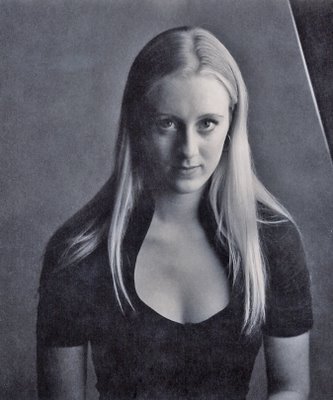
In a perfect It's A Wonderful Life, Clarence Oddbody would not give George Bailey the chance to see a world without him being born. It would be a world where he would have married Violet instead of Mary.
---------------------------------------------------------
Addendum
December 6 in the afternoon.
Henry Potter 1, George Bailey 0
Arthur Erickson's Graham house was demolished today.
Norval Morrisseau, 1935-2007
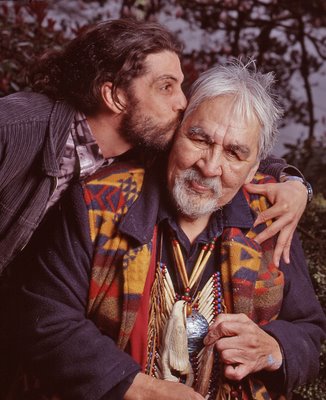
Sometime near the end of May 1999, Chris Dafoe, the Western Arts Correspondent in Vancouver for the Globe & Mail called me up most enthusiastically that I had to photograph a native (Ojibwa) artist, Norval Morrisseau with a strange ex-street person of Hungarian extraction Gabor (Gabe) Vadas. Vadas was Morrisseau's "adopted" son ("His kinship with the old man is not recognized by family or law," Dafoe wrote) after they met in the streets of Vancouver or as Dafoe wrote (he had interviewed both Morrisseau and Vadas at Joe Fortes on Thurlow and Robson):
A dozen years ago, those same people [diners at Joe Fortes] might have stepped over both the old Indian and the young Hungarian on their way to this restaurant. In the late 1980s, both Norval Morrisseau and Gabor Vadas were living on the streets of Vancouver. Morrisseau's presence on those streets - the news that he was selling sketches for the price of bottles of booze, sleeping in parks, prone to unintelligible rants, telling people that "to get drunk in Vancouver is the most beautiful thing there is" made national headlines in 1987. He was, after all, one of the most important artists this country had ever produced, a member of the Order of Canada, a man whose work was collected by major galleries across Canada and around the world.
Dafoe finished his fine interview:
As lunch wound down and the coffee grew cold, Vadas continued to talk about life with Norval. When he was asked how their relationship has changed over the years, it became clear that he sees himself s more than just a caretaker or an agent, even more than a son. "Our relationship started out as student and teacher, because Norval is a grand shaman," he said. "I think it has evolved into a relationship of two teachers. Norval has figured out how to get the power and how to hand it down to me. He's taken me as an apprentice. If Norval died tomorrow, he wouldn't be leaving this world, because he would continue to see it through me."
The old Indian looked on silently, through heavy lidded eyes, as his Hungarian son talked excitedly about mystical tales of legend and the power they possess. It is a world the old man knows well, a world that has been much kinder to him than this one.
Chris Dafoe, April 10, 1999 The Globe & Mail
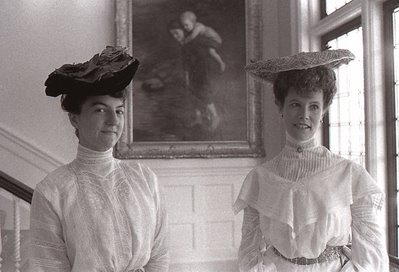
Excuses sometimes happen for very good reasons. For example it is very pleasant to be depressed if one then has the excuse to ameliorate it with the purchase of a pair of shoes or a thick chocolate milkshake at The Red Onion on 41st Avenue in Kerrisdale.
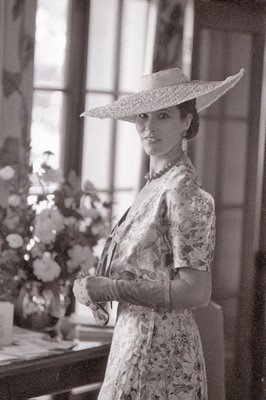
In the case here the excuse is hazy. The excuse is a book I bought for a quarter not too long ago at a book bin in Safeway at Oakridge Centre. It came as a discard from the West Vancouver Memorial Library. It is a 1982 British Edition (Butler & Tanner Ltd) of The Noël Coward Diaries edited by Graham Payn & Sheridan Morley. The picture of Noël Coward may have been taken in the 60s judging by the tie and the vintage typewriter (could it be a Hermes or an Olivetti?). But the other photos could represent the Coward years earlier in the 20s and 30s.
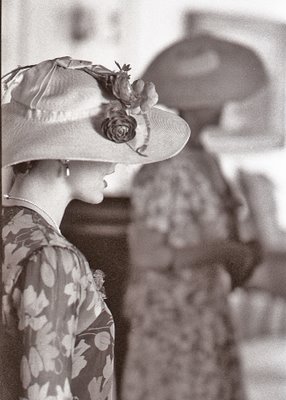
The diary covers from 1941 to 1969 which is way off, to match the look of the photographs I took perhaps 15 years ago at Hycroft (the University Women's Club of Vancouver) at 16th and MacRae Avenue. The clothing and underwear came from the collection of Ivan Sayers and the Vancouver Museum.
But the excuse is sufficient for me to note here some of my favourite entries of this book that never leaves my bedside table.
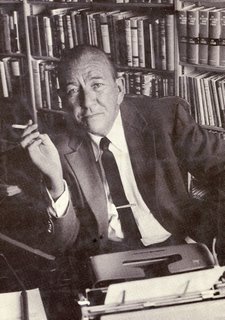
Saturday August 6 1960 Paris
....I have just read carefully, Waiting for Godot, and in my considered opinion it is pretentious giberish, without any claim of importance whatsoever. I know that it received great critical acclaim and I also know that it's silly to go on saying how stupid the critics are, but this really enrages me. It is nothing but phoney surrealism with occasional references to Christ and mankind. It has no form, no basic philosopy and absolutely no lucidity. It's too conscious to be written off as mad. It's just a waste of everybody's time and it made me ashamed to think that such balls could be taken seriously for the moment.
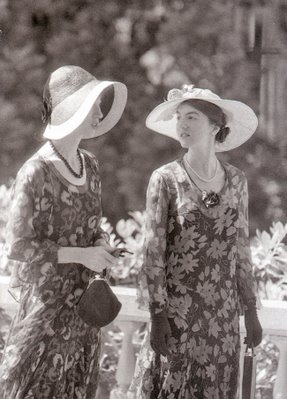
To continue in this carping vein, I have also read The Charioteer by Miss Mary Renault. Oh dear, I do wish well-intentioned ladies would not write books about homosexuality. This one is turgid, unreal and so ghastly earnest. It takes the hero - soi-disant - three hundred pages to reconcile himself to being queer as a coot, and his soul-searching and deep, deep introspection is truly awful. There are 'queer' parties in which everyone calls everyone 'my dear' a good deal, and over the whole book is a shimmering lack of understanding of the subject. I'm sure the poor woman meant well but I wish she'd stick to recreating the glory that was Greece and not fuck about with dear old modern homos.
Tuesday 11 December 1962 London
....On Monday I lunched with Joyce and did some shopping, and in the evening took Rebecca to the premiere of Lawrence of Arabia. It was a grand gala for the Queen, Prince Philip and all. A truly magnificent picture, brilliantly directed and acted and superbly photographed. Peter O'Toole very fine and far, far more attractive than Lawrence could ever hope to be. I said to him afterwards that if Lawrence had looked like him there would have been many more than twelve Turks queueing up for the buggering session....
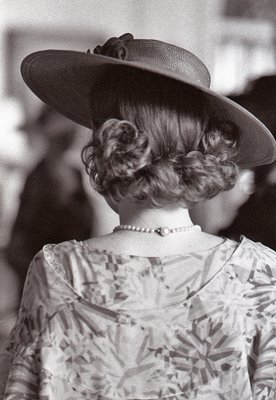
The woman (right) on the first photograph above is Patricia Keen one of the bassoonists of the Vancouver Philharmonic Orchestra. She is also the woman in the second photograph, right.

While snorkel diving near the Gulf of Mexico Isla Sacrificios, off Veracruz I happened to step on a sea urchin. The Mexican Red Cross could not help me much as most of the needles broke off, painfully, on the surface of my feet. A year later in 1967 the last of the glass-like needles was ejected by my body. Since then I have had the attitude that the sea is out to get me and that I must be resolute and careful when in it. I feel the same about snow. I respect both.
In my years in Argentina the skies brought us plagues of grasshoppers or white butterflies in the millions. Pamperos, or winds from the interior, brought dust that almost clouded the sky. But I never saw snow. I could look at the horizon on the pampa, turn my head around 360 degrees with nothing, except maybe a lonely ombú ( a large tree-like shrub of the Argentine Pampa), breaking the pleasant monotony. The closest I ever got to snow in Buenos Aires was watching my father spray our Chrismas tree with a can of Noma Snow, a few days before December 25th with the contrast of temperatures that hovered around 35. It is summer down there.
My first glimpse of snow, real snow, not the picture kind, happened in Mexico City in 1955. When I arrived there, the skies were transparent. There was no pollution to hide the beautiful volcanoes, Popocatepetl and Ixtaccihuatl. I did not touch snow until sometime in the late 60s when it snowed at higher elevations near Mexico City in a place called El Desierto de los Leones (the Desert of the Lions). It melted before I could decide if I liked it or not.
In my first year in Vancouver, around late March 1976, while working at Tilden Rent-A-Car (on Alberni Street, across the street from the Ritz Hotel), I predicted snow. I was told by everybody working there that I knew nothing of snow and that it never snowed in Vancouver in March. My fellow workers made a bet with me and the prize for the winner would be a coconut cream pie (my fave) from the White Spot, around the corner on Robson Street (at the time there was one between Thurlow and Burrard). It did snow and I was forced to eat the whole pie in one sitting. My knowledge of things snow has not improved since I made the decision to never eat coconut pie again.
I don't ski as I am afraid of breaking something. As a freelancer I would not be able to make money during such a mishap. Driving in the snow is something I try to avoid but I must admit that Rosemary's Audi gives me a tad more confidence. If I don't have more confidence it is that sometime in 1977, Rosemary and I slid helplessly down Prince Rupert to Grandview in our Arctic White (that was the name of the colour) Mexican-made VW Beetle. Our beloved car was only the 10th or 11th in an eventual 28 car pileup that happened because of the the icy conditions during a January snow fall. It was the totalling of the Mexican Beetle that led us to buy the worst car of our life (after those two Fiats and that Maserati), a used Rabbit that suddenly stopped on the old Connaught Bridge (the one with wood instead of pavement) while almost being rear ended by a Cambie Street trolley.
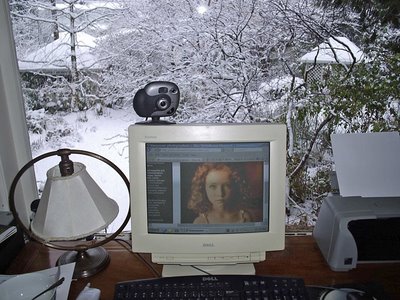
But seeing the white stuff gently flutter down from the relative comfort and safety of my living room was a pleasant experience yesterday. That pleasant experience was shortlived as it contrasted with my taking Hilary (Rebecca's mother and my daughter)in the evening to emergency where she had four stitches to the back of the head. On her way for dinner with us she slipped and fell not far from our house. But then Hilary was born in Mexico and snow is a stranger to both of us.
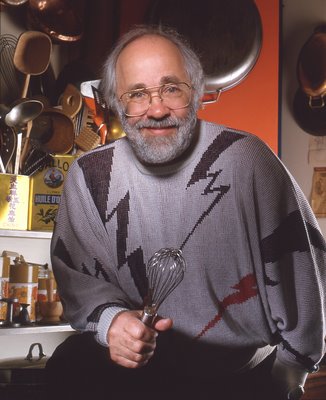
James Barber, 1923 - 2007
Shortly after I photographed Barber in his kitchen in his Commercial area home (perhaps early 90s), I had a business lunch meeting (the well paying Salmon Marketing Council, as they had lots of salmon then) at Cin Cin on Robson. During lunch I had to bring up the subject on how I had photographed Barber. I wanted to describe the apalling state of Barber's pans. They were all blackened and seemed like they had never been properly cleaned. One of the women winked at me but I kept going. Finally she said, "Alex aren't you aware that Christina [Burridge, the other woman and marketing head of the Salmon Marketing Council], is Barber's partner?" I was but I had forgotten. I did not know where to hide from my hideous faux pas.
I first met Barber at the CBC in the mid 70s when I was doing stills. I remember him fondly particularly because he wrote one of the two best restaurant reviews I ever read in Vancouver.
The first one involved Province music writer Tom Harrison who took alternative rocker Art Bergmann to dinner to a ritzy French restaurant. The pair was served and Bergmann demanded to talk to the chef. The chef arrived and Bergmann asked the chef what they were eating. The chef answered in a long description in French. Bergmann countered, "Isn't this pan fried salmon?"
The second one by Barber was similar in nature as it served to call a spade a spade when iit was so. In this instance it happened to be French onion soup. Barber's review appeared perhaps in Vancouver Magazine (I don't quite remember) but it is a review that would probably not be written today in magazines that court restaurant ads. Barber ordered French onion soup in the best of our city restaurants and wrote in which ones the kitchen may have used two ingredients, anathema to Barber himself:
1. Flower used to thicken soup.
2. The use of Bovril (chicken or beef) instead of the real thing.
With Barber sadly gone I hope that one of the finest food writers in Canada, Christina Burridge, continues in her profession. I will never ever forget a third essay on things gourmet. Burridge wrote one on absinthe that made me want to catch the first plane to Paris.
This is a continuation of yesterday's blog with another photo essay from the December/January issue of VLM.
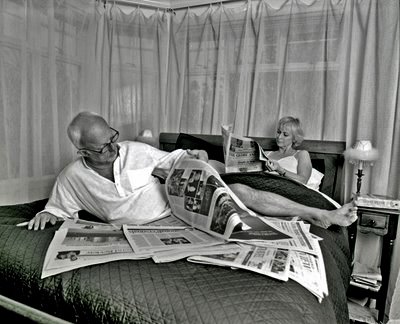
Christopher Gaze is best known as Artistic Director of Vancouver's Bard on the Beach Shakespeare Festival. He has performed in England, in the US and across Canada. Born in England, he trained at the Bristol Old Vic Theatre School. He moved to Vancouver in 1983 and in 1990 founded Bard on the Beach. Gaze also hosts Vancouver Symphony's Tea amd Trumpets series and traditional Christmas concerts. His numerous honours include: induction in the B.C. Entertainment Hall of Fame (2002) and Canada's Meritorious Service Medal (2005). He received a Jessie Award for best supporting actor for his performance in Equus at the Playhouse.
Christopher Gaze's life was transformed on December 1, 2000 when he married Jennifer McMahon. In 2008. Gaze is going to play the title role in Shakespeare's tragedy, King Lear. The VLM interview was conducted in the Gaze bedroom during a mid-October Saturday morning. The Christopher and Jennifer Gaze Kitsilano apartment/townhouse has two floors. I was served a Japanese Genmaincha green tea that had taste overtones of popcorn.
Christopher, what is your favourite room?
I love our bedroom. That's where on Saturday or Sunday morning I get up(I'm first up; I am a morning man) and go upstairs to make the tea and up to the front door to get the papers. When Jennifer wakes, which is shortly thereafter, I take it all in and we lie on the bed and we read and drink our tea for as long as we can before we go out and run in Stanley Park.
How long have you lived here?
I bought it off Raffi in February 1999 and lived here with a bunch of boxes and bits of loose furniture. It all looked very odd, very much bachelor territory. Till I met Jennifer. She moved in, about 20 months later. She transformed it with beauty and light, colour and vitality. She chucked out all of my old boxes, a lot of stuff from days gone by, from both of us, and we kept what we needed and what we loved. It is one of the loveliest places I have ever lived.
What is it like to be in a bedroom that has a bay window by the corner of the bed?
It is beautiful to have the light. I am not bothered by the people outside. I don't think about them. In the springtime there are gorgeous cherry blossoms. And magnolia flowers, too. It's splendid, like living in paradise. When the morning sun comes in here and it bathes and warms it is gorgeous. In the summer it is luxurious and in the winter it is cozy.
What did Jennifer do to your bedroom?
I didn't own a bed. One of the first things we did, even before we became intimate, was to buy a bed. We bought a bed at Parker's. Fortunately Jennifer liked it a great deal. And it is the bed that became our matrimonial bed. And so it was perfect.
© 2007 VLM/Alex Waterhouse-Hayward
Christopher Gaze
More Christopher Gaze
And even more Christopher Gaze
I write and take pictures for a local city magazine called VLM (Vancouver Lifestyles Magazine). I can safely say that before Bob Mercer (both editor and art director) took over the magazine early this year, it was easily one of the worst magazines around. It is fun to work for an editor/art director as a writer photographer. Because of the space restrictions of emerging magazines (with no laundered cash stockpiles) Mercer and I have managed to produce one page profiles that seem to have a lot of content in few words. Here is an example from the current December/ January issue on lawyer Cameron Ward.
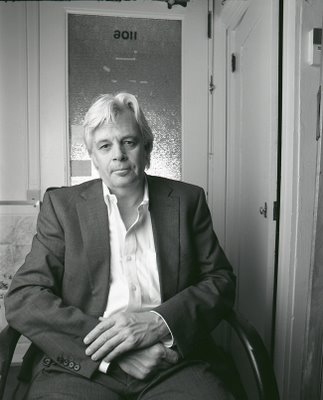
Vancouver lawyer Cameron Ward's office in the Dominion Building is tiny. The glass door makes one imagine that a woman in distress (with a .25 caliber automatic in her purse) might show up at any minute. A glance at the listings for the other occupants of the building (Green Party, etc.) suggests that the common thread is that many have a cause.
Ward, who is married and has two children and loves to play golf with a diverse group of friends ("We all love the game.") recently returned from his favourite course in the world, Royal Dornoch in Scotland. He rejects being labeled a Robin Hood lawyer.
"I don't steal from the rich, "he says. "I don't steal from anybody. I try to assist the poor whether it is working with disadvantaged people in the Downtown Eastside or Aboriginal groups, environmental activists and anti-war protesters. When these folks get tied up in legal battles and important legal principles are at stake, I try to help them because the legal system and process can be daunting."
Montreal-born Ward believes that the plight of the poor can extend to the plight of the Cambie Street Merchants. "They weren't poor when they started. I have one lawsuit pending and I am trying to work behind the scenes to try to achieve a political solution to their nightmare. It is outrageous that government [Federal, Provincial and City, or four levels if you consider Translink and Metro Vancouver] has not stepped in. It is outrageous that government officials who are building a multi-billion-dollar project [The Canada Line] have not set aside a fund that will help the merchants in their difficult time."
Ward is representing Hazel& Co. in the B.C. Supreme Court lawsuit against the members of the public private partnership building the Canada Line, seeking compensatory and punitive damages for business disruption caused by the construction.
"This is truly a David versus Goliath situation. But when I think of that I always remind myself that David Won."
© 2007 VLM/Alex Waterhouse-Hayward

As more and more films deteriorate to glorified music videos or offer a half'n half vision of animation with the real, Rosemary and I have found solace and pleasure viewing the films of channel 46, Turner Classic Movies (TCM). I must even admit that we have some jury-rigged TV trays and we watch films while eating. Recently we viewed Cecil B. de Mille's The Greatest Show On Earth. Host, Robert Osborne made a comment on how this film was one of the last that represented the end of an era. There was hope and redemption in this film. There was little indication of the angst of a possible atomic holocaust. There was no revelation of the extreme greed of modern capitalism that so sadly affects our present times.
In many wasys Frank Capra's It's A Wonderful Life (1946) to me is a similar film. It is a classic three act film/play where we meet the hero in the first act, are introduced to the conflict and villain in the second and see the resolution in the third. But this is a film that somehow escaped my radar because my parents never took me to see it. My first viewing happened in Vancouver in the mid 70s.
Seeing it as a play in the Arts Club Theatre Company's production on the Granville Island stage was a refreshing treat over the yearly viewing of the film as a Christmas tradition. The fine adaptation as a play by Philip Grecian retains elements of the film by intelligent projection of parts of the film as part of the set design.
But my wife, who is a fan of director Dean Paul Gibson (above) wasn't fooled. She (She-who-does-not-like-anything) looked at me with a smile during the intermission and told me play has all kind wonderful Gibson touches. Perhaps she is right. Gibson's touches are based on the humour of a director who happens to be a fine actor and has the potential of being the best stand-up comedian this city has ever seen.
The cast is good but of special note is villain Henry Potter played by Kevin McNulty. I was never convinced by Lionel Barrymore in the film version. Kevin McNulty, who has a passing resemblance to Carroll O'Connor, is believable (scary real) as the modern greedy capitalist. He reminded me of past logging company and energy company executives I have photographed for business magazines and the Globe & Mail.
The whole situation of the huge conglomorate attempting to forcibly take over an independent institution (that is helping the disavantaged acquire homes of their own) parallels what seems to be the ills of Vancouver. At a recent city affairs lecture at Simon Fraser (downtown campus) ex-premier and author, Mike Harcourt said "There is one simple way to solve the problem of the homeless and this is to build them homes."
Or another comparison with the villanous Henry Potter is the situation of Arthur Erickson's Graham House in Horseshoe Bay. The present owner, Shiraz Lalji, wants to build a new, bigger home on the site, which he bought in 1988 for $925,000. He has applied for a demolition permit, which will probably be issued in the next few days. Reporter John Mackie of the Vancouver Sun recently wrote:
Shiraz Lalji is one of three brothers who own West Vancouver's Larco Developments, which owns Park Royal Shopping Centre and recently spent more than $1 billion buying seven buildings from the federal government and then leasing them back for 25 years. In 2006, Canadian Business magazine ranked the Lalji family the 50th richest in Canada, with a net worth of about $928 million.
I am guessing that Lalji, who probably lives in a wonderfully apointed flat in London would stay in Vancouver for a couple of weeks a year. Why would our architectural heritage in any way be of his importance?
But this has to end on a more positive and hopeful note. I am thinking of Sasa Brown (below) who plays the town's "fast girl" Violet Bick. To me she is much more interesting than the angelic and perfect Mary Hatch Bailey played well, as well as the plot allows her to, by Jennifer Lines. When Sasa Brown moves on stage, she moves on stage! And then I spotted those silk stockings with that seam in the back ("Start at the ankle and follow that seam all the way up, until it disappears... ," someone once told me.) on Brown's legs. Plus she wore satin!

In a perfect It's A Wonderful Life, Clarence Oddbody would not give George Bailey the chance to see a world without him being born. It would be a world where he would have married Violet instead of Mary.
---------------------------------------------------------
Addendum
December 6 in the afternoon.
Henry Potter 1, George Bailey 0
Arthur Erickson's Graham house was demolished today.
Norval Morrisseau The Grand Shaman & His Hungarian Son
Wednesday, December 05, 2007
Norval Morrisseau, 1935-2007

Sometime near the end of May 1999, Chris Dafoe, the Western Arts Correspondent in Vancouver for the Globe & Mail called me up most enthusiastically that I had to photograph a native (Ojibwa) artist, Norval Morrisseau with a strange ex-street person of Hungarian extraction Gabor (Gabe) Vadas. Vadas was Morrisseau's "adopted" son ("His kinship with the old man is not recognized by family or law," Dafoe wrote) after they met in the streets of Vancouver or as Dafoe wrote (he had interviewed both Morrisseau and Vadas at Joe Fortes on Thurlow and Robson):
A dozen years ago, those same people [diners at Joe Fortes] might have stepped over both the old Indian and the young Hungarian on their way to this restaurant. In the late 1980s, both Norval Morrisseau and Gabor Vadas were living on the streets of Vancouver. Morrisseau's presence on those streets - the news that he was selling sketches for the price of bottles of booze, sleeping in parks, prone to unintelligible rants, telling people that "to get drunk in Vancouver is the most beautiful thing there is" made national headlines in 1987. He was, after all, one of the most important artists this country had ever produced, a member of the Order of Canada, a man whose work was collected by major galleries across Canada and around the world.
Dafoe finished his fine interview:
As lunch wound down and the coffee grew cold, Vadas continued to talk about life with Norval. When he was asked how their relationship has changed over the years, it became clear that he sees himself s more than just a caretaker or an agent, even more than a son. "Our relationship started out as student and teacher, because Norval is a grand shaman," he said. "I think it has evolved into a relationship of two teachers. Norval has figured out how to get the power and how to hand it down to me. He's taken me as an apprentice. If Norval died tomorrow, he wouldn't be leaving this world, because he would continue to see it through me."
The old Indian looked on silently, through heavy lidded eyes, as his Hungarian son talked excitedly about mystical tales of legend and the power they possess. It is a world the old man knows well, a world that has been much kinder to him than this one.
Chris Dafoe, April 10, 1999 The Globe & Mail
Noël Coward, Hycroft & The Mystery Bassoonist
Tuesday, December 04, 2007

Excuses sometimes happen for very good reasons. For example it is very pleasant to be depressed if one then has the excuse to ameliorate it with the purchase of a pair of shoes or a thick chocolate milkshake at The Red Onion on 41st Avenue in Kerrisdale.

In the case here the excuse is hazy. The excuse is a book I bought for a quarter not too long ago at a book bin in Safeway at Oakridge Centre. It came as a discard from the West Vancouver Memorial Library. It is a 1982 British Edition (Butler & Tanner Ltd) of The Noël Coward Diaries edited by Graham Payn & Sheridan Morley. The picture of Noël Coward may have been taken in the 60s judging by the tie and the vintage typewriter (could it be a Hermes or an Olivetti?). But the other photos could represent the Coward years earlier in the 20s and 30s.

The diary covers from 1941 to 1969 which is way off, to match the look of the photographs I took perhaps 15 years ago at Hycroft (the University Women's Club of Vancouver) at 16th and MacRae Avenue. The clothing and underwear came from the collection of Ivan Sayers and the Vancouver Museum.
But the excuse is sufficient for me to note here some of my favourite entries of this book that never leaves my bedside table.

Saturday August 6 1960 Paris
....I have just read carefully, Waiting for Godot, and in my considered opinion it is pretentious giberish, without any claim of importance whatsoever. I know that it received great critical acclaim and I also know that it's silly to go on saying how stupid the critics are, but this really enrages me. It is nothing but phoney surrealism with occasional references to Christ and mankind. It has no form, no basic philosopy and absolutely no lucidity. It's too conscious to be written off as mad. It's just a waste of everybody's time and it made me ashamed to think that such balls could be taken seriously for the moment.

To continue in this carping vein, I have also read The Charioteer by Miss Mary Renault. Oh dear, I do wish well-intentioned ladies would not write books about homosexuality. This one is turgid, unreal and so ghastly earnest. It takes the hero - soi-disant - three hundred pages to reconcile himself to being queer as a coot, and his soul-searching and deep, deep introspection is truly awful. There are 'queer' parties in which everyone calls everyone 'my dear' a good deal, and over the whole book is a shimmering lack of understanding of the subject. I'm sure the poor woman meant well but I wish she'd stick to recreating the glory that was Greece and not fuck about with dear old modern homos.
Tuesday 11 December 1962 London
....On Monday I lunched with Joyce and did some shopping, and in the evening took Rebecca to the premiere of Lawrence of Arabia. It was a grand gala for the Queen, Prince Philip and all. A truly magnificent picture, brilliantly directed and acted and superbly photographed. Peter O'Toole very fine and far, far more attractive than Lawrence could ever hope to be. I said to him afterwards that if Lawrence had looked like him there would have been many more than twelve Turks queueing up for the buggering session....

The woman (right) on the first photograph above is Patricia Keen one of the bassoonists of the Vancouver Philharmonic Orchestra. She is also the woman in the second photograph, right.
Grasshoppers, Butterflies & Snow
Monday, December 03, 2007

While snorkel diving near the Gulf of Mexico Isla Sacrificios, off Veracruz I happened to step on a sea urchin. The Mexican Red Cross could not help me much as most of the needles broke off, painfully, on the surface of my feet. A year later in 1967 the last of the glass-like needles was ejected by my body. Since then I have had the attitude that the sea is out to get me and that I must be resolute and careful when in it. I feel the same about snow. I respect both.
In my years in Argentina the skies brought us plagues of grasshoppers or white butterflies in the millions. Pamperos, or winds from the interior, brought dust that almost clouded the sky. But I never saw snow. I could look at the horizon on the pampa, turn my head around 360 degrees with nothing, except maybe a lonely ombú ( a large tree-like shrub of the Argentine Pampa), breaking the pleasant monotony. The closest I ever got to snow in Buenos Aires was watching my father spray our Chrismas tree with a can of Noma Snow, a few days before December 25th with the contrast of temperatures that hovered around 35. It is summer down there.
My first glimpse of snow, real snow, not the picture kind, happened in Mexico City in 1955. When I arrived there, the skies were transparent. There was no pollution to hide the beautiful volcanoes, Popocatepetl and Ixtaccihuatl. I did not touch snow until sometime in the late 60s when it snowed at higher elevations near Mexico City in a place called El Desierto de los Leones (the Desert of the Lions). It melted before I could decide if I liked it or not.
In my first year in Vancouver, around late March 1976, while working at Tilden Rent-A-Car (on Alberni Street, across the street from the Ritz Hotel), I predicted snow. I was told by everybody working there that I knew nothing of snow and that it never snowed in Vancouver in March. My fellow workers made a bet with me and the prize for the winner would be a coconut cream pie (my fave) from the White Spot, around the corner on Robson Street (at the time there was one between Thurlow and Burrard). It did snow and I was forced to eat the whole pie in one sitting. My knowledge of things snow has not improved since I made the decision to never eat coconut pie again.
I don't ski as I am afraid of breaking something. As a freelancer I would not be able to make money during such a mishap. Driving in the snow is something I try to avoid but I must admit that Rosemary's Audi gives me a tad more confidence. If I don't have more confidence it is that sometime in 1977, Rosemary and I slid helplessly down Prince Rupert to Grandview in our Arctic White (that was the name of the colour) Mexican-made VW Beetle. Our beloved car was only the 10th or 11th in an eventual 28 car pileup that happened because of the the icy conditions during a January snow fall. It was the totalling of the Mexican Beetle that led us to buy the worst car of our life (after those two Fiats and that Maserati), a used Rabbit that suddenly stopped on the old Connaught Bridge (the one with wood instead of pavement) while almost being rear ended by a Cambie Street trolley.

But seeing the white stuff gently flutter down from the relative comfort and safety of my living room was a pleasant experience yesterday. That pleasant experience was shortlived as it contrasted with my taking Hilary (Rebecca's mother and my daughter)in the evening to emergency where she had four stitches to the back of the head. On her way for dinner with us she slipped and fell not far from our house. But then Hilary was born in Mexico and snow is a stranger to both of us.
James Barber, 1923 - 2007 & French Onion Soup

James Barber, 1923 - 2007
Shortly after I photographed Barber in his kitchen in his Commercial area home (perhaps early 90s), I had a business lunch meeting (the well paying Salmon Marketing Council, as they had lots of salmon then) at Cin Cin on Robson. During lunch I had to bring up the subject on how I had photographed Barber. I wanted to describe the apalling state of Barber's pans. They were all blackened and seemed like they had never been properly cleaned. One of the women winked at me but I kept going. Finally she said, "Alex aren't you aware that Christina [Burridge, the other woman and marketing head of the Salmon Marketing Council], is Barber's partner?" I was but I had forgotten. I did not know where to hide from my hideous faux pas.
I first met Barber at the CBC in the mid 70s when I was doing stills. I remember him fondly particularly because he wrote one of the two best restaurant reviews I ever read in Vancouver.
The first one involved Province music writer Tom Harrison who took alternative rocker Art Bergmann to dinner to a ritzy French restaurant. The pair was served and Bergmann demanded to talk to the chef. The chef arrived and Bergmann asked the chef what they were eating. The chef answered in a long description in French. Bergmann countered, "Isn't this pan fried salmon?"
The second one by Barber was similar in nature as it served to call a spade a spade when iit was so. In this instance it happened to be French onion soup. Barber's review appeared perhaps in Vancouver Magazine (I don't quite remember) but it is a review that would probably not be written today in magazines that court restaurant ads. Barber ordered French onion soup in the best of our city restaurants and wrote in which ones the kitchen may have used two ingredients, anathema to Barber himself:
1. Flower used to thicken soup.
2. The use of Bovril (chicken or beef) instead of the real thing.
With Barber sadly gone I hope that one of the finest food writers in Canada, Christina Burridge, continues in her profession. I will never ever forget a third essay on things gourmet. Burridge wrote one on absinthe that made me want to catch the first plane to Paris.
Christopher Gaze - In My Room
Sunday, December 02, 2007
This is a continuation of yesterday's blog with another photo essay from the December/January issue of VLM.

Christopher Gaze is best known as Artistic Director of Vancouver's Bard on the Beach Shakespeare Festival. He has performed in England, in the US and across Canada. Born in England, he trained at the Bristol Old Vic Theatre School. He moved to Vancouver in 1983 and in 1990 founded Bard on the Beach. Gaze also hosts Vancouver Symphony's Tea amd Trumpets series and traditional Christmas concerts. His numerous honours include: induction in the B.C. Entertainment Hall of Fame (2002) and Canada's Meritorious Service Medal (2005). He received a Jessie Award for best supporting actor for his performance in Equus at the Playhouse.
Christopher Gaze's life was transformed on December 1, 2000 when he married Jennifer McMahon. In 2008. Gaze is going to play the title role in Shakespeare's tragedy, King Lear. The VLM interview was conducted in the Gaze bedroom during a mid-October Saturday morning. The Christopher and Jennifer Gaze Kitsilano apartment/townhouse has two floors. I was served a Japanese Genmaincha green tea that had taste overtones of popcorn.
Christopher, what is your favourite room?
I love our bedroom. That's where on Saturday or Sunday morning I get up(I'm first up; I am a morning man) and go upstairs to make the tea and up to the front door to get the papers. When Jennifer wakes, which is shortly thereafter, I take it all in and we lie on the bed and we read and drink our tea for as long as we can before we go out and run in Stanley Park.
How long have you lived here?
I bought it off Raffi in February 1999 and lived here with a bunch of boxes and bits of loose furniture. It all looked very odd, very much bachelor territory. Till I met Jennifer. She moved in, about 20 months later. She transformed it with beauty and light, colour and vitality. She chucked out all of my old boxes, a lot of stuff from days gone by, from both of us, and we kept what we needed and what we loved. It is one of the loveliest places I have ever lived.
What is it like to be in a bedroom that has a bay window by the corner of the bed?
It is beautiful to have the light. I am not bothered by the people outside. I don't think about them. In the springtime there are gorgeous cherry blossoms. And magnolia flowers, too. It's splendid, like living in paradise. When the morning sun comes in here and it bathes and warms it is gorgeous. In the summer it is luxurious and in the winter it is cozy.
What did Jennifer do to your bedroom?
I didn't own a bed. One of the first things we did, even before we became intimate, was to buy a bed. We bought a bed at Parker's. Fortunately Jennifer liked it a great deal. And it is the bed that became our matrimonial bed. And so it was perfect.
© 2007 VLM/Alex Waterhouse-Hayward
Christopher Gaze
More Christopher Gaze
And even more Christopher Gaze
Cameron Ward - Robin Hood, Not
Saturday, December 01, 2007
I write and take pictures for a local city magazine called VLM (Vancouver Lifestyles Magazine). I can safely say that before Bob Mercer (both editor and art director) took over the magazine early this year, it was easily one of the worst magazines around. It is fun to work for an editor/art director as a writer photographer. Because of the space restrictions of emerging magazines (with no laundered cash stockpiles) Mercer and I have managed to produce one page profiles that seem to have a lot of content in few words. Here is an example from the current December/ January issue on lawyer Cameron Ward.

Vancouver lawyer Cameron Ward's office in the Dominion Building is tiny. The glass door makes one imagine that a woman in distress (with a .25 caliber automatic in her purse) might show up at any minute. A glance at the listings for the other occupants of the building (Green Party, etc.) suggests that the common thread is that many have a cause.
Ward, who is married and has two children and loves to play golf with a diverse group of friends ("We all love the game.") recently returned from his favourite course in the world, Royal Dornoch in Scotland. He rejects being labeled a Robin Hood lawyer.
"I don't steal from the rich, "he says. "I don't steal from anybody. I try to assist the poor whether it is working with disadvantaged people in the Downtown Eastside or Aboriginal groups, environmental activists and anti-war protesters. When these folks get tied up in legal battles and important legal principles are at stake, I try to help them because the legal system and process can be daunting."
Montreal-born Ward believes that the plight of the poor can extend to the plight of the Cambie Street Merchants. "They weren't poor when they started. I have one lawsuit pending and I am trying to work behind the scenes to try to achieve a political solution to their nightmare. It is outrageous that government [Federal, Provincial and City, or four levels if you consider Translink and Metro Vancouver] has not stepped in. It is outrageous that government officials who are building a multi-billion-dollar project [The Canada Line] have not set aside a fund that will help the merchants in their difficult time."
Ward is representing Hazel& Co. in the B.C. Supreme Court lawsuit against the members of the public private partnership building the Canada Line, seeking compensatory and punitive damages for business disruption caused by the construction.
"This is truly a David versus Goliath situation. But when I think of that I always remind myself that David Won."
© 2007 VLM/Alex Waterhouse-Hayward






